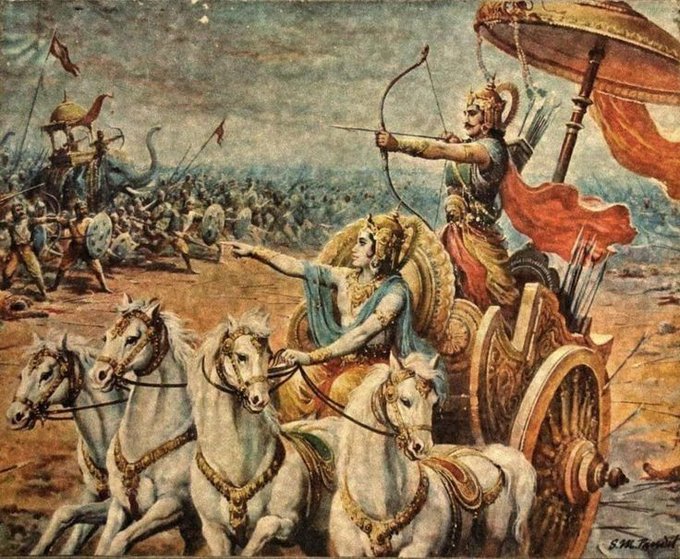---
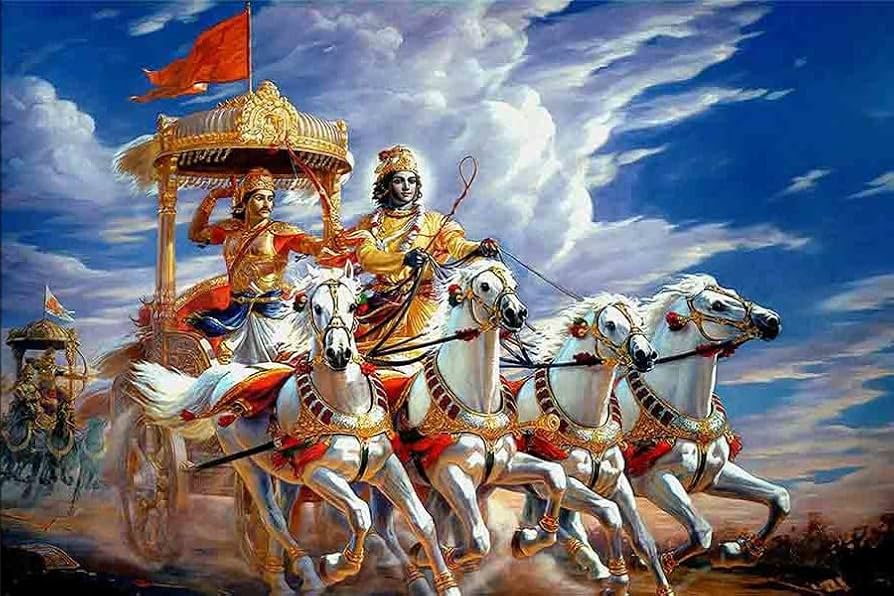
Ok, so far I've already shared about how I realised the absolute truth, which is the cosmic time. In brief, after reading ancient texts from the Vedas and the Bhagavad Gita, I understood that the Kaal chakra, or cosmic time (different from clock time), exists in the universe. It's simply based on past-present-future cycles of events. So, our clocks measure time as a discrete value like 1 second, etc., but the cosmic time is governed by continuous events (a particular event followed by another event, and so on). And past - present - future is just a cycle. So past is the present, present is the future, and future is the past. What we have experienced (past) is actually part of the present. The present we think we're living, is actually part of the future (free will). And the future we envision is actually the past we've lived or experienced in some other parallel universe or world (lived experience). The past, present and future in cosmic time is different from that in clock time. In clock time it simply means the time passed as the past, the time passing as the present, and the time to come as the future. But in cosmic time, it's based on experiences (because it's events based), hence past is part of your present experience(s), present or (plausible) free will is part of the future you're deciding to live, and future you see in mind is the past you've already lived somewhere and as it's in a cycle that you sometimes reach a similar future and sometimes not (because it's governed by both free will as well as the cycle of cosmic time, hence we say that the future is undefined, yet we can evaluate probabilities and archetypes based on the similarities of past (clock time) events). So, that's how the cycle of cosmic time works, and past-present-future are all connected. So logically (not saying scientifically YET), time travel is possible in some way.
Now we're entering the world of Esoteric science. Esoteric science is also a science, but it's not considered scientific because people only believe what they understand. But just because some things are not understood by everybody doesn't mean it's false. We all know the proverb that Equality is a myth. Well, in the Esoteric world as well, not everyone (at their current state) has access to understand the spiritual world (they've access to knowledge but not the experience).
From my realizations, I understood that the absolute truth is the cosmic time, wealth is energy, health, relationships and feelings are karma, and free will, righteous actions and transformations are our Dharma. Let's understand what's the difference between karma and dharma. In spiritual world, it's believed that living beings have souls, and karma is the consequences or reactions to the actions you took in your past life, that you have to face in your reincarnation (if) of your soul in this life. Whereas, dharma is your free will actions you can take in this life that will lead you towards a certain future in this life or in the next. So basically, dharma leads to karma and can help you get out of your karmic loops. Sadhana or yoga meditations also helps to get out of karmic loops as they provide us enlightenment to see beyond our karmic burdens, and leads us in the path of our dharma.
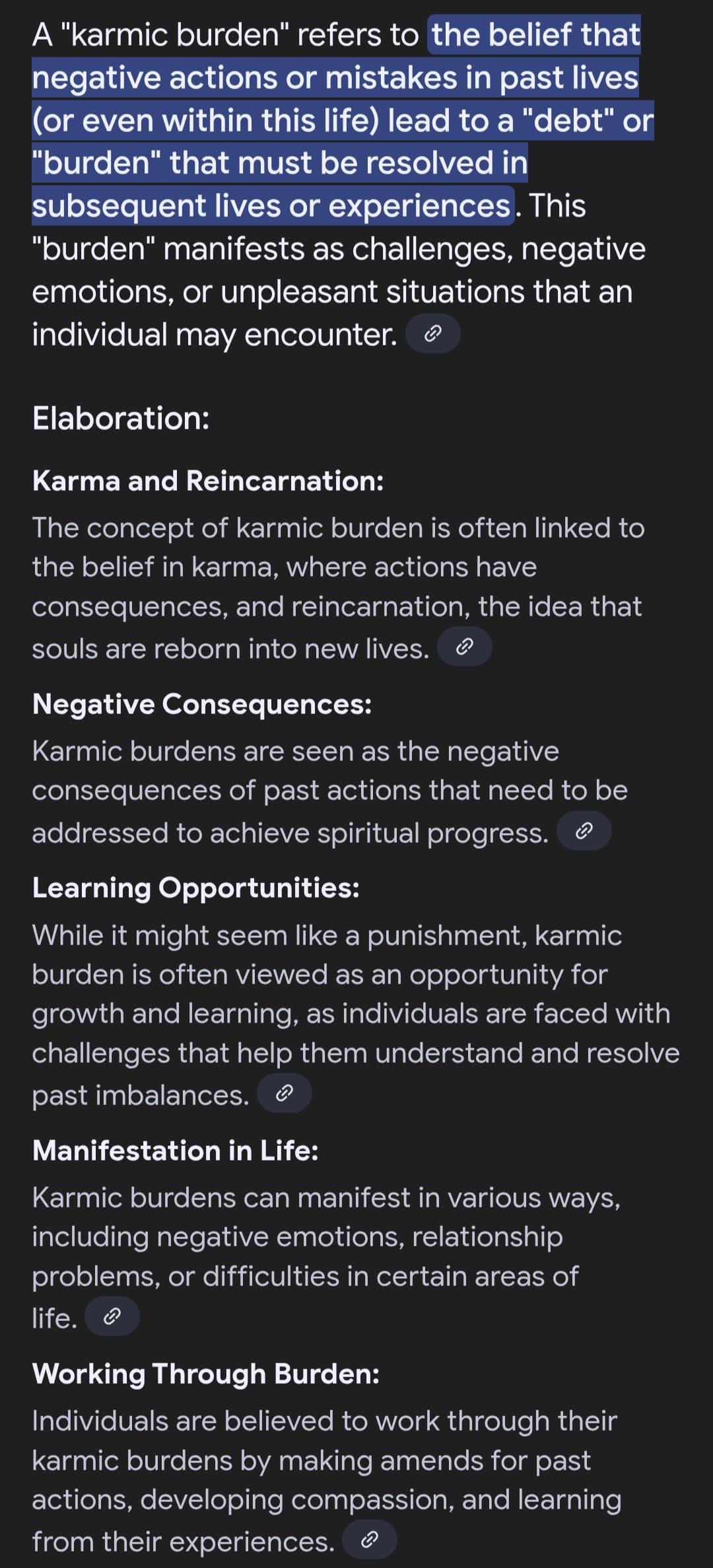
Normally, people get into spirituality or esoteric studies when they face some major crisis in their life that they don't understand, because nature brings events in life that forces transformation. Hinduism is one of the oldest religions to exist, and it didn't originate from a single person. Instead the name Hinduism as a religion was given by the Britishers when they colonized India in 19th century. According to Hindu mythology, it is believed that each Yuga comes to an end when an avatar of lord Vishnu restores dharma to maintain cosmic balance.
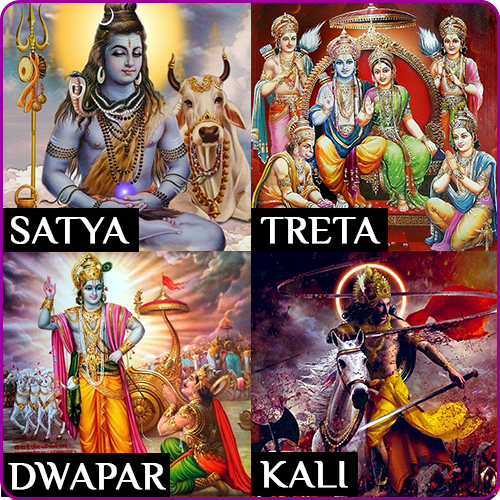
In Hindu cosmology, there are four Yugas namely Satya Yuga (the Golden age), Treta Yuga (Silver age), Dvapara Yuga (Bronze age) and Kali Yuga (Iron age). Each yuga represents a stage in the cycle of creation and dissolution of the universe, with a gradual decline in virtue and morality as time progresses. There are different theories that state the timeline of one Yuga is 12000 years based on revolution of the Sun around another super star in the cosmos, while some theories state a more grounded timeline that each Yuga is merely 2000 years old, as it's hard to believe that the civilizations mentioned in scripts existed millions or thousands of years ago.
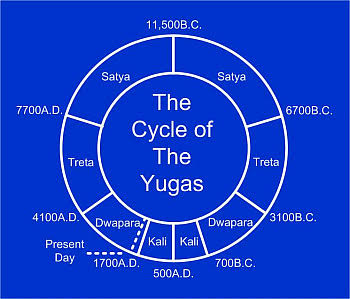
And currently, the most famous theories believe that we live in the Kali yuga, so most people in this era have problems in life, so 6th, 8th and 12th house themes, such as, medical sciences, competitive fields, sudden wealth, investments, occults, startups, spirituality, peace, etc., become important. Therefore, astrology and esoteric sciences become important in this era.
As we know, the absolute truth is the cosmic time, i.e cycle of events. So it's highly possible that Tarot reading (where random cards are picked and meanings are extracted from it) and iChing (where a hexagonal dice is rolled and based on the reading, some meaning is extracted) work based on cosmic time. So, when the card is picked or the dice is rolled out, the result is based on what the cosmic time allowed for that particular energy at that time. Like, you must have heard the saying - the answers always lies in the universe, we only need to ask the right questions. Similarly, I think in the case of casting dice and picking cards, the result (answer) is predefined but the question we ask or the situation (event constraint) is linked to that answer only. And because there are only limited cards and limited dice rolls, the results are not highly personalised but near approximate, which were created and predefined by the founders of these methods after lots of trials and errors (method 1 - Western method) or through perception (method 2 - Eastern method). Otherwise, if we had (or we already have but it's hidden - similar to how magic works) any way to communicate with the universe through it's medium, then we could get accurate answers or basically future predictions. So, questions don't create answers; instead, answers already exist, and we only happen to realise the questions at the right cosmic time (based on our experiences through events).
Coming to the methods of esoteric sciences. It's not governed by simple mathematics or quantitative laws like in the sciences. It's based on qualitative laws, especially I found two prime methods from the east and the west history. Western esoteric science is mostly based on thoughts and intelligence. It's more psychological analysis than physiological experiences. The western scholars interpreted dreams or deep thoughts or inner realizations, etc. So it's very mentally based. But eastern esoteric science is based on instincts, intuitions, insights, perceptions, etc. It's not psychological first, it's rather consciousness first. Like, ramdomly getting a method through intuition, or seeing a formula on a rock or an animal back, or perception of a study through deep meditation, without basing much of psychological thoughts and experiences, it's more based on physiological instincts and awakenings. So both have different procedures and accuracy, but similar results, because the absolute truth prevails.
The absolute truth is cosmic time, and cosmic time is a cycle of events, and events are experiential. So spirituality is focused on experience. That's why meditation and yoga leads to spirituality because it helps us detach from our illusions and gain perspectives from the universe beyond our senses, through Kundlini awakening.
Kundalini means coiled like a serpent, which represents the dormant energy at the base of our spine in the root chakra or Muladhara, and it's awakened when that energy, i.e, Shakti, flows through the spine through nadis in spiral form through all chakras and reaches the crown chakra or Sahasrara, i.e Shiva. So, kundalini awakening (metaphorically) happens when Shakti meets Shiva. In kundalini tantra, it is said that when kundalini awakening is uncontrolled, it makes the person Kali, and when it is controlled, it makes them Durga (metaphorical representation of hindu god Shiva and goddess Parvati (Shakti, Kali, and Durga are her different forms) as divine feminism and divine masculinity).
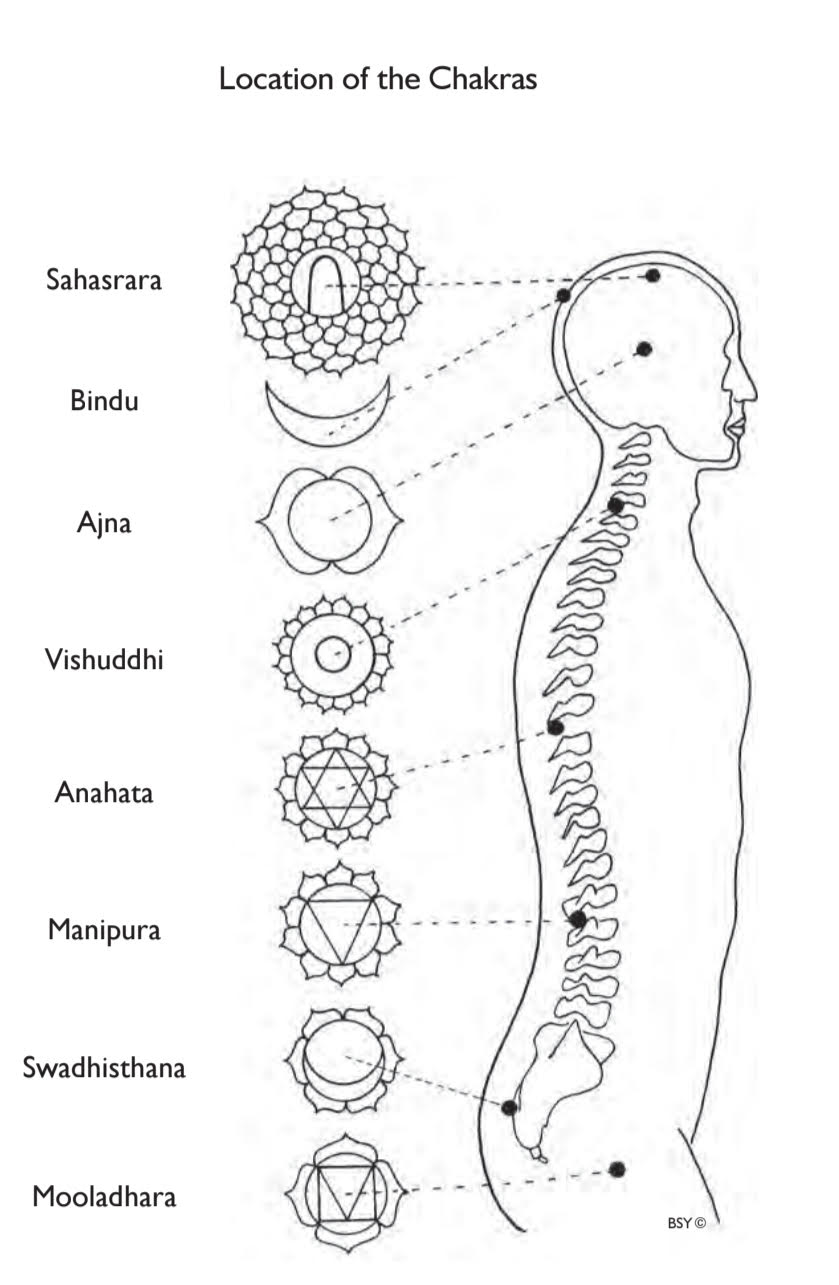
Different chakras and their purposes in short (there's a whole study on this in depth):
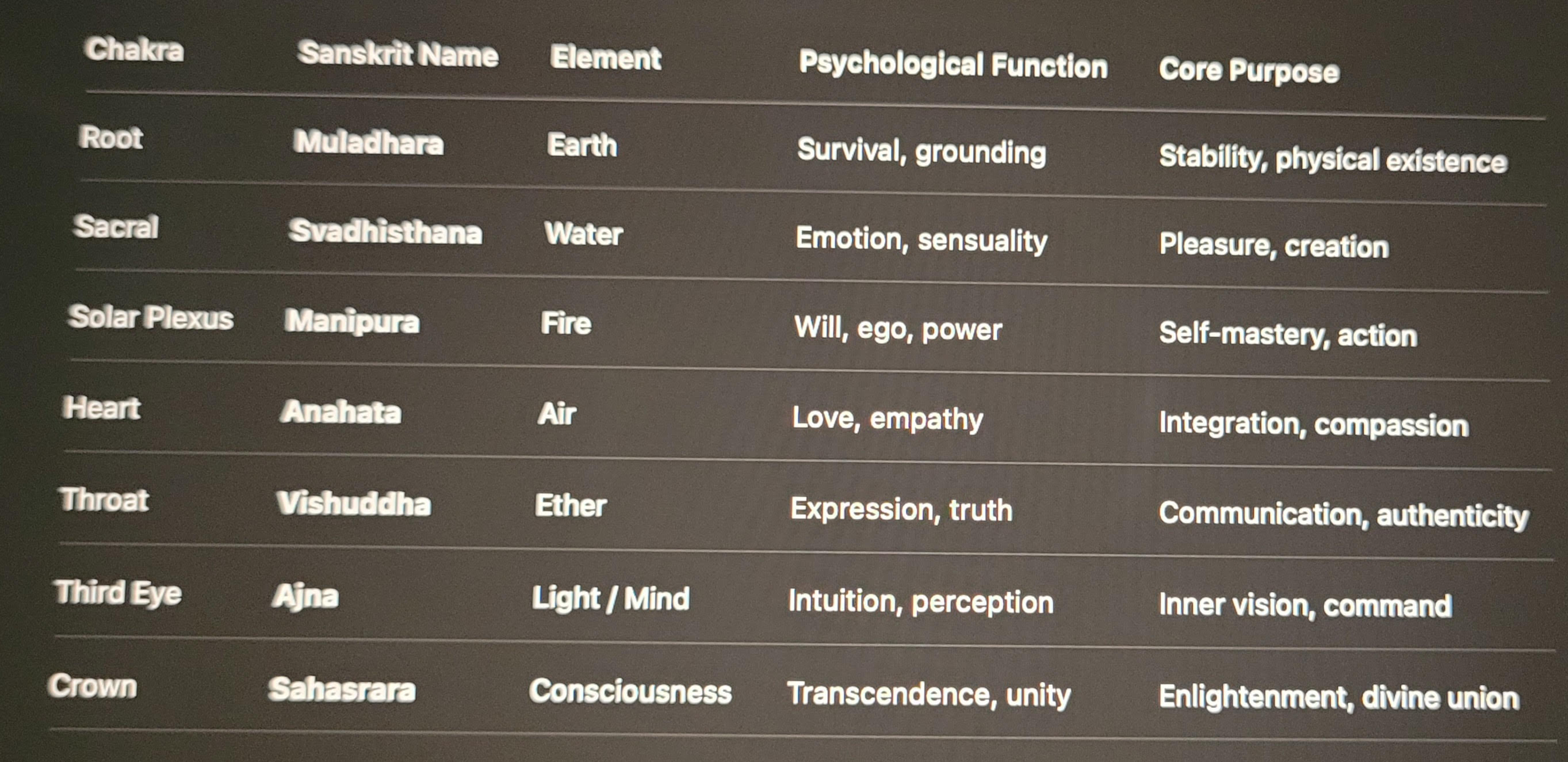
For kundalini awakening, the shakti or the consciousness flows through different nadis (means flow) in the body. There are two kinds of shaktis: prana shakti (life force or vital force) and manas shakti (mental force). According to tantras there are 72000+ nadis in our body, but there are 10 main channels, and out of them, 3 nadis are most important -
Ida, Pingala and Sushumna. Ida nadi controls all mental processes, Pingala nadi controls all vital forces, and Sushumna nadi is the channel for the awakening of spiritual consciousness. Sushumna flows through the inside of central canal of spinal cord, and Ida and Pingala flow on the outer layer within the vertebral column. They begin from mooladhara and meet each other at every chakra, so they move in the form of a spiral, interconnecting at each chakra, moving from down to reach above.

When kundalini shakti awakens, consciousness passes through Sushumna nadi from Mooladhara chakra up to Ajna chakra. And all this can be basically achieved (not guaranteed) through deep yoga meditations.
Imagine the body as the chariot, the soul as the lord of the chariot, the intellect (or the discriminative) as the driver of the chariot, the mind as the reins attached to the horses, the senses as the horses, and the sense objects as the roads. When the soul is united with the body, mind and senses, then one can truly attain the highest state of Yoga or meditation, and practice it consistently. The mystical tree, or the inverted tree, or the tree of life or knowledge represents that mooladhara or root chakra is not the root centre, the real root is the brain, so one has to reach it from root chakra to ajna chakra and above to gain mastery over self or body i.e leaves and branches and trunk.
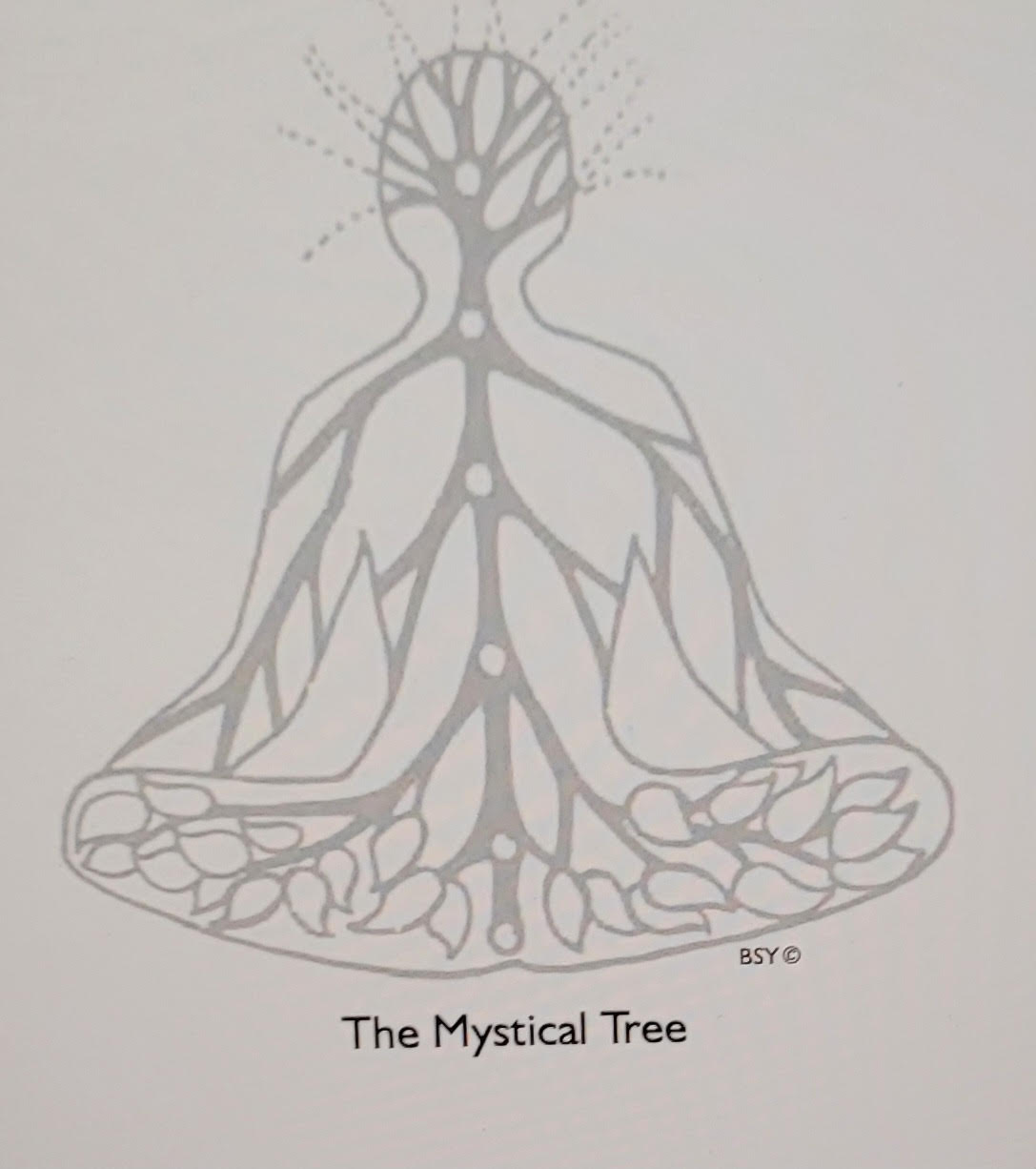
According to Neuroscience, the Cerebrospinal fluid might be the vehicle for Kundalini awakening, as the receiver and transmitter of energy vibrations and information.
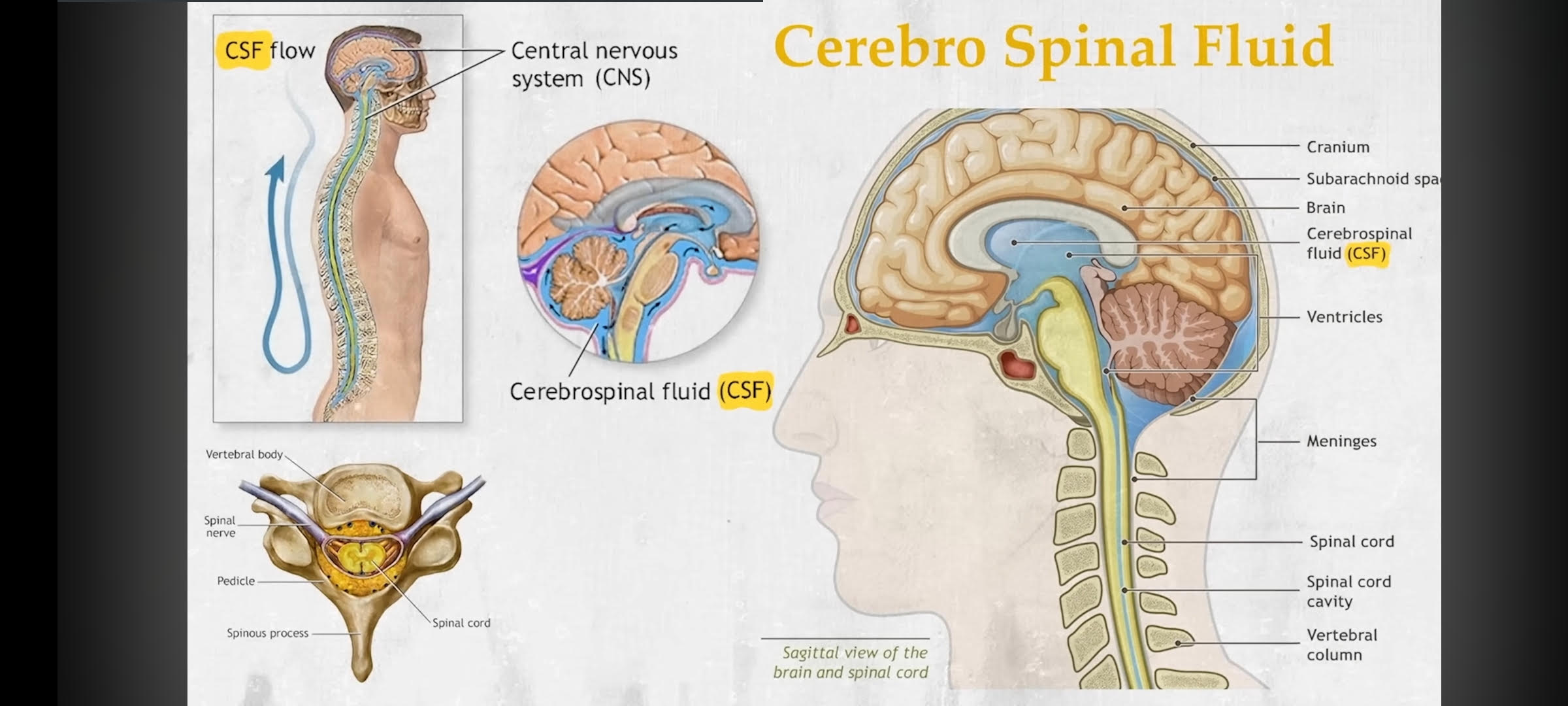
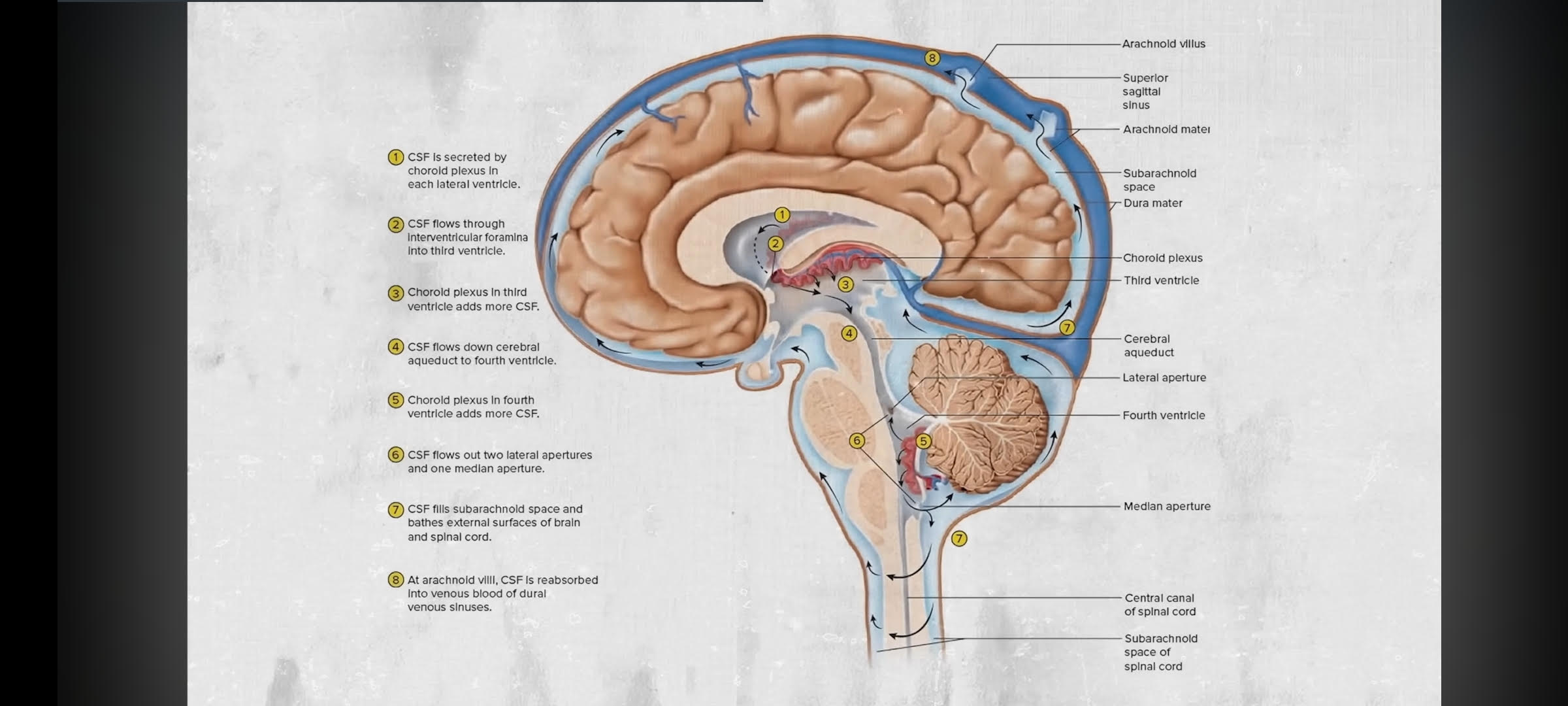
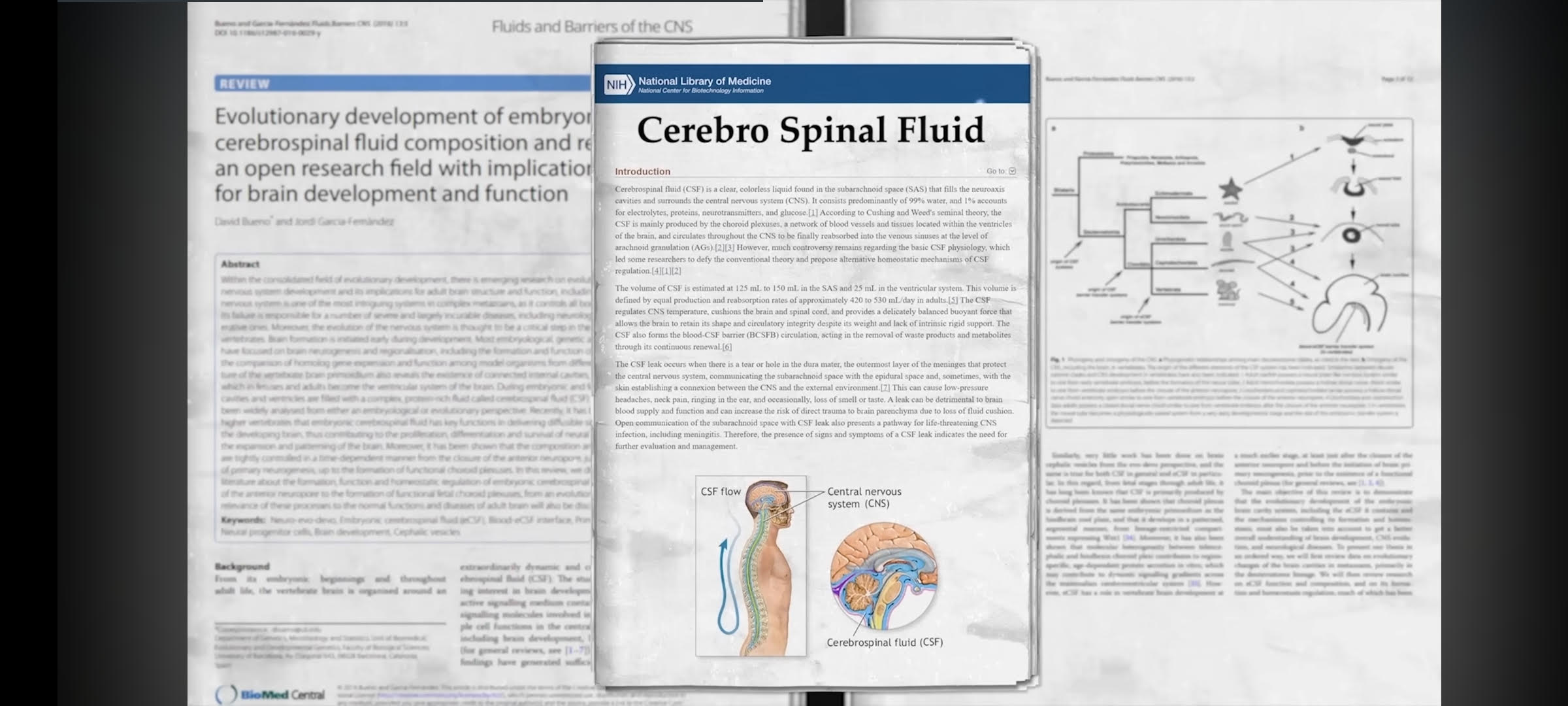
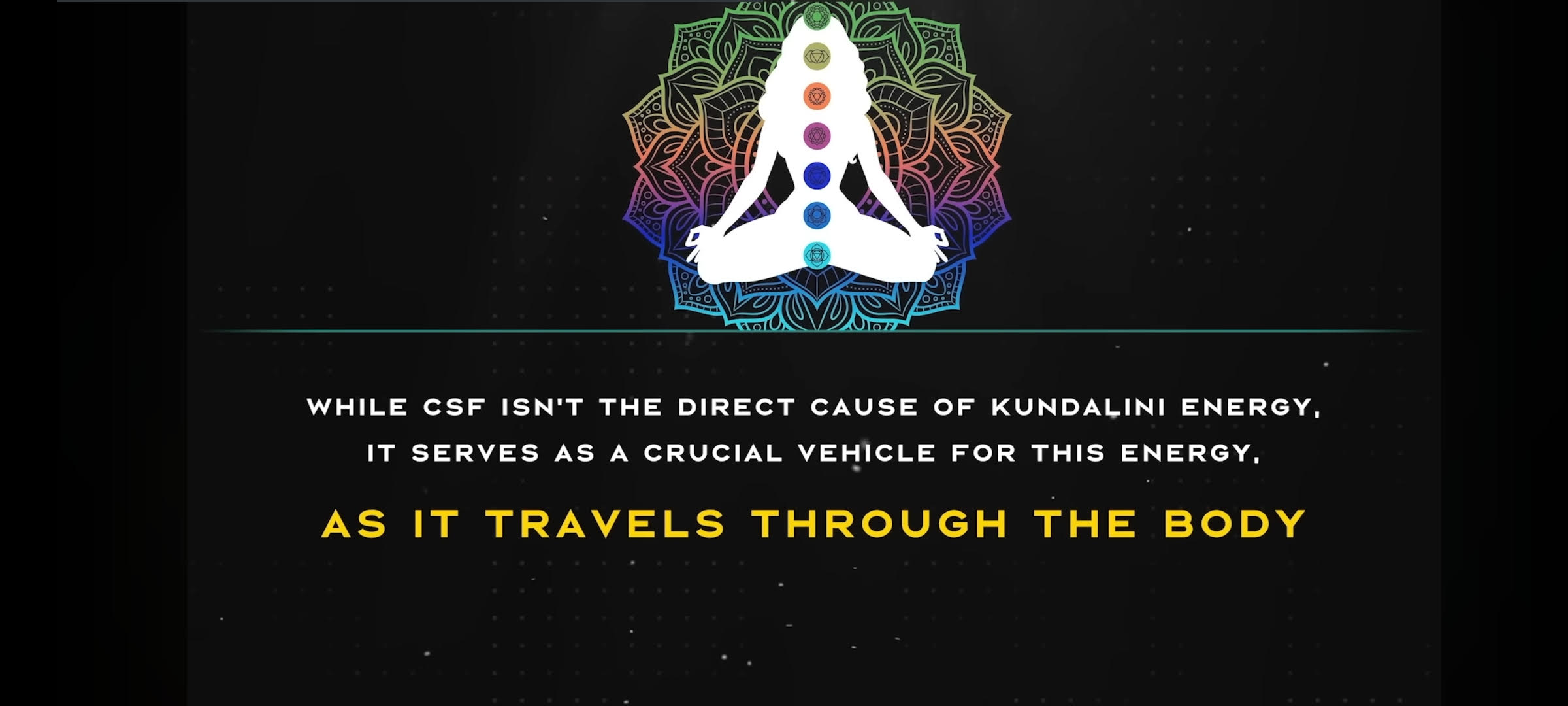
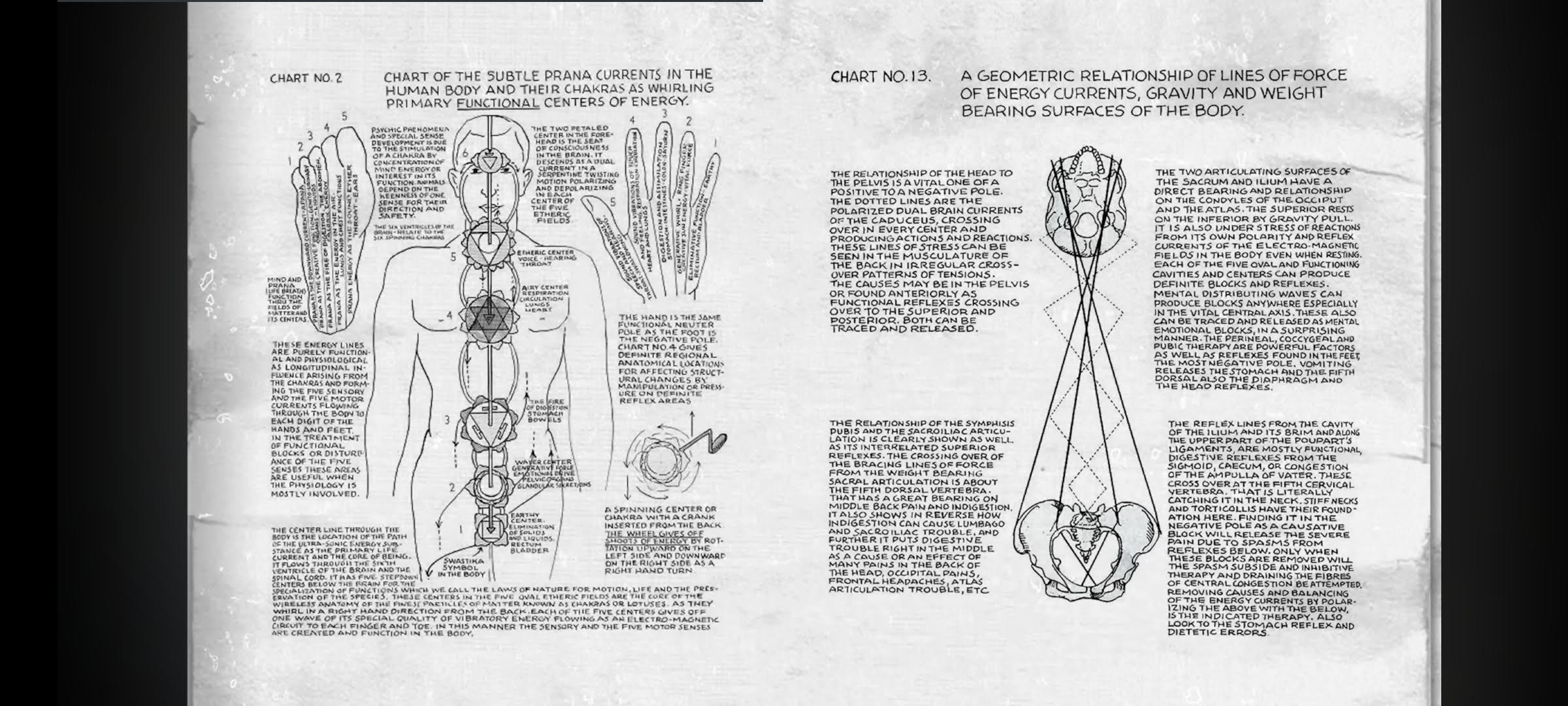



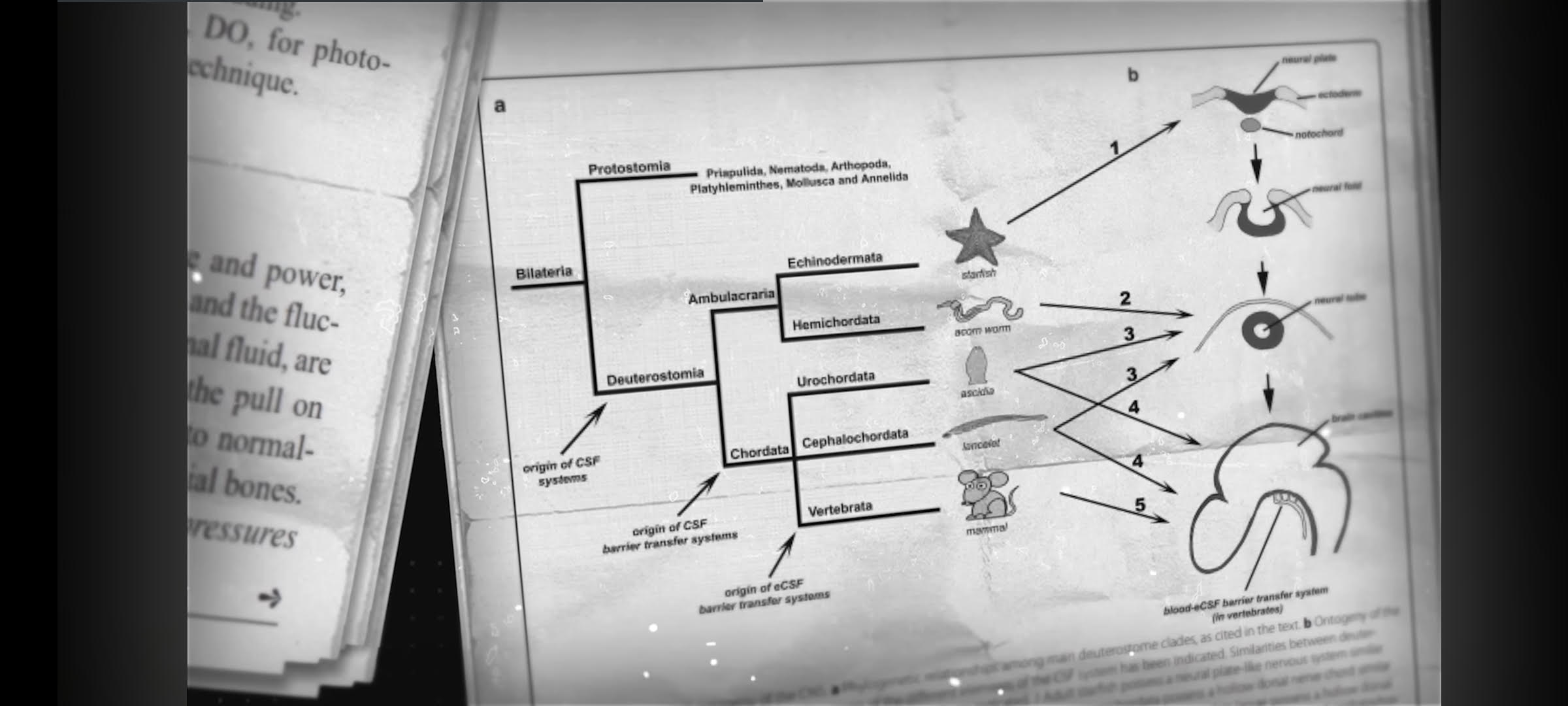
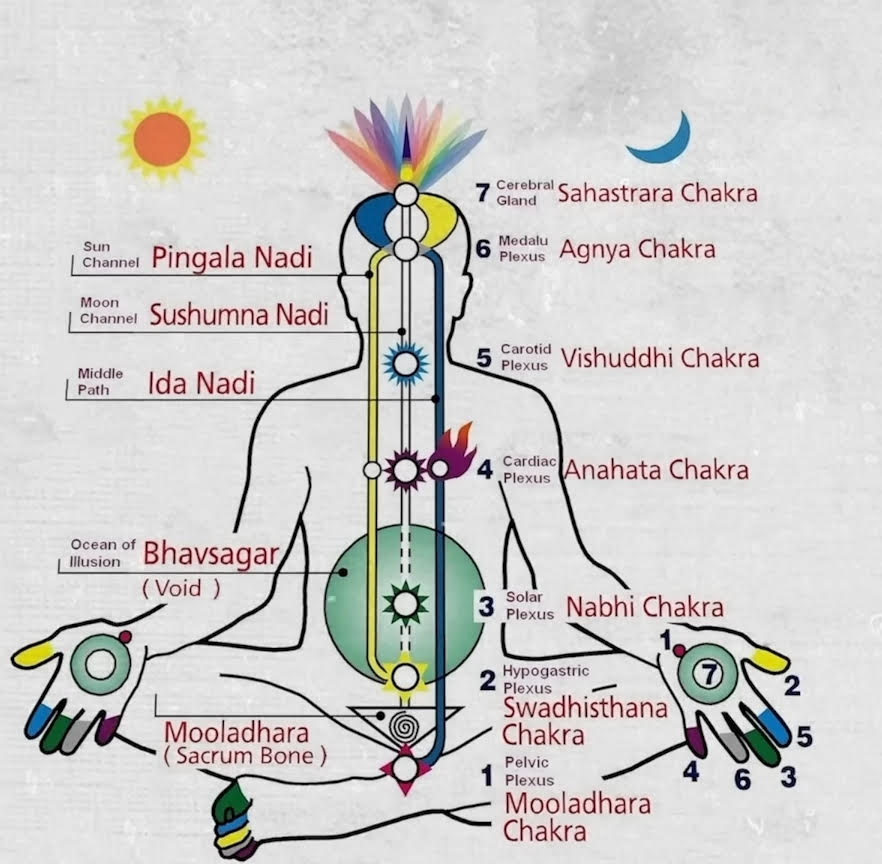
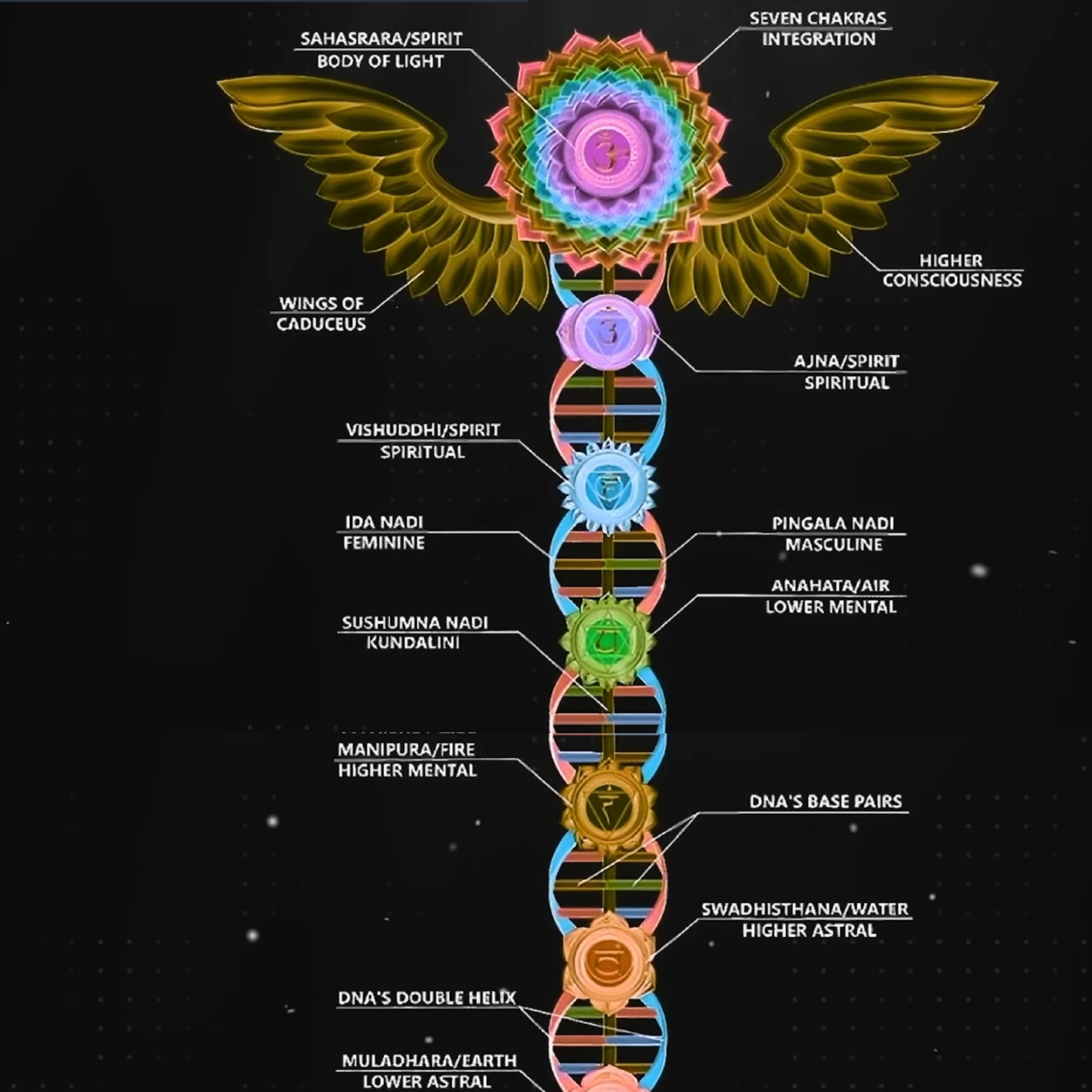
Here's a fun technique. If you want to use your right brain (creativity, etc.), you should breathe with your left nostril, and if you want to use your left brain (logic, etc.), you should breathe with your right nostril. Similarly, you can also check which brain is prominently working at the moment by checking which nostril is air passing through in your nose. You can use this technique during decision-making by activating the brain that is required more for a particular scenario.
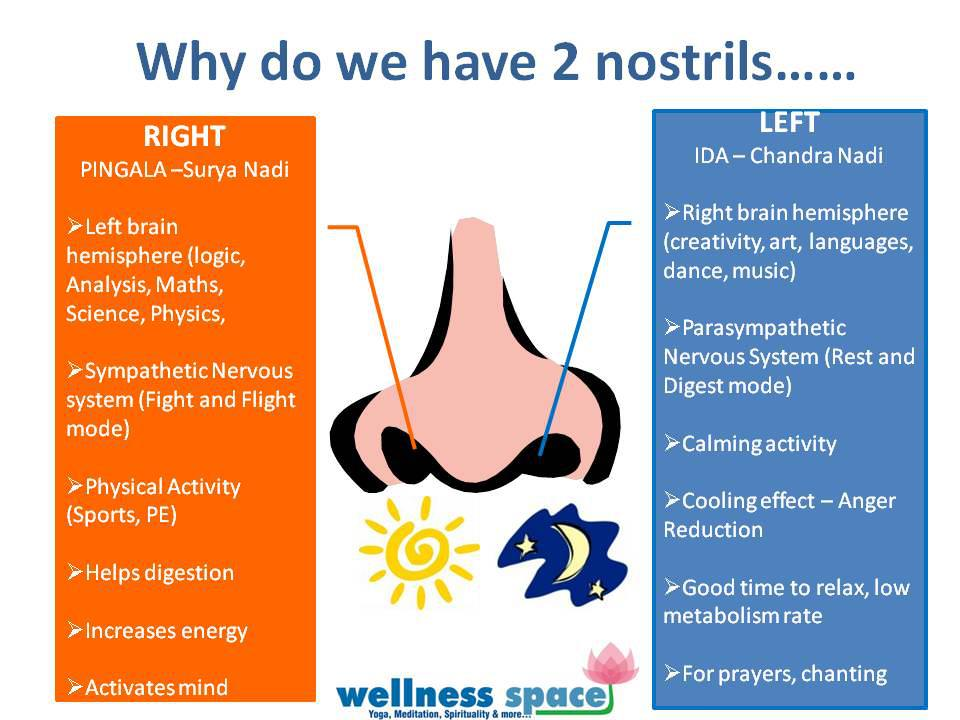
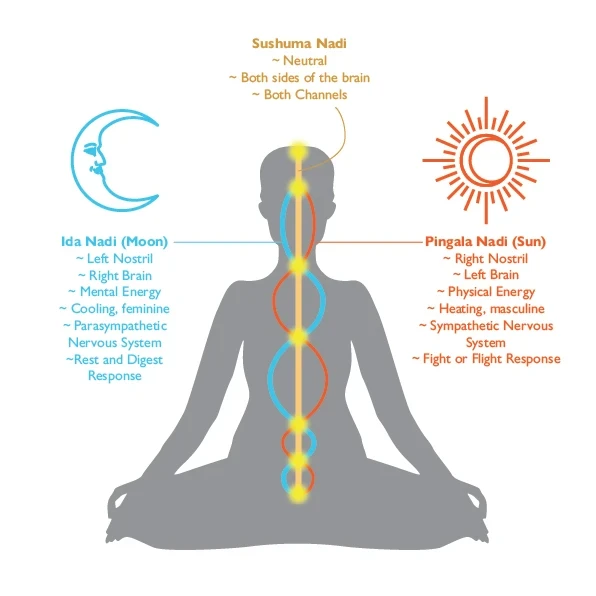
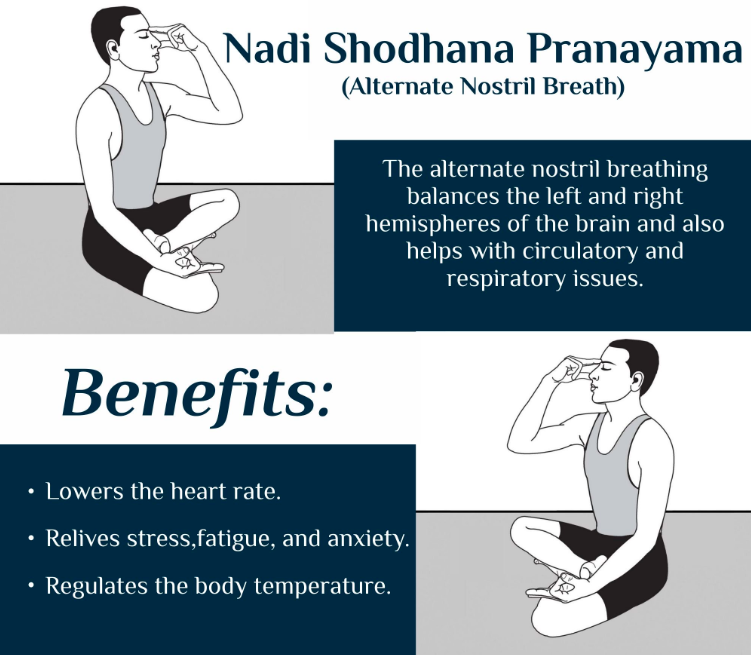
Now that we're discussing neuroscience (later on I also want to get into quantum consciousness a little bit), there's some references between our brain physiology, the cosmic planets, and the numbers and alphabets sounds (phonemes). It is very complex and intuitive that it'll seem almost speculative, so we'll try to carefully correlate because some information can be noise (that’s where mathematical permutations and combinations and probability fails, and intuitions and perceptions come into play).
As you know, the rishis or the yogis from ancient ages, used to deeply meditate to perceive the information from the universe (kinda similar to how Ramanujan used to get formulas while sitting in temple). So, according to yogis, there's cosmic forces in planets whose energy affects our brain, and hence shapes our decision making and how we experience events.
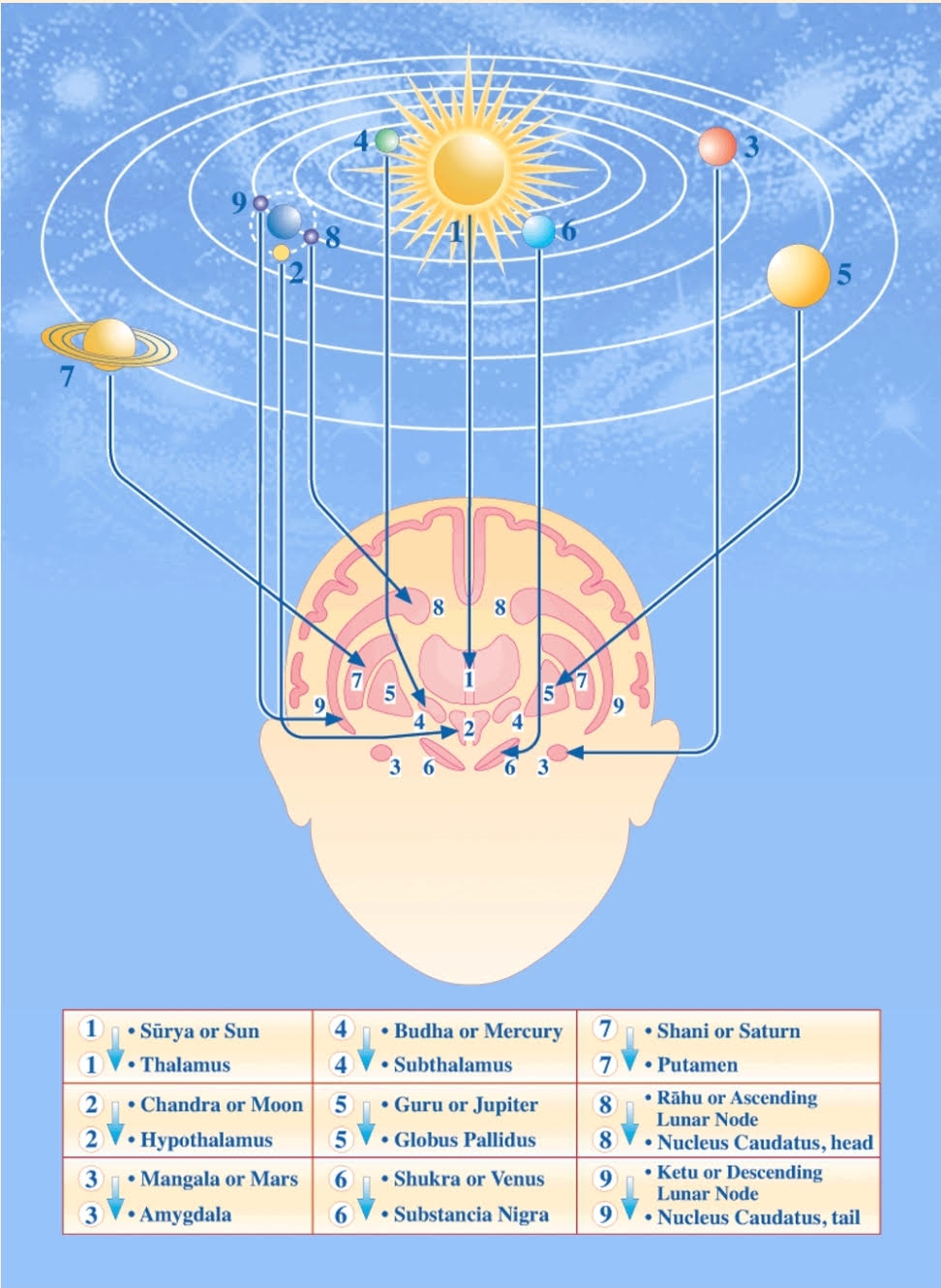
It is simply based on matching the properties of the planets effects and the responsible part of the brain. We'll dive deeper into characteristics of each planets' energies when I explain astrology.
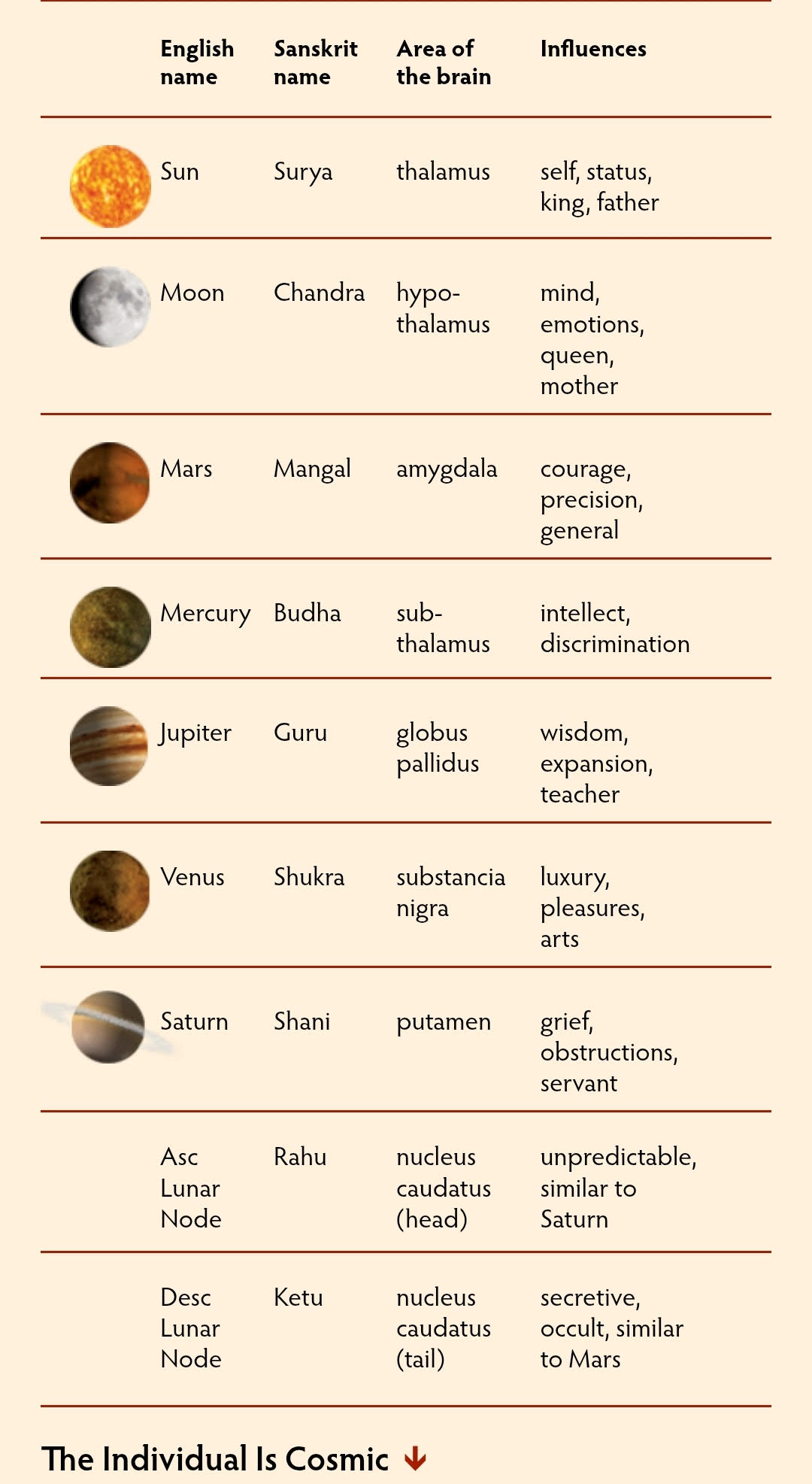
But cosmic forces don't just affect our brain, but our whole body (not just planets individually but nakshatras and constellations as a collective, we'll see that in astrology, just like how the brain controls the other parts of our body) - from different parts of the cell to different parts of our body. The individual is cosmic, just like our conscience is cosmic.
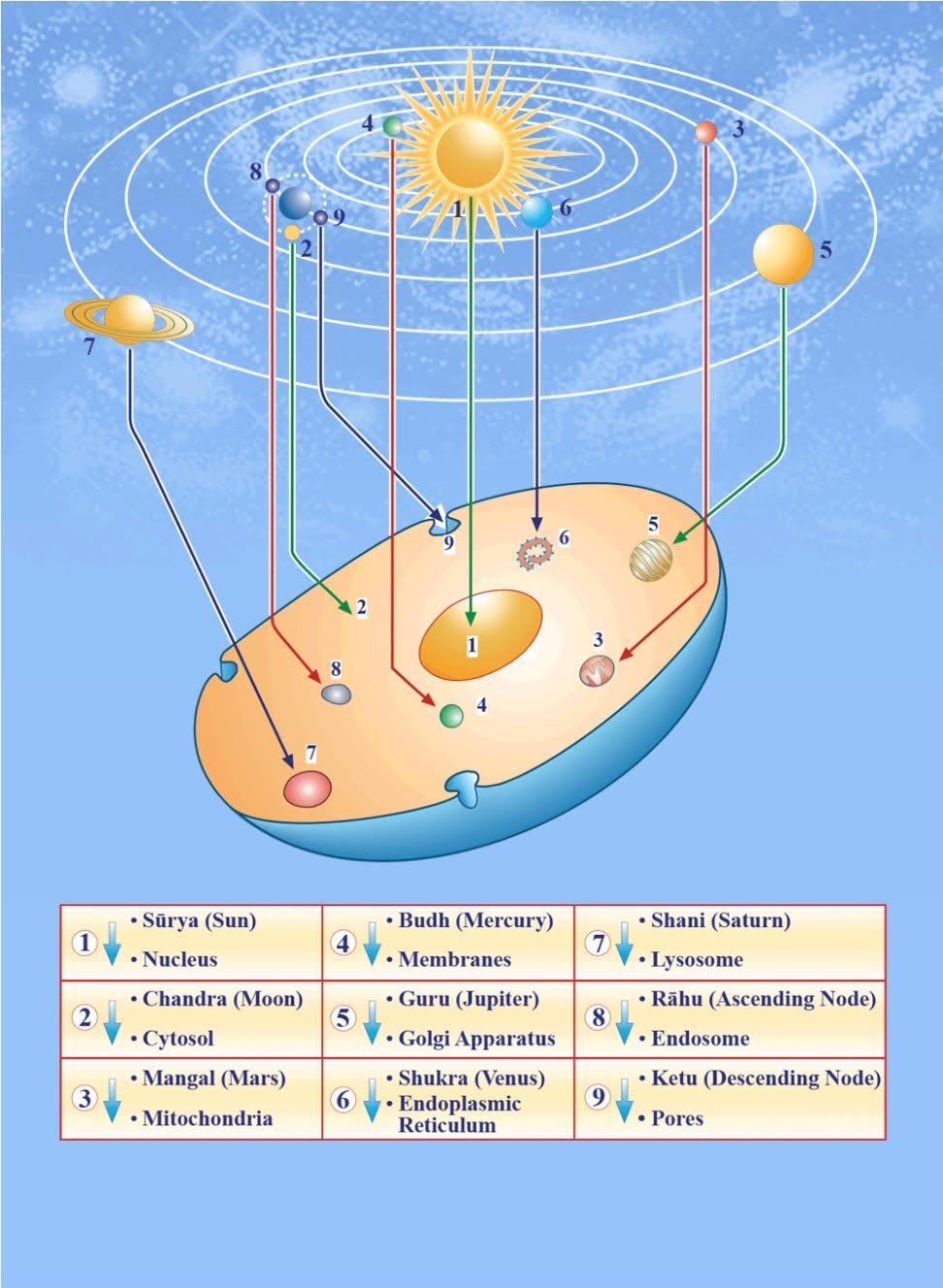
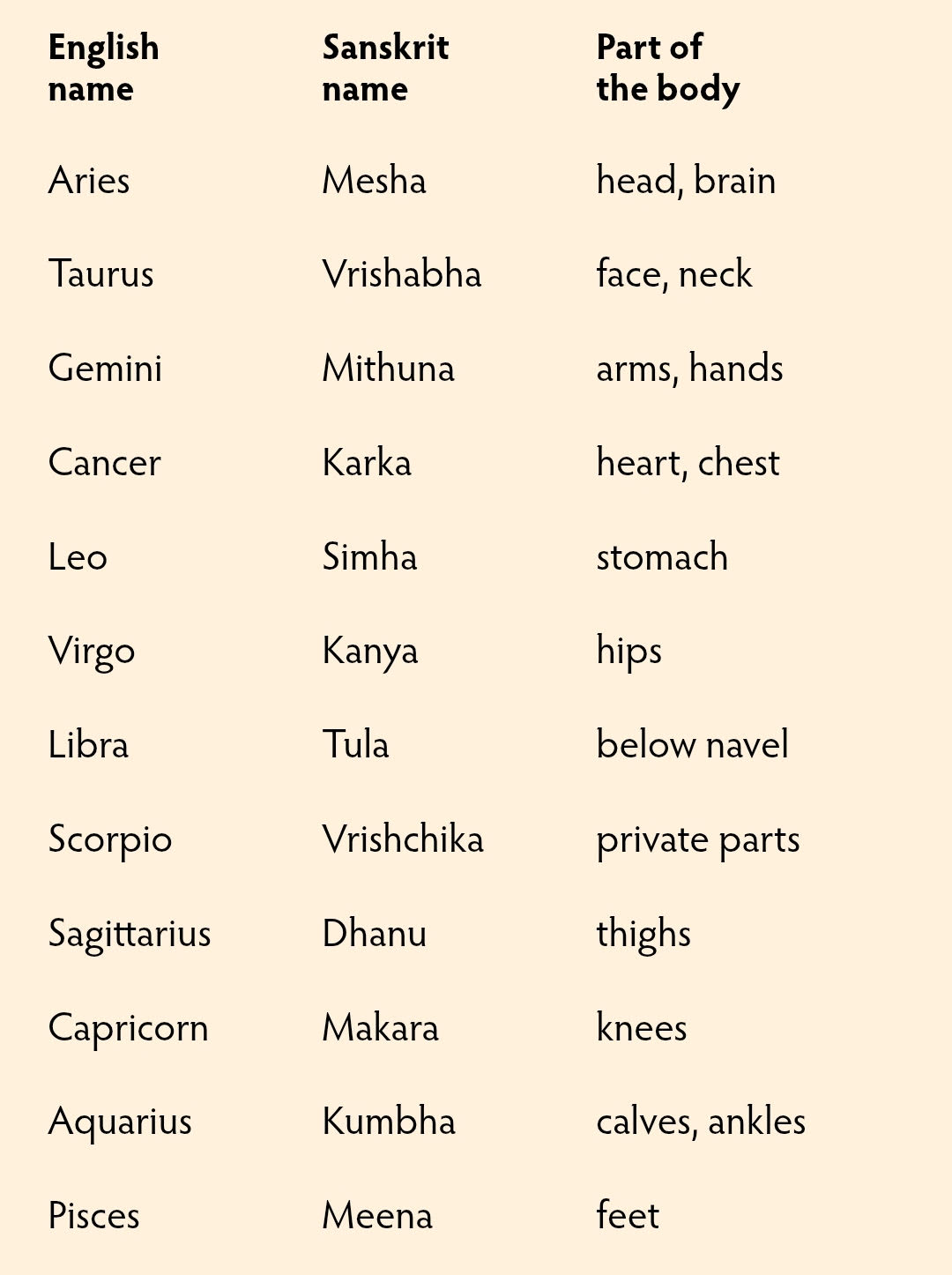
(A glimpse into astrology)
Understanding these connections between the cosmic intelligence of Nature and our own human intelligence can give us insight into how we can best take advantage of opportunities in our own life.
Now that we've seen how planets are linked to our brain physiology, let's try to decode and understand what the ancient rishis perceived about the universe through their meditation.
According to the Jyotish Shasta (jyoti means light) or Vedic Astrology, rishis believed that astrology comprises the main components (with meanings) :
1. 9 Planets = 9 Forces (which are also connected to numbers, I'll explain later)
2. 12 Signs = 12 Sectors
3. 12 Houses = 12 Life arenas
4. Transits = Weather
5. Dashas = Timelines
6. Aspects = Influences
7. Cycles = Timings
8. Charts = Maps
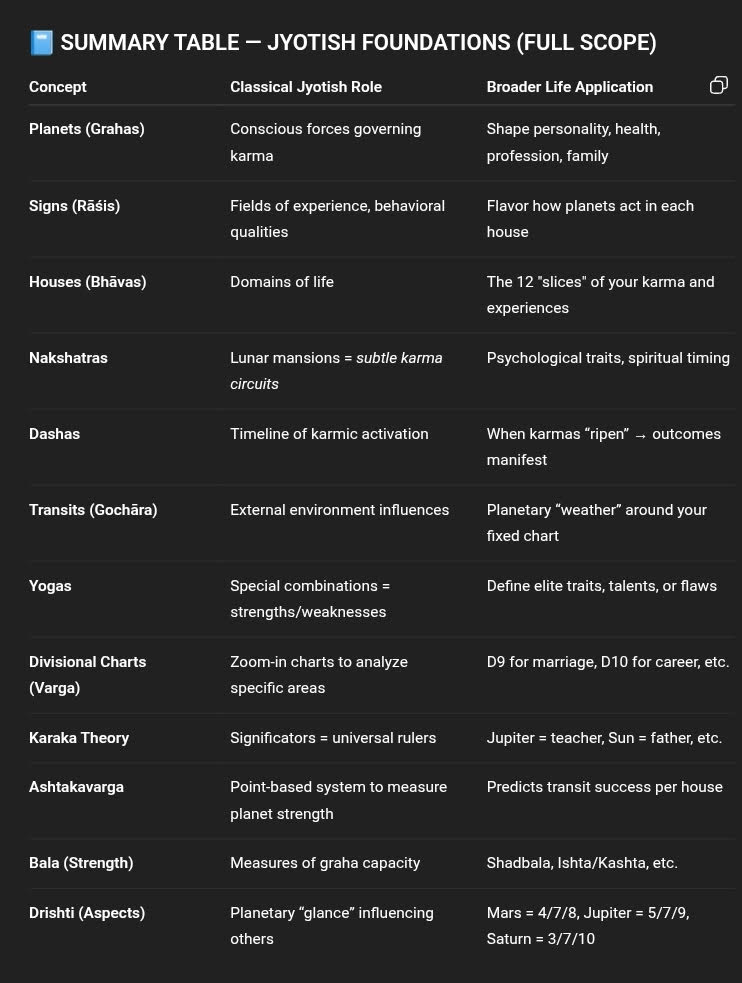
Each planet represents a type of energy or life force.
1. Sun represents power, leadership, ego
2. Moon represents emotions, mind
3. Mars represents aggression, strength, war
4. Mercury represents intelligence, data
5. Jupiter represents wisdom, expansion
6. Venus represents luxury, beauty, art
7. Saturn represents discipline, contraction, karma
8. Rahu (north node) represents obsession, illusion, innovation
9. Ketu (south node) represents detachment, losses, liberation
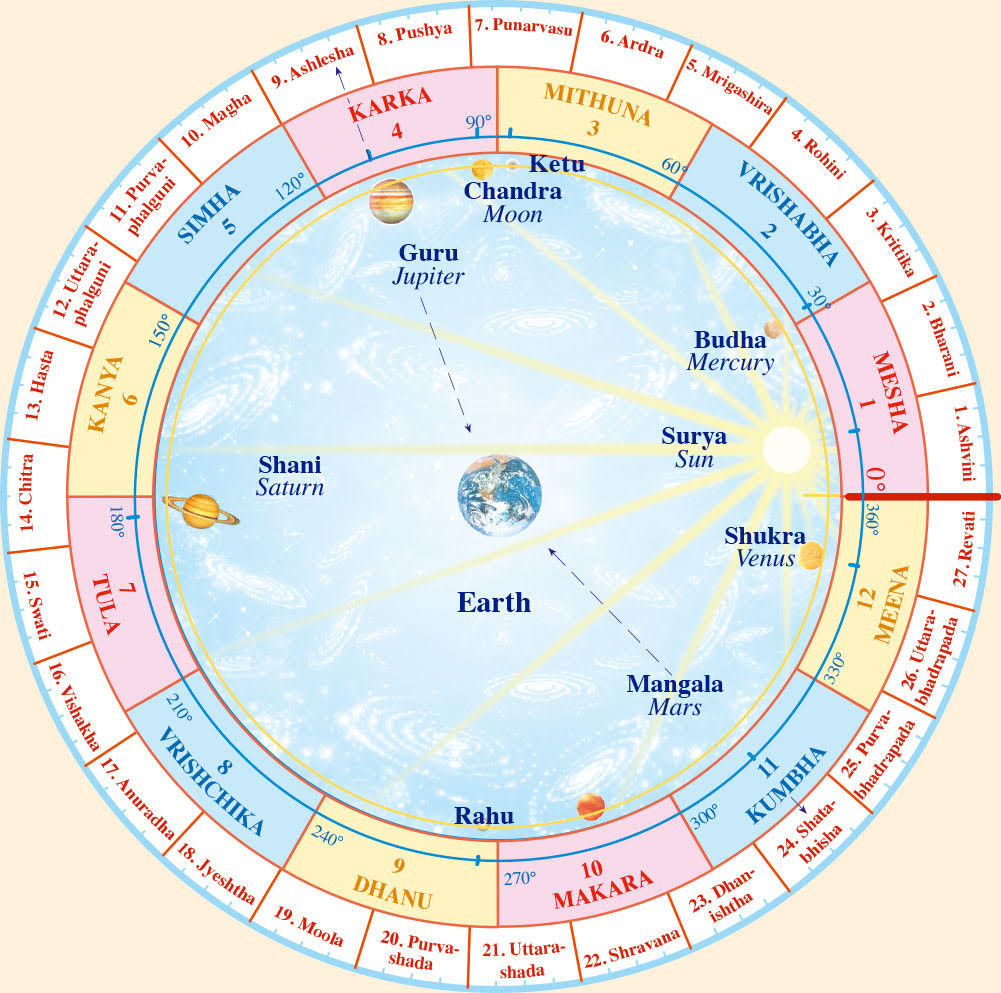
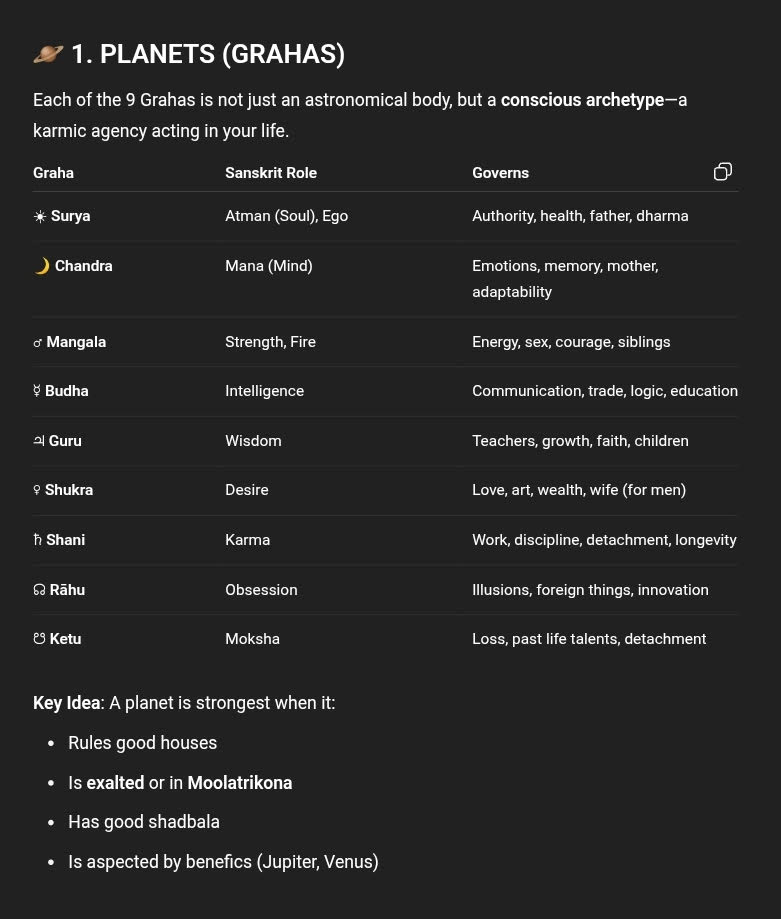
Each rashi or zodiac sign is a constillation that represents the field of experience or behavioural qualities. And each sign is ruled by a planet.
1. Aries - speed, war, bold - ruling lord Mars
2. Taurus - stability, money, luxury - ruling lord Venus
3. Gemini - curious, communicative, data - ruling lord Mercury
4. Cancer - emotions, home, caring - ruling lord Moon
5. Leo - creativity, fame, charismatic - ruling lord Sun
6. Virgo - analytical, critical, service - ruling lord Mercury
7. Libra - harmony, balance, charming - ruling lord Venus
8. Scorpio - intense, secretive, loyal - ruling lord Mars/Pluto
9. Sagittarius - adventurous, wise, idealistic - ruling lord Jupiter
10. Capricorn - disciplined, reserved, structural - ruling lord Saturn
11. Aquarius - visionary, humanitarian, detached - ruling lord Saturn
12. Pisces - dreamy, spiritual, artistic - ruling lord Jupiter
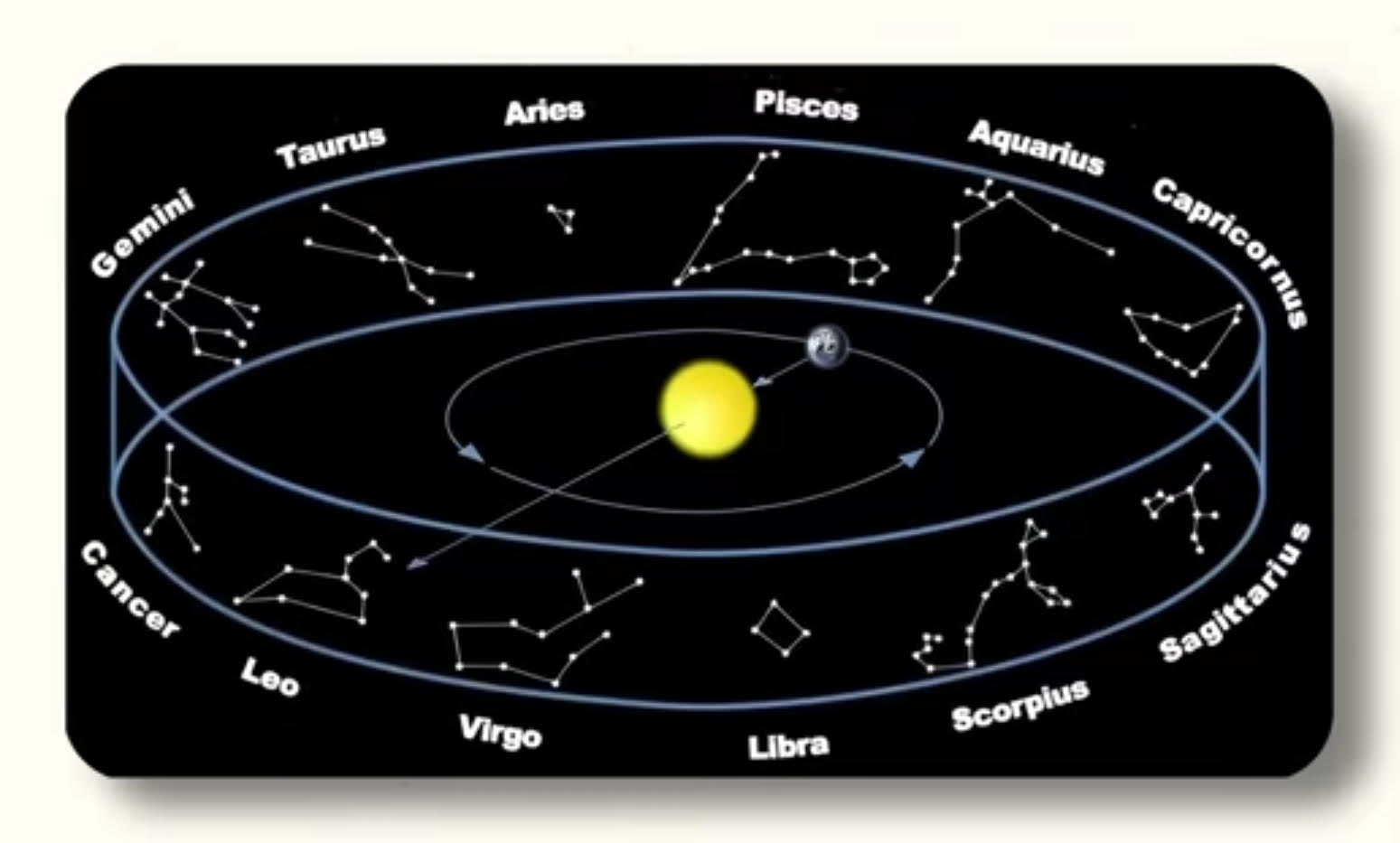
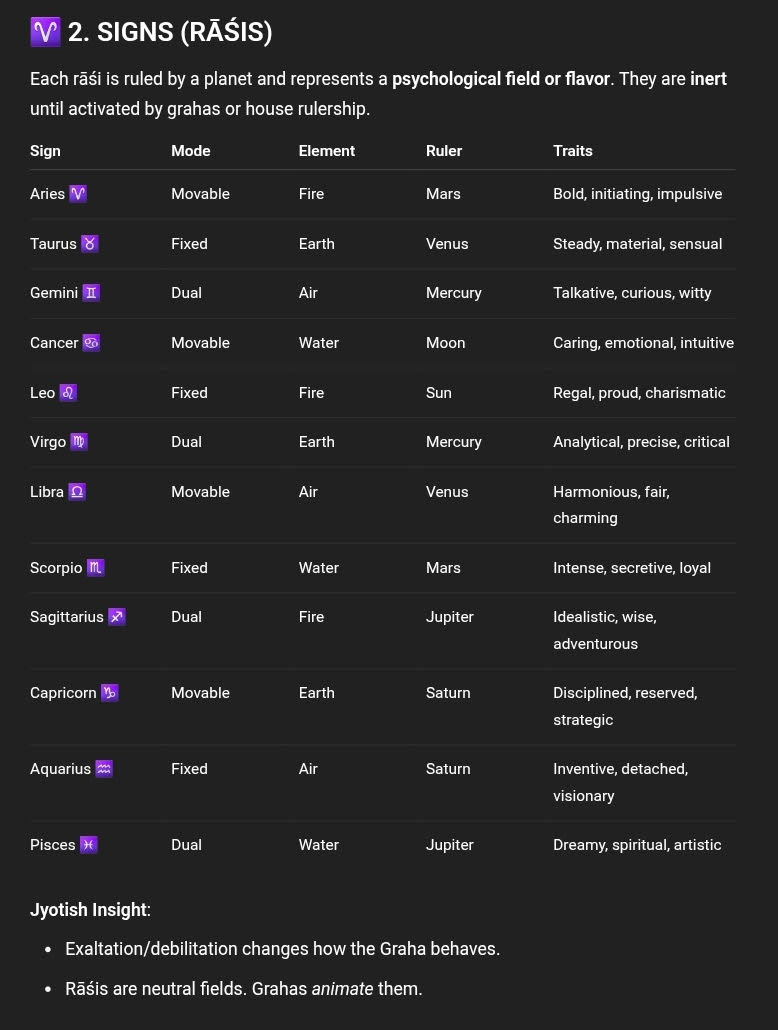
There are 12 Houses that represent where the karma flows.
1H - self, physical body, personality
2H - wealth, family, speech
3H - courage, short journeys, siblings
4H - home, mother, education
5H - romance, children, creativity
6H - competition, enemy, health
7H - business, marriage, partnerships
8H - transformation, secrets, longevity
9H - dharma, guru, luck
10H - karma, career, fame
11H - gains, networks, friends
12H - losses, liberation, foreign
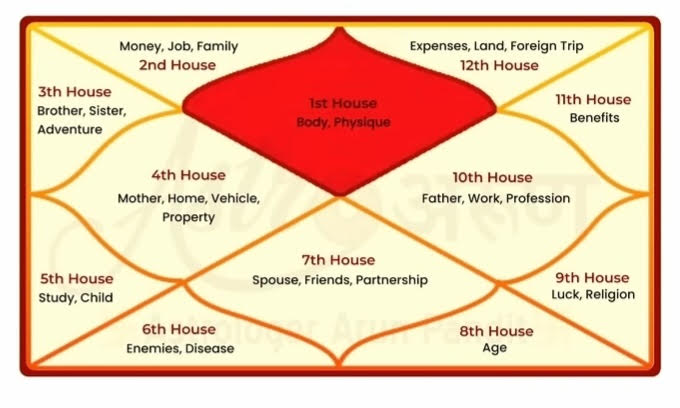
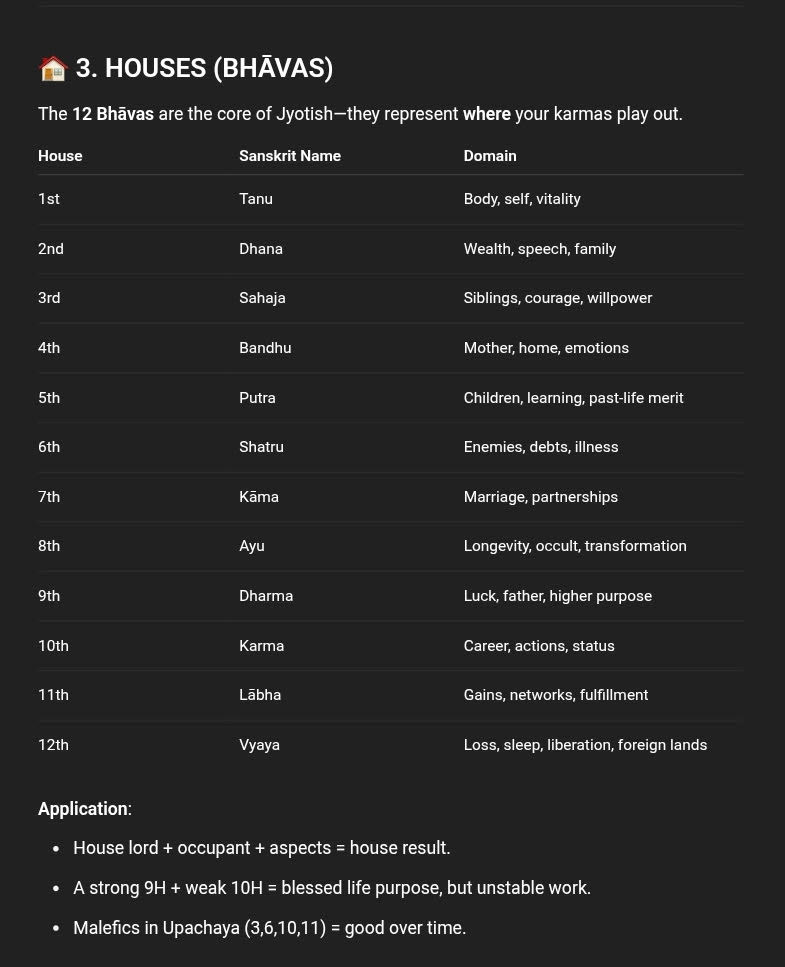
There are 27 nakshatras or lunar constellations that give precise insights into life trajectory.
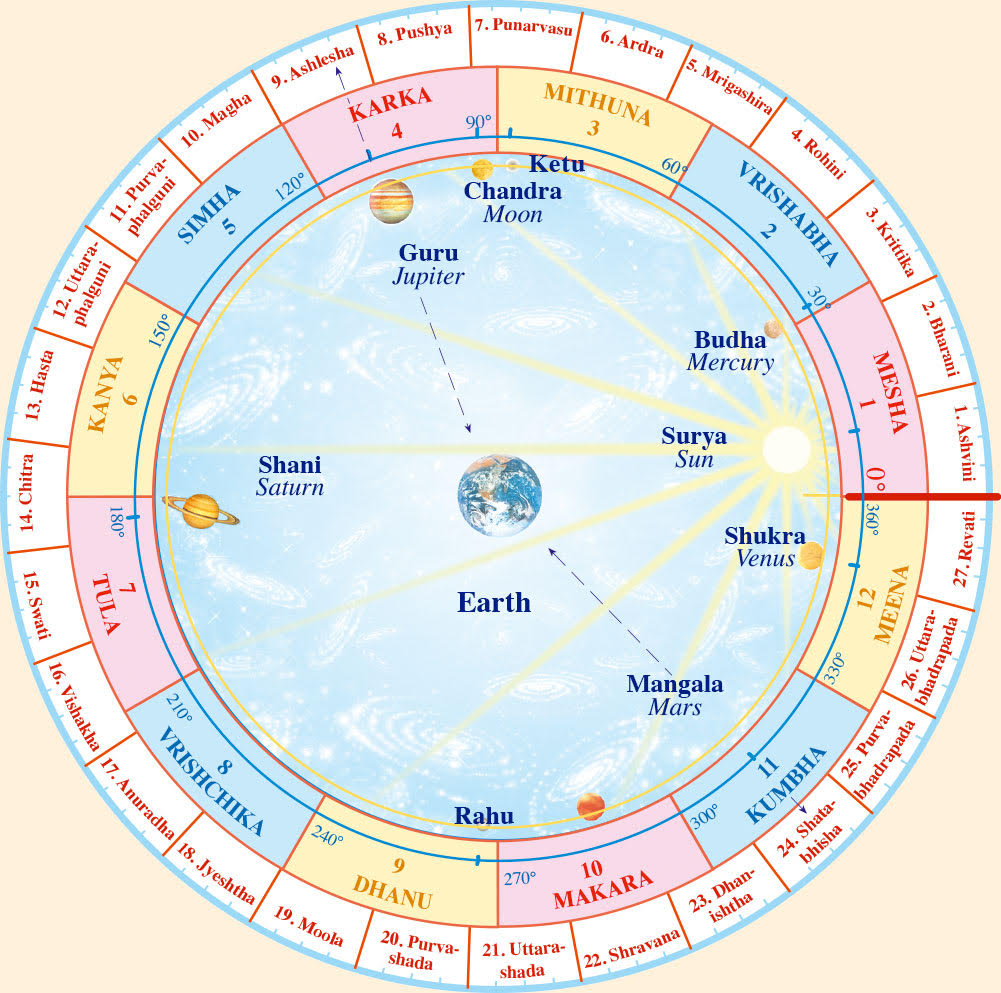
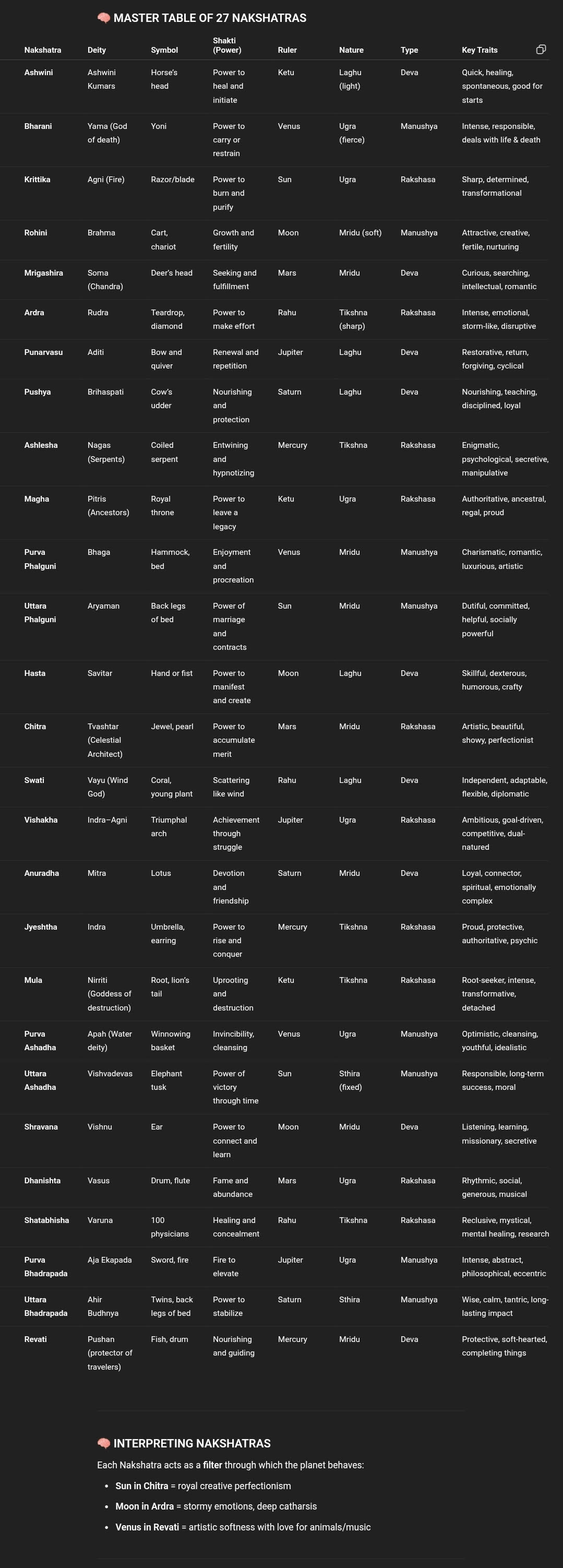
Dashas, transits, tricone (trines), conjunctions, drishtis (aspects), yogas, and vargas (divisional charts) we'll understand once we start looking into birth charts.
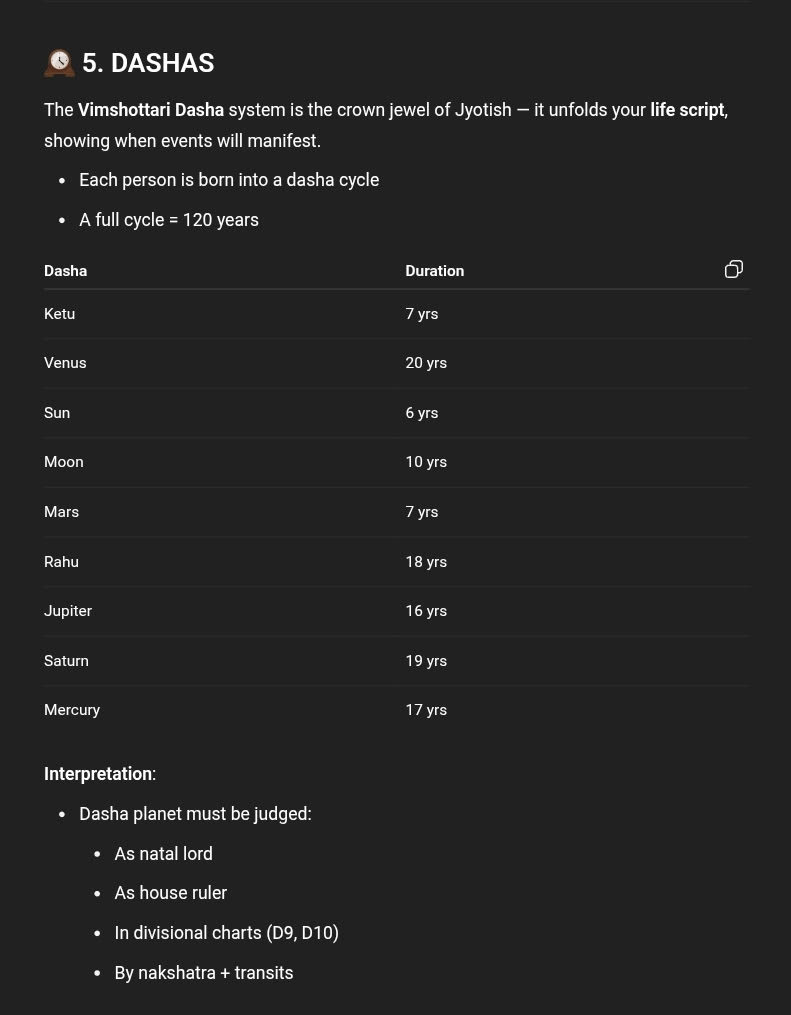
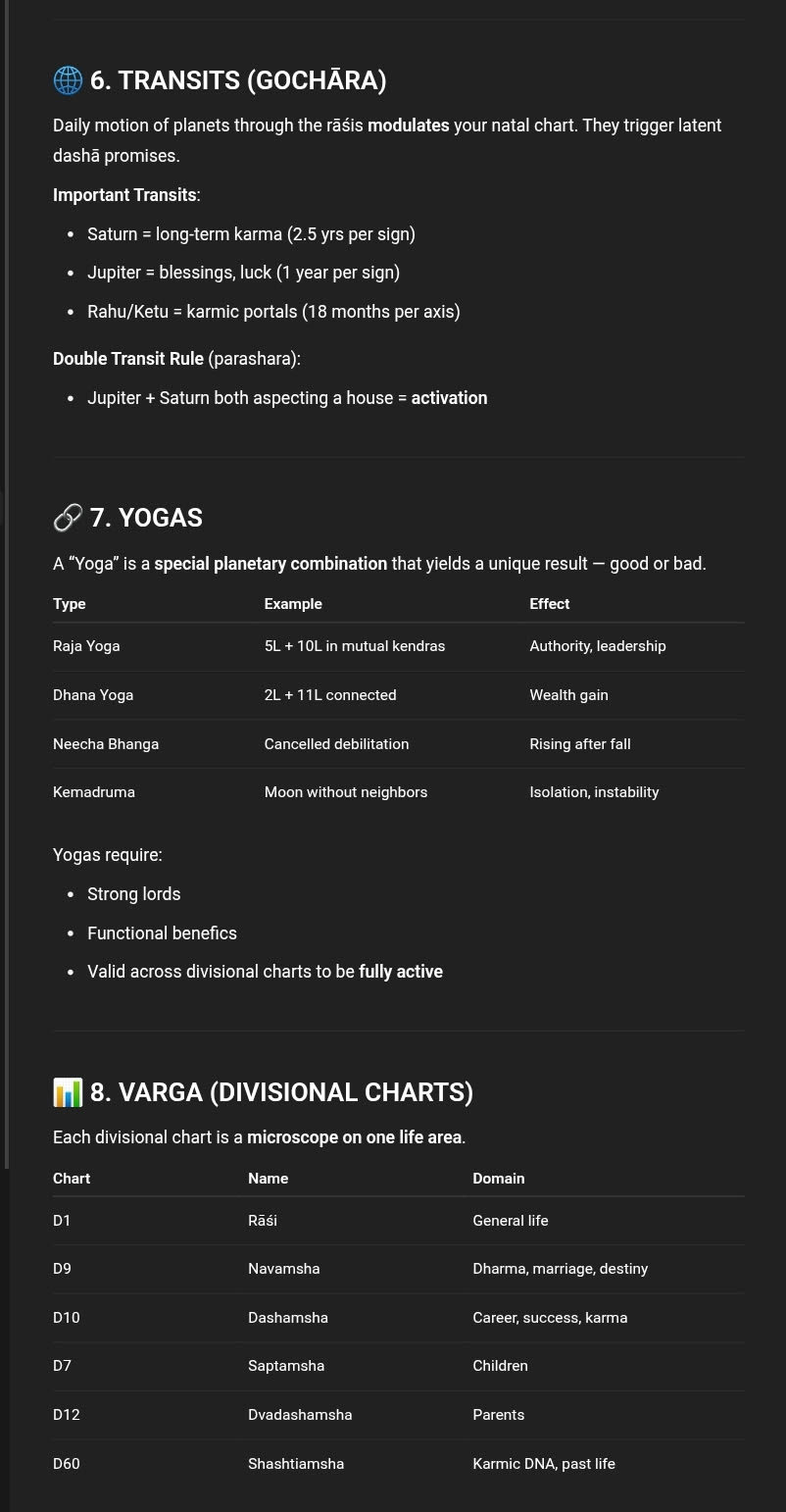
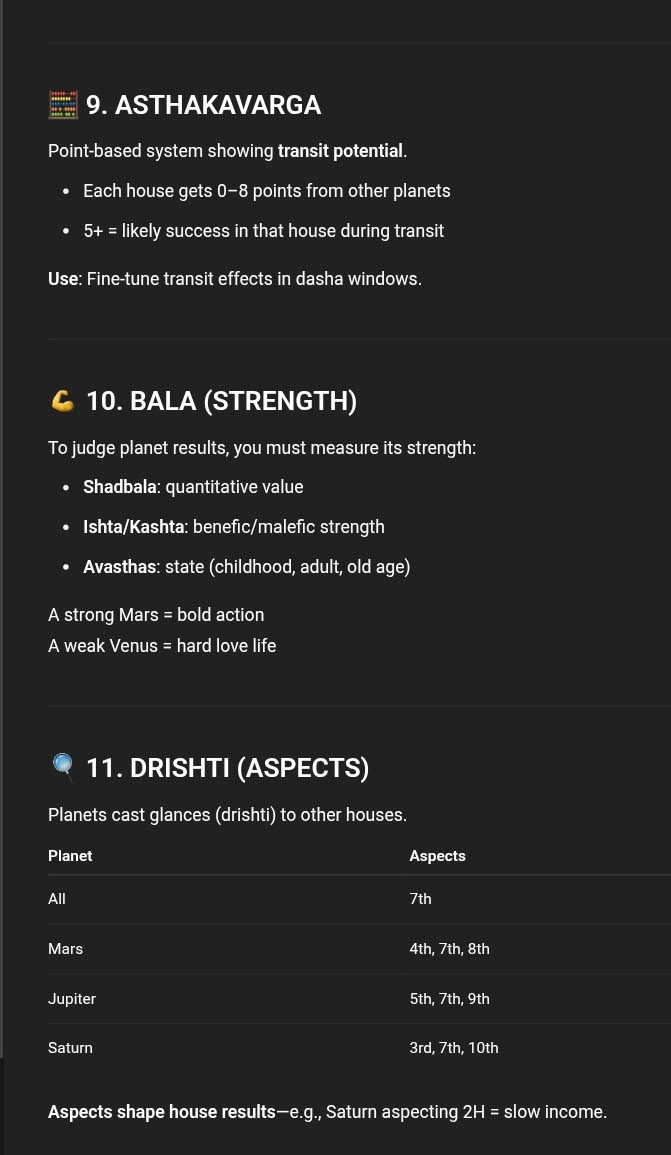
So, Astrology was based on the permutation and combination of all these factors. We'll understand them by looking at birth charts next.
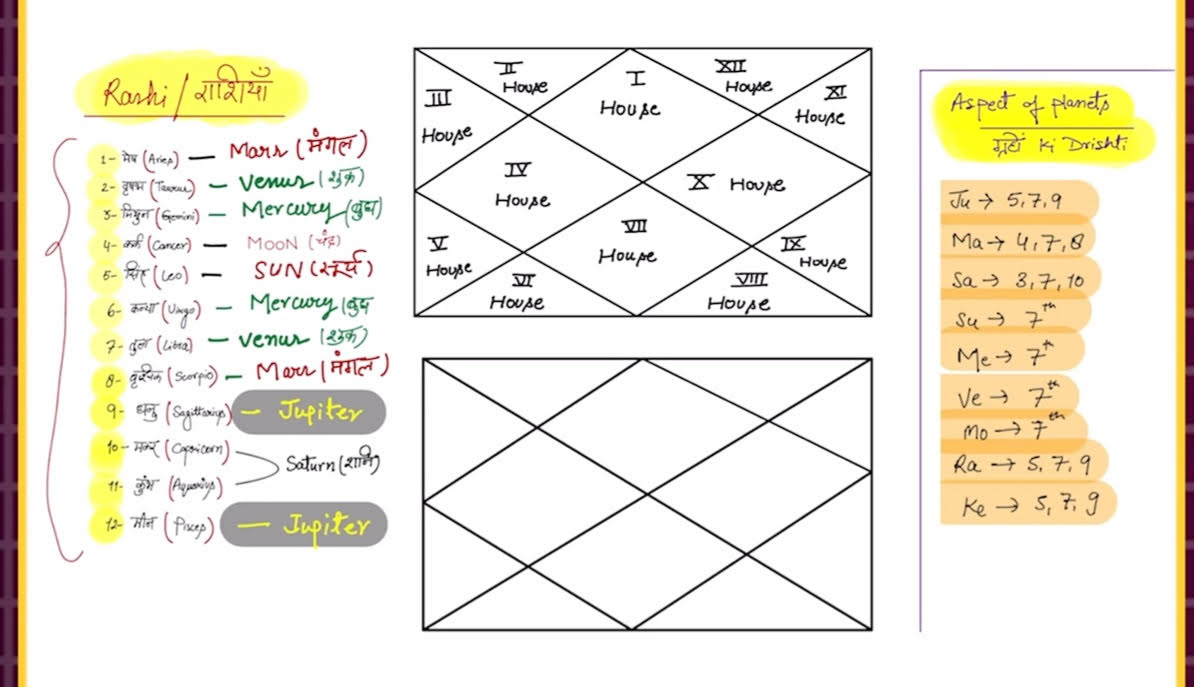
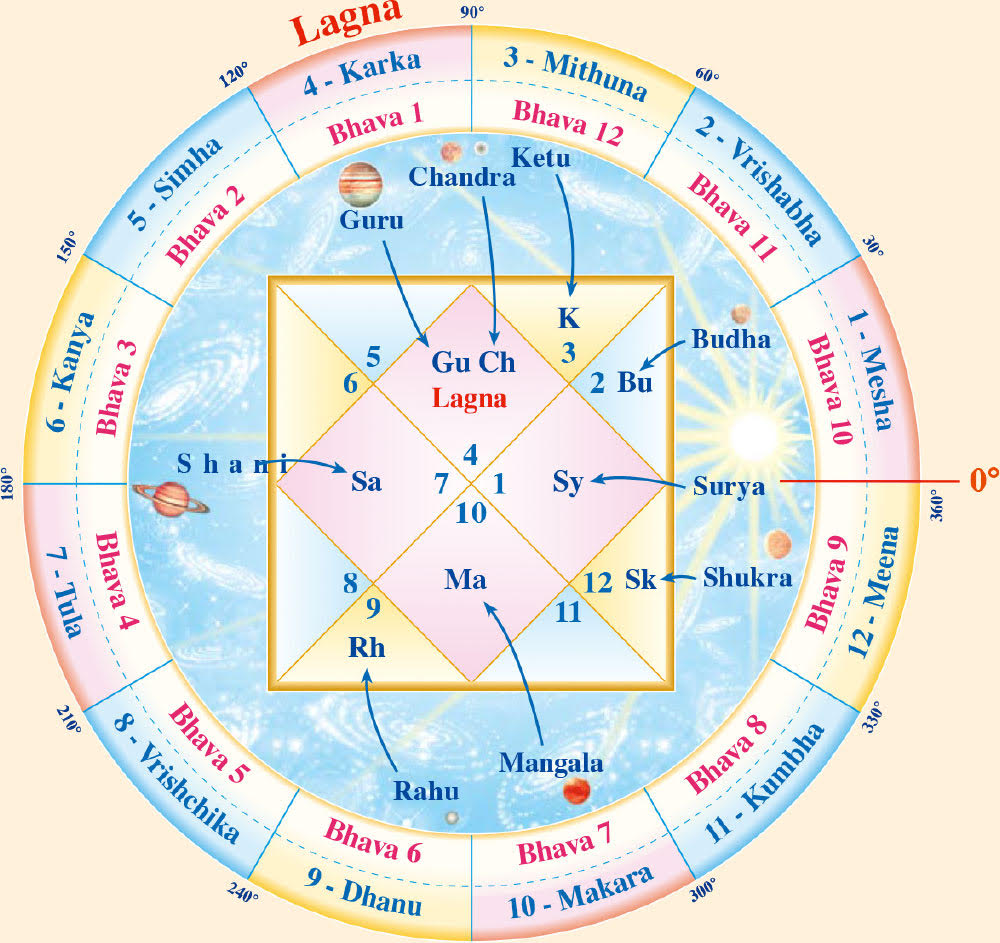
A birth chart is determined when the soul (or cosmic energies) enters the body at the time the baby comes out of the womb. At that moment, whatever permutation and combination of [planets and rashis] (moving) are there in different houses (fixed), the energy blueprint is mapped to a chart which is called the birth chart.
That means, when life began or let's say, during big bang, there must be an initial chart of life. Of course, as we know that astrology was not invented but discovered through realizations and perceptions during deep meditations by the founder rishis or sages, namely rishi Parashara, Garga, Bhrigu, etc., so we only know the concept/method but not the origin of life or the universe.
But I have some theory around it. I believe, when new life was originated, certain energies were affected in fixed directions (either emitted as a cycle into certain directions, or constantly fixed into certain directions) and at that point whatever planets and celestial bodies (stars, constellations, etc.) were present there got affected by it, and that certain permutation/combination of energies and celestial masses created life force. So, the first birth chart must be a balanced or origin chart representing life force, and it will take millions of years to replicate same positions and combinations of planets and constellations and the result might be something interesting (end of a life cycle, or birth of new life species, or evolution, idk, we have to calculate and check mathematically how much time it will take to get that perfect combination or effects again, as in the beginning, which I presumed). The first birth chart is also called Kaalpurush Kundli.
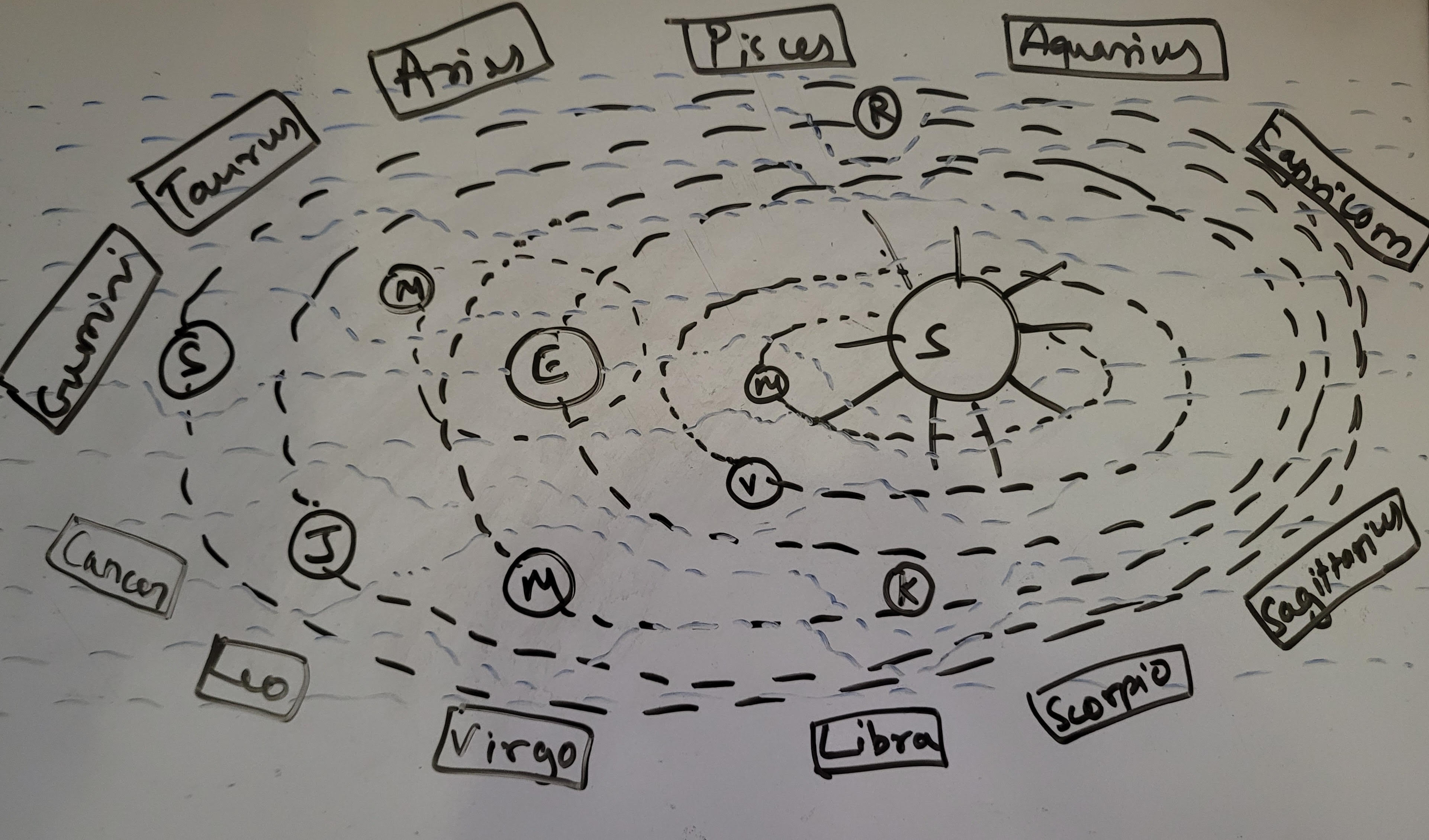
Blue lines are different life forces representing the different signs, and black lines are the positions of planets. In my opinion, life formed at a certain planetary position in the grid.
According to rishis, in a birth chart, 1st house (represented as 1H) is Aries.....12H is Pisces. And we already know what energies different planets carry, and which rashis they rule (eg, Mars rules Aries and Scorpio, Jupiter rules Sagittarius and Pisces, etc).
So when a sign is in its own house (Aries in 1H or Taurus in 2H and so on), it is said to be a good position in the chart. Because the energy belongs to its own home. So this becomes the base of any birth chart before arranging it's planets and signs.
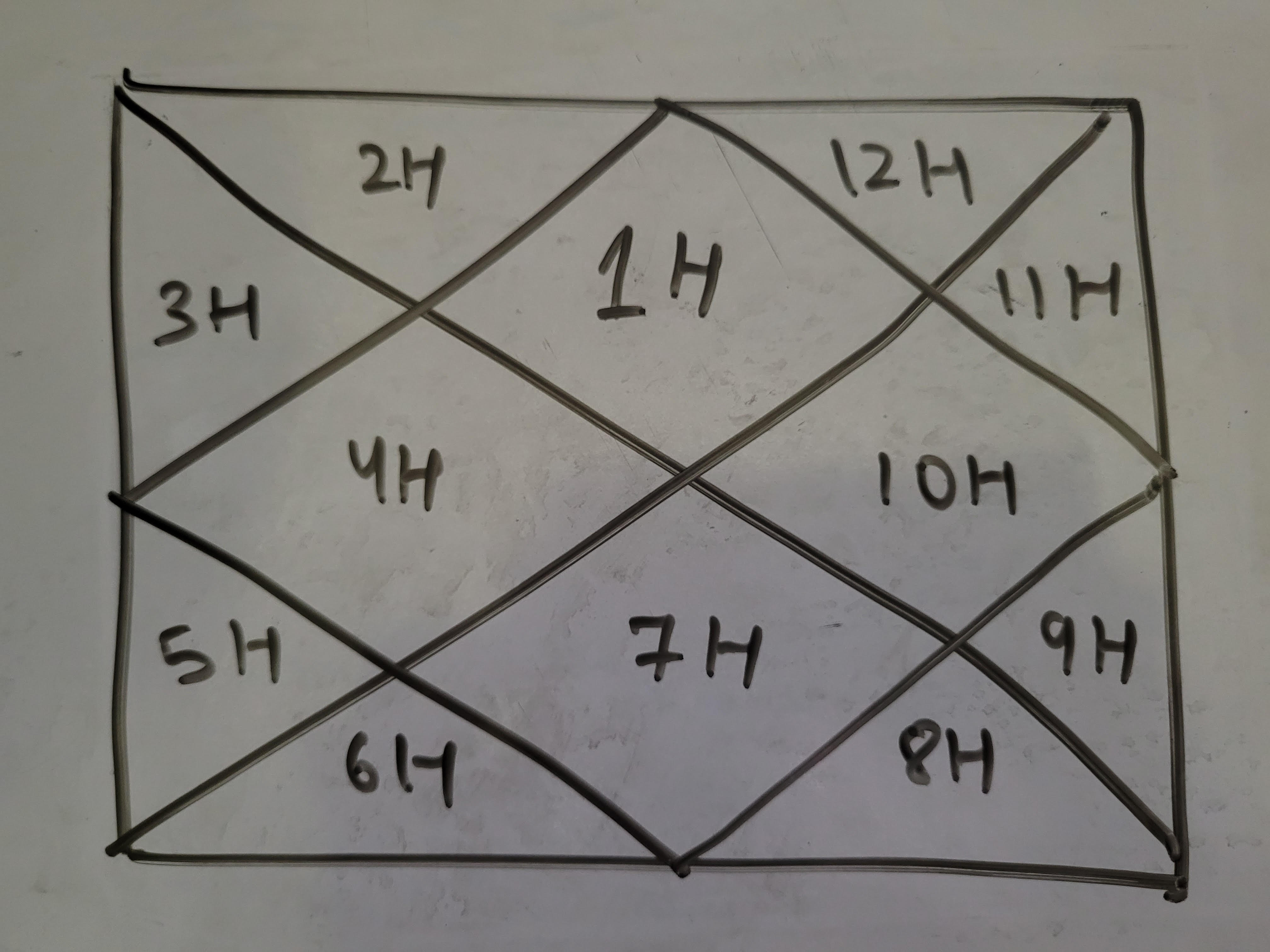
The houses are written in this form in an anticlockwise direction. And the houses' positions are fixed for all charts, i.e., the first topmost centre box will always represent 1H for any chart, so we just remember which box represents which house and don't need to mention in every chart. This is north indian style of chart (rectangular pattern with criss cross), south india, western astrology, etc have different formats of creating charts.
But obviously as the planets and the earth are continuously moving in the sky, so we get different signs and planets in different houses. So it's also possible that someone has a different rashi/sign in a different house.
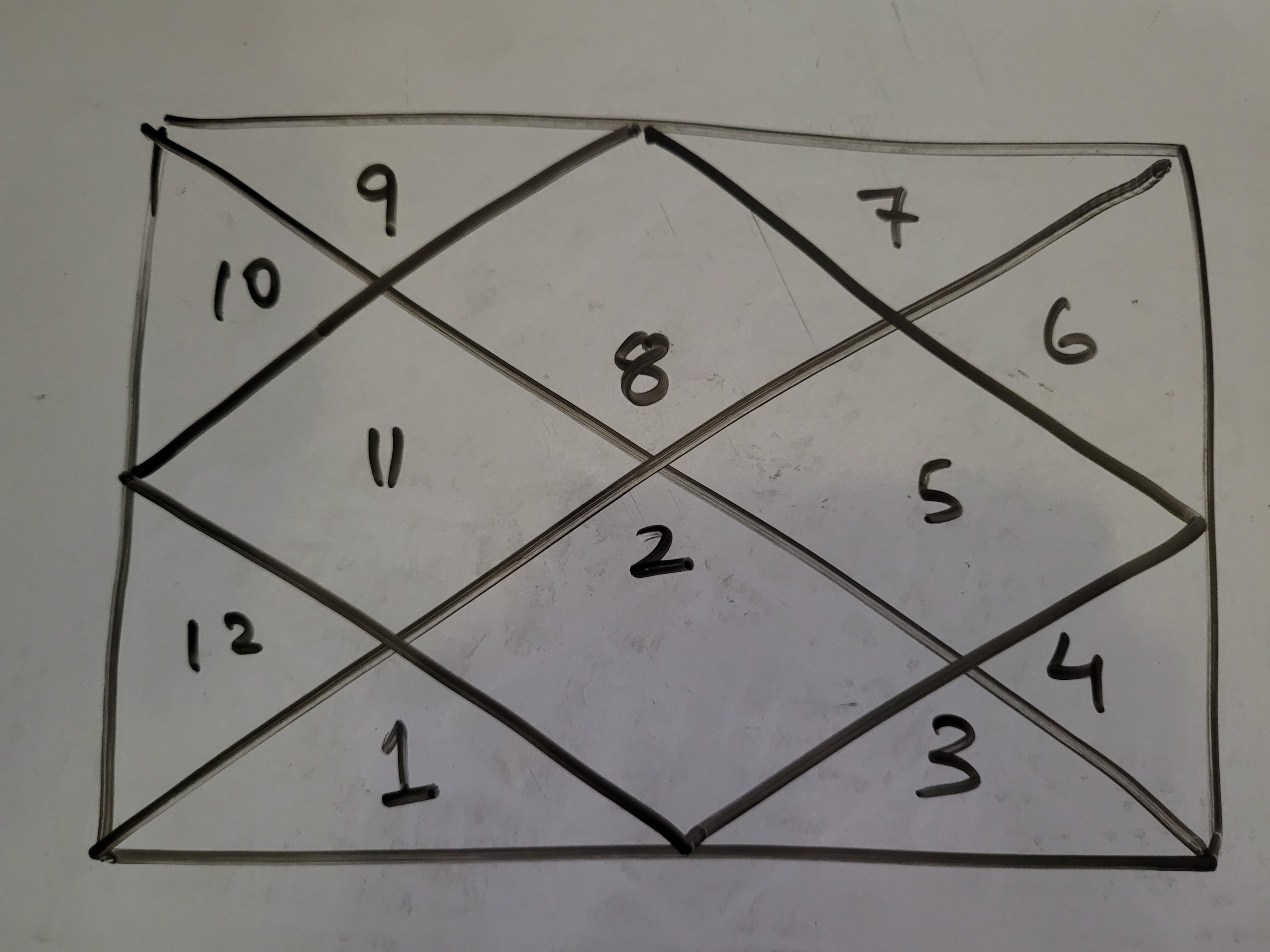
Here, the numbers represent which sign or rashi was present in which house during the time of birth. And this is always written in a chart, as this varies for person to person, and impacts different sectors of lives of a person. The above one has 8 in 1H, means there is scorpio in 1st house, which is the house of Aries, but in this person's chart it has scorpio, and it will have different effects, we'll understand that step by step as we move forward. As the 1H is 8, automatically the other houses get their own rashis because the sequence of signs is fixed, just like in the sky, i.e, first Aries, second Taurus, third Gemini, and so on. So, this is how we determine which sign is present in which house in a birth chart. Now, we'll see positions of planets in a birth chart, because planets also keep moving so we take a snapshot of which planets were present in which houses during the time of birth.
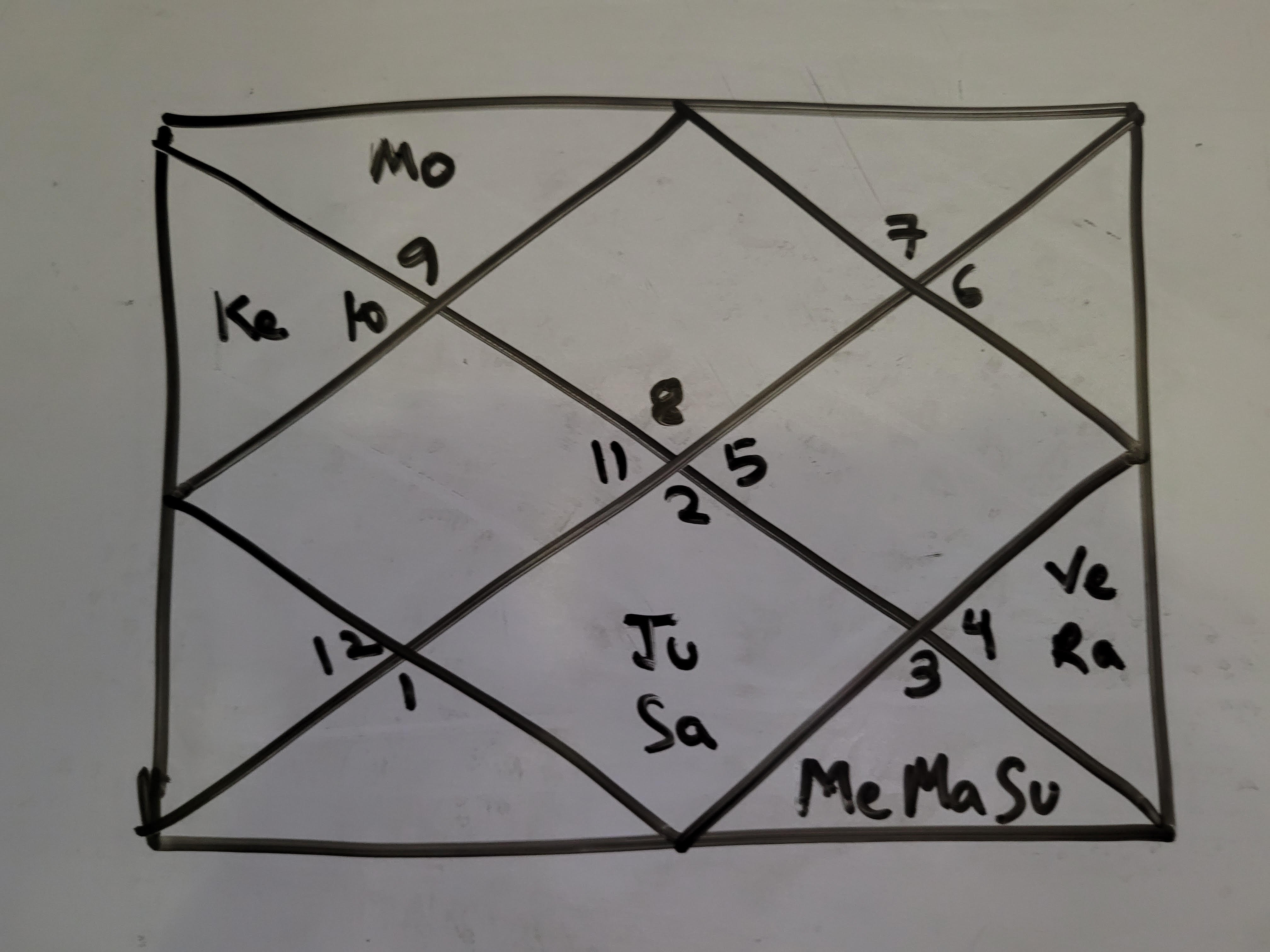
This is a birth chart (also called as Lagna chart or Ascendant chart) that has scorpio in 1H i.e scorpio is the Ascendant or Lagna. Lagna is very important as it reprents the first house, which defines the self, personality, physical body, lifestyle, etc.
Let's try to understand each rashi's and planet's position in this chart.
1H - 8 (scorpio) - no planets (actually in this chart 1H has Pluto but it's an exceptional case. In vedic astrology we generally don't look at invisible planets like Uranus, Neptune and Pluto, instead we have two imaginary fixed points in the sky called north node or Rahu and south node or Ketu).
2H - 9 (sagittarius) - moon. As moon is closest to the earth, it's considered important in vedic astrology. Moon represents mind, which is the lord of the water sign cancer, which represents home, emotions etc. It is in 2H in Kaalpurush kundli, represented by an earth sign Taurus i.e wealth, family, stability, etc. And in this chart, 2H has a fire sign - Sagittarius. So we can make predictions like,
.....1. This person's wealth is volatile and not stable income (2H is earth sign house but here it has fire sign).
.....2. This person's mind is idealistic and wise (moon in sagittarius)
.....3. This person's family life is emotional:
.......3a: if moon is malefic (has negative effect) this person will face family karma
.......3b: if moon is benefic (has positive effect) this person will have a happy home life
.....4. This person will be emotional towards building wealth and family (moon in 2H)
Similarly we can make few predictions just by looking at which planet is in which rashi in which house. But obviously other planets also have their drishti (aspects) on different houses, so we'll have to look at that based on positions of the other planets. But first let's look at individual predictions based on positions of planets in which rashis and houses.
3H - 10 (capricorn) - Ketu. Ketu means detachment. So this person will be automatically or made to be detached from 3rd house aspects of their life. So this person will be detached from short journeys, siblings, peers, communication, etc. And as 3H has capricorn, which generally represents hardwork, ambition, structure, etc., so this person will have an unconventional path in life and will be detached from existing systems in society or will not follow the path of the norm. Also, to determine how planets activate their effects, we have to look at their transits (universal cosmic clock) and dashas (internal biocosmic clock).
4H - 11 (aquarius). It means this person will be detached to his home and emotions. Or this person's mother will have aquarius themes in her birth chart.
5H - 12 (pisces). It means this person will be highly intelligent and creative (5H intelligence + pisces' creativity). Or this person will have pisces like children (creative, dreamy, empathetic)
6H - 1 (aries). It means this person will be fearlessly (aries) competitive (6H). Or will have health issues (6H) in the head (aries).
7H - 2 (taurus) - Jupiter and Saturn. It means this person will have a spouse (7H) who is stable, wealthy and beautiful (taurus). It also has Jupiter (expansion, wisdom) and Saturn (karma, contraction), means this person's wife will be wise and bring positive effects to life, and the relationship will be long lasting, stable, and karmic in nature.
8H - 3 (gemini) - Mercury, Mars, Sun. It means this person will have research skills (8H) in tech (gemini). And throughout life, their career (sun), work ethic (mars) and intellect (mercury) will be filled with 8H themes like transformation, hidden wealth, sudden events, etc., especially through tech and media (gemini).
9H - 4 (cancer) - Venus, Rahu. In a male's chart, venus also reprents wife. It means this person will have foreign affairs and/or obsessive love cycles (rahu) before marriage with a beautiful wife (venus), and love life will lead them to their dharma (9H), and this person will be nurturing (cancer) towards their wife (venus).
10H - 5 (leo). It means this person's karma and career is defined by their leadership skills. And as the lord of leo (sun) is in 8H in this chart, this person's career will be transformative and around deep research or hidden knowledge and finance. We generally look at position of lord planet of a sign when that sign has no planets residing in that house.
11H - 6 (virgo). This person will network and gain (11H) through service, healthcare or competition (virgo and 6H effects).
12H - 7 (libra). This person's moksha (12H) will be reached through harmony (libra).
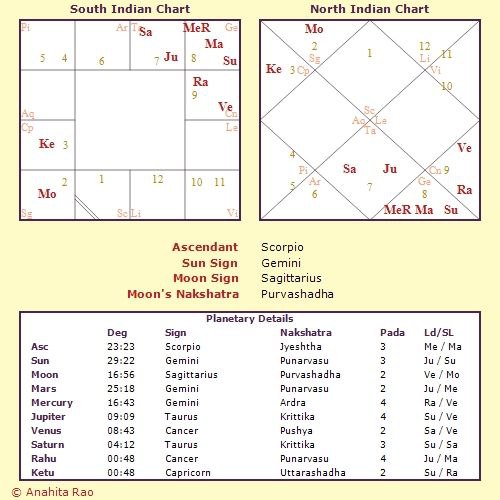
Furthermore, we can look at Nakshatras and Padas for each position of the planet to find even more accurate characteristics. Now, let's look at the aspects of planets in other houses (effects of planets in different houses other than just the home position).
Planet - aspects nth house from its position:
Jupiter - 5, 7, 9
Rahu - 5, 7, 9
Ketu - 5, 7, 9
Mars - 4, 7, 8
Saturn - 3, 7, 10
Sun - 7
Mercury - 7
Venus - 7
Moon - 7
In this chart we have, Jupiter is in 7H, so it aspects 11H, 1H, and 3H. That means this person will be lucky (jupiter) in his life (1H), gains (11H) and siblings/communication skills (3H). So Jupiter, which is a benefic planets, will protect relationship with siblings (3H) from malefic effects of Ketu in 3H.
Rahu is in 9H, so it aspects 1H, 3H, and 5H. That means this person will be obsessed or face illusions (rahu) with himself and his life (1H). They will be obsessed/face illusions or disappointment (rahu) towards their siblings/communication skills (3H) and children/intelligence/creativity skills (5H).
Ketu is in 3H, so it aspects 7H, 9H, and 11H. So this person will face detachment or changes (ketu) in their relationships (7H), religious beliefs (9H) and networks (11H). As Jupiter is in 7H, which is a benefic planet, it will protect marriage and partnerships (7H) from malefic effects of Ketu in 7H.
Mars is in 8H, so it aspects 11H, 2H, and 3H. So this person will be aggressive towards wealth creation (11H, 2H) and will share good bond with sibling brother (3H, and mars represents brother).
Saturn is in 7H, so it aspects 9H, 1H, and 4H. So this person will face karmic delays (saturn) in love (venus in 9H), personal life (1H), and emotional fulfillment at home (4H). Also, this person will face problems with father due to differing morals (Rahu in 9H + Saturn aspects in 9H + Sun in 8H).
Sun is in 8H, so it aspects 2H. So this person's career (sun + leo in 10H) will be related to wealth (2H).
Mercury is in 8H, so it aspects 2H. So this person's intelligence (mercury) will be in wealth creation (2H).
Venus is in 9H, so it aspects 3H. So this person might either be detached (ketu in 3H) towards luxury (venus) or his wife (venus).
Moon is in 2H, so it aspects 8H. So this person will face lots of mental instability (moon) due to transformation (8H), and it will affect their career (sun), intellect (mercury), and willpower (mars).
These aspects normally activate during their dashas. So, when this person will have moon dasha, their moon related themes will be activated. And similarly, when a particular planet transits a particular house in the sky, it will also show effect in that person's life.
This person is in moon mahadasha. So, this person will face volatility in wealth, family karma, mental stress due to career, and face transformation. And right now they have saturn antardasha within moon mahadashs, so saturn's effects will also be shown, like karmic delays in love and personal life, lack of fulfillment at home, and issues with father.
There are also Karakas, which tell us the potential effects of planets on a person's life. In Jaimini astrology, these seven planets are determined by their degree in the birth chart, from highest to lowest:
Atmakaraka: The significator of the self.
Amatyakaraka: Significator of career.
Bhatrikaraka: Significator of siblings and father.
Matrikaraka: Significator of mother and education.
Putrakaraka: Significator of children.
Gnati Karaka: Significator of strife and spiritual growth.
Darakaraka: Significator of marriage and partnerships.
But, lagna chart or D1 is just the 1st divisional chart. Similarly, there can be hundreds of divisional charts for a person based on their accurate birth time (that's why twins still have very different life and destiny). Divisional charts tell us more about different aspects of a person's life, such as, D9 tells about dharma/marriage, D10 tells about karma/career, D60 tells about past life/hidden karma, etc. Those are also read and interpreted in the similar manner as we did for the birth/lagna/ascendant/D1 chart.
After this I learnt something even more specific in jyotish called Bhrigu Nandi Nadi (BNN) astrology. With the help of it, once can predict flow of events in a person's life, almost like a time travel or summary of a person's life.
In BNN, Jupiter means native (jeeva), Mars means husband, Venus means wife, and Saturn means career (karak).
Before that, let's understand degrees. Each planet is present at a certain degree in each house. 12 houses = 360 degrees, so in each house we have 30 degrees. And within 30 degrees each planets (one or more) can be situated at any degrees in a house.
Let's use Elon Musk's chart for this, to better understand. (I don't know his exact birth time, I found this on internet. But acc to dob planets positions will remain same, only lagna and degrees will differ.)
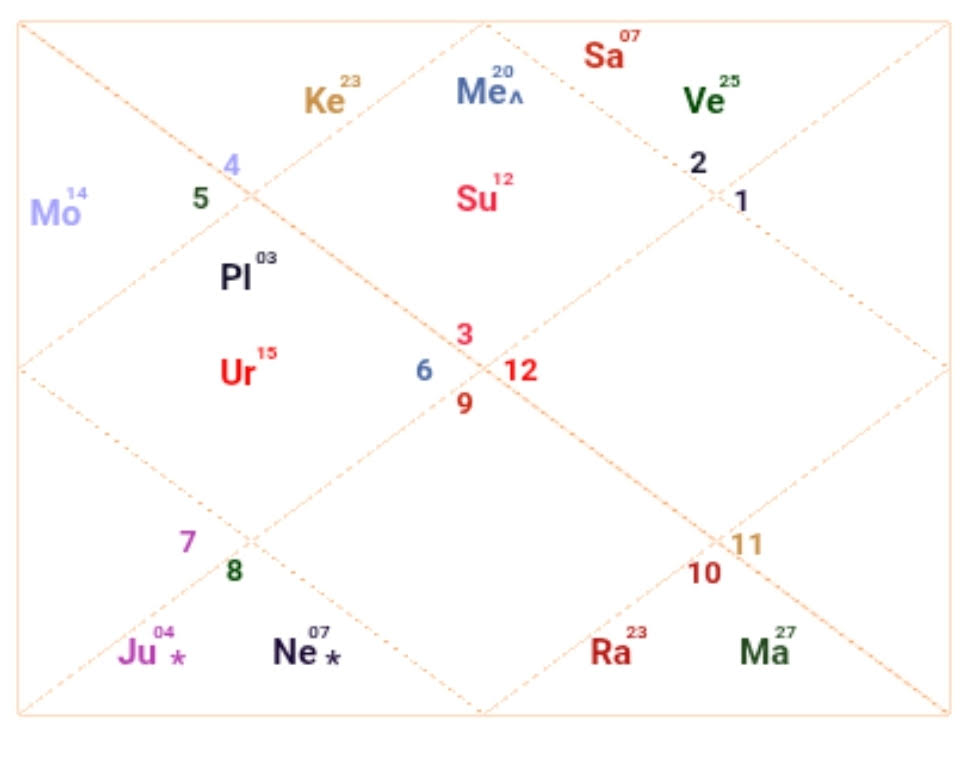
Basic predictions based on chart: Gemini lagna and Sun means intellectual and communicative in nature. Mars and Rahu in Capricorn in 8th house, means transformative, obsessed and disciplined towards career - extremely good placement for career. Jupiter in Scorpio is a good placement for investments, as it reprents abundance in hidden money. Venus (wife) and Saturn (karmic burdens) together in 12th house (loss), suggests a bad position for marriage.
Now, let's predict his career using BNN.
For career, our hero planet in BNN is Saturn. Next we see which planets are in conjunction and trine with saturn. Venus is in conjunction with saturn. Here saturn is in 12th house, so it's trine are 5th and 9th positions from 12H, i.e 4H and 8H. In 4H we have Uranus and Pluto, which we don't consider in Jyotish. In 8H we have Rahu and Mars. So, Saturn has conjunction with Venus and trine with Rahu and Mars. Now, we arrange them from lowest degree to highest degree.
Saturn 7° -> Rahu 23° -> Venus 25° -> Mars 27°
Next we see Saturn's adjacent houses, i.e 2nd and 12th house from saturn. So, here it's 1H and 11H. In 1H we have Sun and Mercury, and in 11H we don't have any planets. We arrange these in ascending order of degrees after the previous chain.
Saturn 7° -> Rahu 23° -> Venus 25° -> Mars 27° -> Sun 12° -> Mercury 20°
So, Elon's career started with global ambitions (rahu), then luxury (venus), then engineering (mars), then leadership (sun), then business/communication (mercury).
Live example we can see how Elon started off with worldly ambitions with Tesla, SpaceX etc., then gained lots of wealth, then heavy engineering and mission to Mars, then fame due to leadership, and then twitter acquisition and ai, etc., and will continue towards media and business side.
Similarly, we can do this for the previous chart as well.
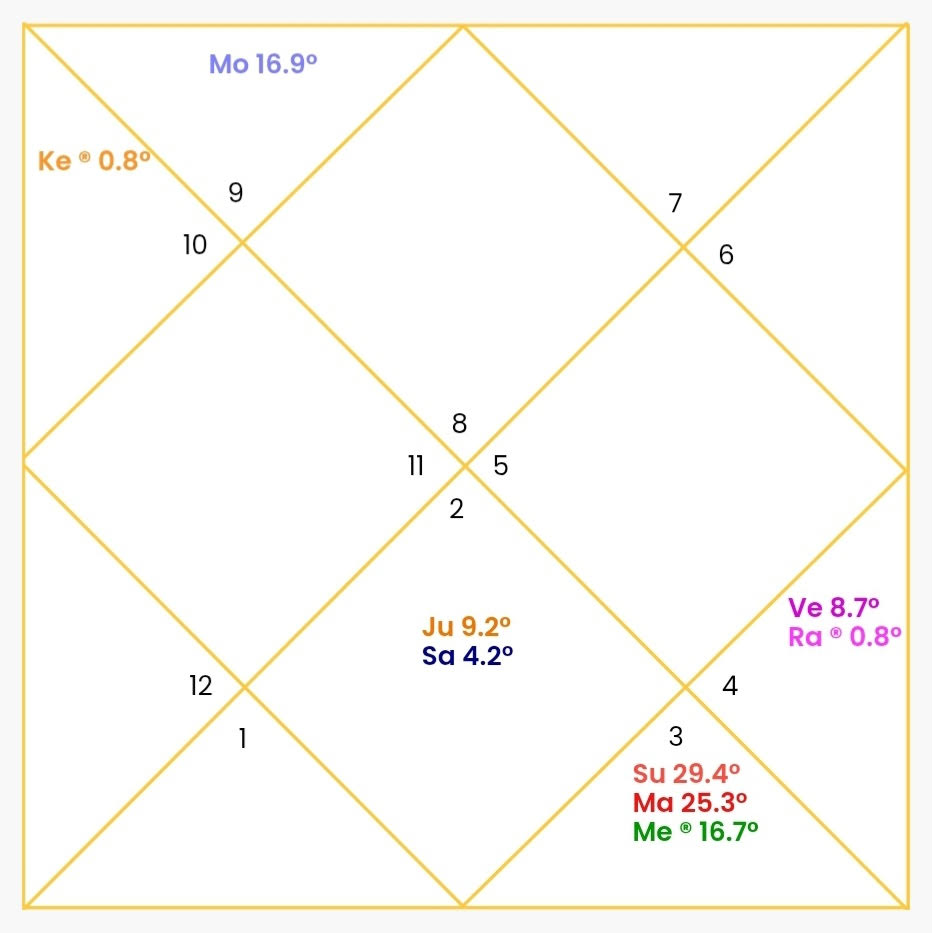
Here, Saturn is in conjunction with Jupiter and trine with Ketu.
Ketu 0.8° -> Saturn 4.2° -> Jupiter 9.2°
And 2/12th house has Sun, Mars, Mercury.
Ketu 0.8° -> Saturn 4.2° -> Jupiter 9.2° -> Mercury 16.7° -> Mars 25.3 ° -> Sun 29.4°
Saturn is a karmically heavy planet, so its effect can be seen upto +2 and -2 houses. So, Venus and Rahu effects will also be seen along with Sun, Mars and Mercury.
(Ketu 0.8° -> Saturn 4.2° -> Jupiter 9.2° -> [Mercury 16.7° -> Mars 25.3 ° -> Sun 29.4° -> (Rahu 0.8° -> Venus 8.7°)])
Therefore, this person will have early career struggles or sudden changes (Ketu), then after Saturn (maturity, karak) career will begin with consulting, partnership, education (Jupiter), also Jupiter after Saturn gives abundance in career or long lasting career. After that, career will evolve into transformative business and communication (Mercury). Then career will evolve into competitive and engineering fields (Mars). Finally, this person's career will be a leadership position (Sun) in a transformative field (8H). And there will be globalization/innovation (Rahu) and luxury/wealth (Venus) later in career.
Similarly, we can predict the marriage life by looking at Venus in a male's chart and Mars in a female's chart, and general life prediction through Jupiter in the birth chart.
I also found an interesting correlation between houses - how each houses have consequences on different houses.
We know that:
1H – Self, Body, Personality, Vitality, Appearance, Head, Identity, Beginnings
2H – Wealth, Finances, Family, Speech, Values, Food, Possessions, Face, Eyes
3H – Communication, Courage, Siblings, Efforts, Short Travel, Arts, Writing, Skills, Hands, Neighbors
4H – Home, Mother, Property, Land, Vehicles, Emotions, Inner Peace, Heart, Education, Foundations
5H – Intelligence, Children, Creativity, Romance, Speculation, Past Life Merit (Purva Punya), Learning, Stomach
6H – Enemies, Debts, Diseases, Service, Daily Work, Obstacles, Litigation, Discipline, Small Pets, Lower Abdomen
7H – Partner, Spouse, Complement, Marriage, Contracts, Business, Desire (Kama), Public Relations, Sexuality
8H – Transformation, Longevity, Death, Mysteries, Inheritance, Occult, Hidden Matters, Research, Sudden Events, Genitals
9H – Dharma, Higher Knowledge, Fortune, Father, Guru, Religion, Philosophy, Law, Ethics, Long Travel, Spirituality
10H – Karma, Career, Profession, Status, Authority, Reputation, Power, Achievements, Father Figure, Knees
11H – Gains, Income, Networks, Friends, Elder Siblings, Desires Fulfilled, Social Causes, Innovation, Ankles
12H – Losses, Liberation (Moksha), Sleep, Foreign Lands, Isolation, Imprisonment, Expenditure, Endings, Dreams, Feet
So, if we look at each house, we can also find how other houses act towards it.
Eg: 7H from 8H is 2H (vice versa), so complement of 8H is 2H. Therefore, if we do proper transformation in our lives we'll gain wealth. Similarly, 6H from 2H is 7H. Therefore, marriage/partnerships can be crucial to our wealth. 10H from 2H is 11H. So karma for wealth is through networking. And dharma for wealth is through building career (9H from 2H is 10H). We can find lots of hidden insights and deduct lots of predictions through effects of different houses and planetary positions in each house. (This is very intuitive but speculative)
We'll find lots of signals, but we should only believe when multiple signals converge towards the same prediction; otherwise, most signals are noise. So, Astrology is a game of permutations, combinations, probability, psychology, and intuition.
Next, we'll look into how numbers, planets and destiny are related.
Let's try to decode the link between planets and numbers. Galileo said that, "the universe is written in the language of mathematics". Just like how vedic rishis perceived knowledge about jyotish, similarly the rishis didn't invent numerology (esoteric study of numbers) but they discovered it through observing planetary cycles, nature's sacred geometry, human psychology, and meditative revelations.
We already know that the 5th house represents intelligence/children, and the 9th house represents dharma/religion. So in a way, we can say that for the present of the native (1H), intelligence/children (5H) determine the future, and dharma/ancestral lineage (9H) determines the past. Similarly, for wealth creation (2H), the future will be dependent on competition, health, and enemies (6H), and the past is dependent on father, career, and fame (10H). Therefore,
1H (self) -> 5H (intellect) -> 9H (dharma) = Life's spiritual cycle.
2H (wealth) -> 6H (obstacles) -> 10H (karma) = Worldly challenges.
3H (communications) -> 7H (relationships) -> 11H (rewards) = Growth through others.
4H (roots) -> 8H (rebirth) -> 12H (liberation) = Soul's journey.
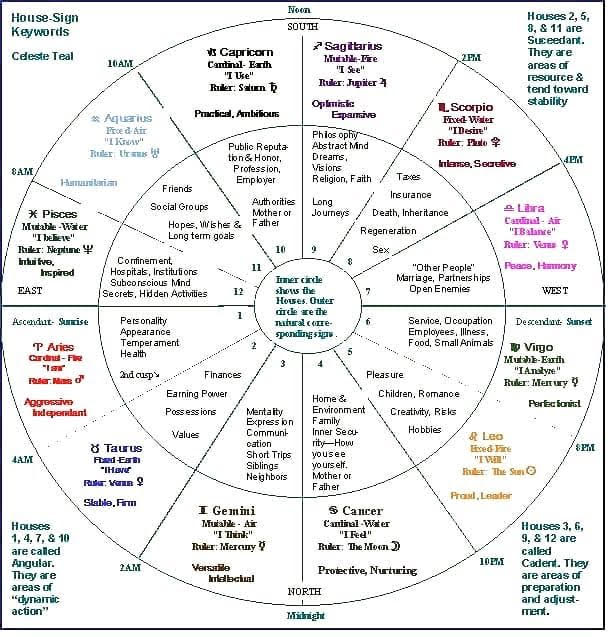
Following are the detailed significations of signs, planets and numbers:
Aries:- Head, chemicals, ancient history, ancient scripts, fiery, technical machinery etc.
Taurus:- Face, fortune, medicine, painting, singing, music, fine arts, rich house or fortune.
Gemini:- Intellect, shoulders, law, dual sign, business, trading, etc., house of intellect.
Cancer:- Moon's house, mother's house, heart, breast, watery, milk, hotels, restaurants, foreign land, frequent changing, moody, etc.
Leo:- Father's house, capital city, medicine, fiery, chemistry, stomach/spine, gas, leader, head of the dept, pious, kingly, Govt. headquarters, etc.
Virgo:- Law, Judicial, dominating, intellect, vegetation, business, trade, fickle, commercial house, etc.
Libra:- Rich, Banking, Gold and Jewellery, fine arts, good, beautiful, luxury, vehicles, royal, house of pleasures, etc.
Scorpio:- lron and steel, Machinery, chemicals, police dept., army personnel, mantras, brothers, introvert sign, sex organs, etc.
Sagittarius:- Dual sign, forest, half good and half bad, dry, banking, teaching, guru, religious, accountancy, thighs, noble, etc.
Capricorn:- Watery, holy place, village head, slim, cautious, royal, politicians, waist, etc.
Aquarius:- Village, holy waters, renunciation, kingly, politics, liquors, good, etc.
Pisces:- Dual sign, liberation, feet, pious, holy, salvation, noble, religious, etc.
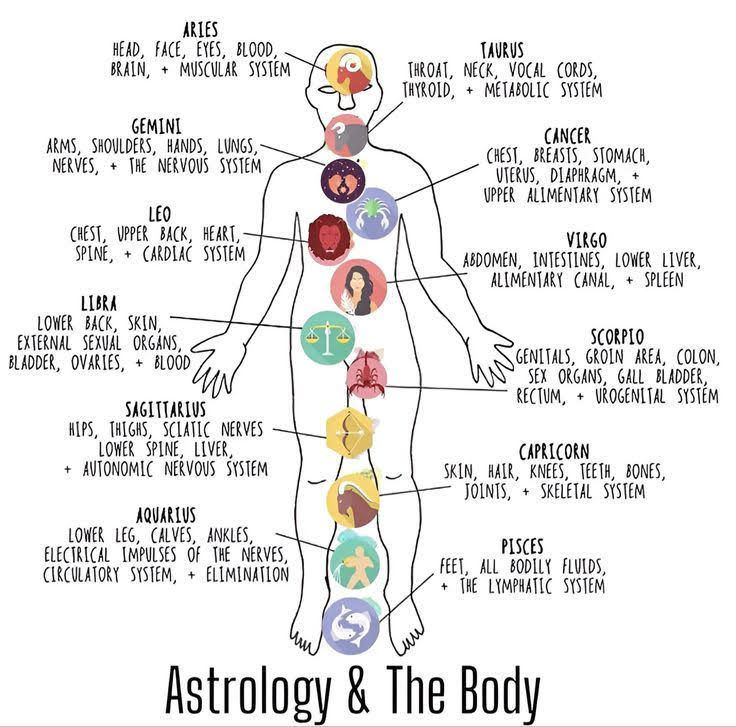
Sun:- Temple, Shiva, bones, father, head of the dept., medicine, city, man, religion, vedic, teaching, hard, promotion, Govt. Honors, development, name and fame, etc.
Moon:- Mother, woman, milk, fickle, changing, smooth, virtuous, restaurants, eatables, hotels, foreign land, psychology, soft, travels, wells, and mind.
Mars:- Brothers, sisters, boils, blood, Govt. Service, accidents, typing, printing, spirits, rape, desires, mantras, vedas, machinery, labour, house, land and building, man, Hanuman, Durga, breaks in education, accidents. In a female horoscope - husband.
Mercury:- Education, intelligence, trade and business, law, judicial, twin, double, stomach, son, dual, languages, talking, children, good happenings, etc.
Jupiter:- Life force, native, living way of life, body, guru, teacher, religion, banking, preacher, chest, holy, pious, nature, moral, principles, gains, philosophy, spiritual science, judicial services, etc.
Venus:- Eyes, good natured, riches, costly, gold and jewellery, smooth, wife (in a male's horoscope), vehicles, development financially, marriage, female child, mistress, sweet drinks, juices, etc.
Saturn:- Action, Karma, duty, profession, bad periods, death, delay, desire to do, obstacles, village headman, spirits, livelihood, etc.
Rahu:- Dryness, gas, empty, trouble, death, accidents, mouth, roads, beginning of the road, family circle, Part of the city (Rahu's placement) in which the native is born, Spirits, fear, photographer, typist, darkness, secret, etc.
Ketu:- Tail, end of the family circle, salvation, pilgrimage trips, surgery, bad periods, electrocution, diseases, death, hot things, electrification, doctors, teachers, preacher, vedic, astrology, chemistry, end, death, photographer, light, etc.
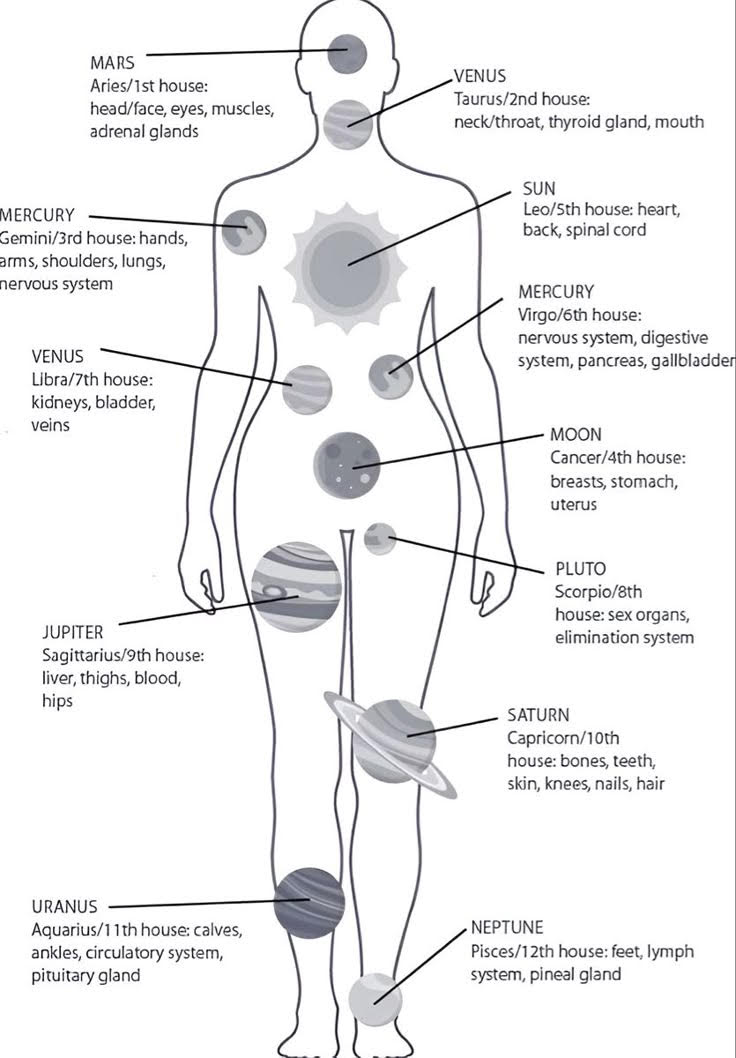
1: Represents leadership, independence, new beginnings, and self-reliance. Individuals with the number 1 are often assertive, determined, and have a strong desire to excel.
2: Symbolizes balance, harmony, cooperation, and diplomacy. People with the number 2 are often sensitive, compassionate, and seek to create peace and understanding.
3: Represents creativity, optimism, and social interaction. Individuals with the number 3 are often imaginative, expressive, and enjoy being surrounded by others.
4: Represents stability, practicality, and organization. People with the number 4 are often grounded, reliable, and build solid foundations.
5: Symbolizes freedom, adventure, and change. Individuals with the number 5 are often adaptable, curious, and embrace new experiences.
6: Represents nurturing, love, and harmony. People with the number 6 are often caring, compassionate, and seek to create a sense of peace and balance.
7: Symbolizes wisdom, intuition, and introspection. Individuals with the number 7 are often analytical, spiritual, and seek to understand the deeper meaning of life.
8: Represents abundance, success, and material well-being. People with the number 8 are often ambitious, organized, and have a strong desire for financial independence.
9: Symbolizes completion, compassion, and humanitarianism. Individuals with the number 9 are often idealistic, generous, and dedicated to making a positive impact on the world.
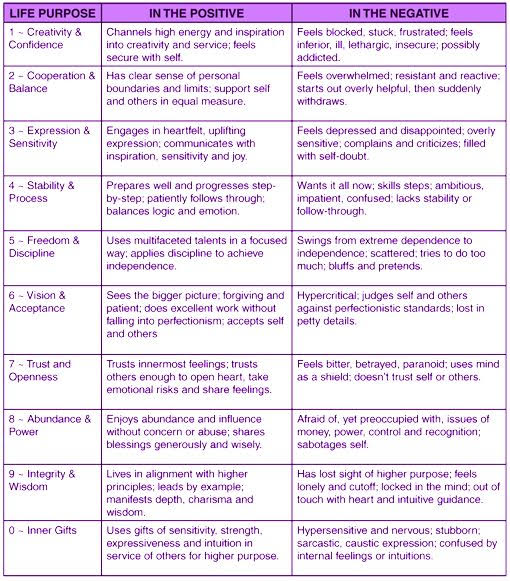
The following are the esoteric vibrations of the numbers in relation to the life forces of the planets:
1 = sun (leadership, vitality)
2 = moon (emotions, intuitions)
3 = jupiter (luck, benevolence)
4 = rahu (disruption, obsession)
5 = mercury (adaptability, communication)
6 = venus (beauty, harmony)
7 = ketu (detached, spiritual)
8 = saturn (discipline, endurance)
9 = mars (aggression, transformation)
Just like our date and time of our birth determines our destiny in astrology, similarly, Numerology is also dependent on the birth date.
For example, if a person is born on 20/03/2002, we calculate the Moolank (life path) and Bhagyank (destiny path):
Moolank: 2+0 = 2
Bhagyank: 2+0+0+3+2+0+0+2 = 9
So this person has moon (emotions, intuitive) and mars (aggression, transformation) energies, and is diplomatic (2) and humanitarian (9) in nature.
Similarly, we can predict about life using numerology.
There is a unique kind of numerology originated from China ~4000 years ago, called the Lo Shu Grid. There was a Chinese ruler name as Wu-of-Hsia, who was trying to find solutions to the flood caused due to Hwang-Ho river, his country’s people were regularly devastated by the flood. One day, the emperor was crossing the river and saw a turtle, whose shell was 3*3 grid imprinted. That perfect 3*3 square was named Lo Shu Grid.
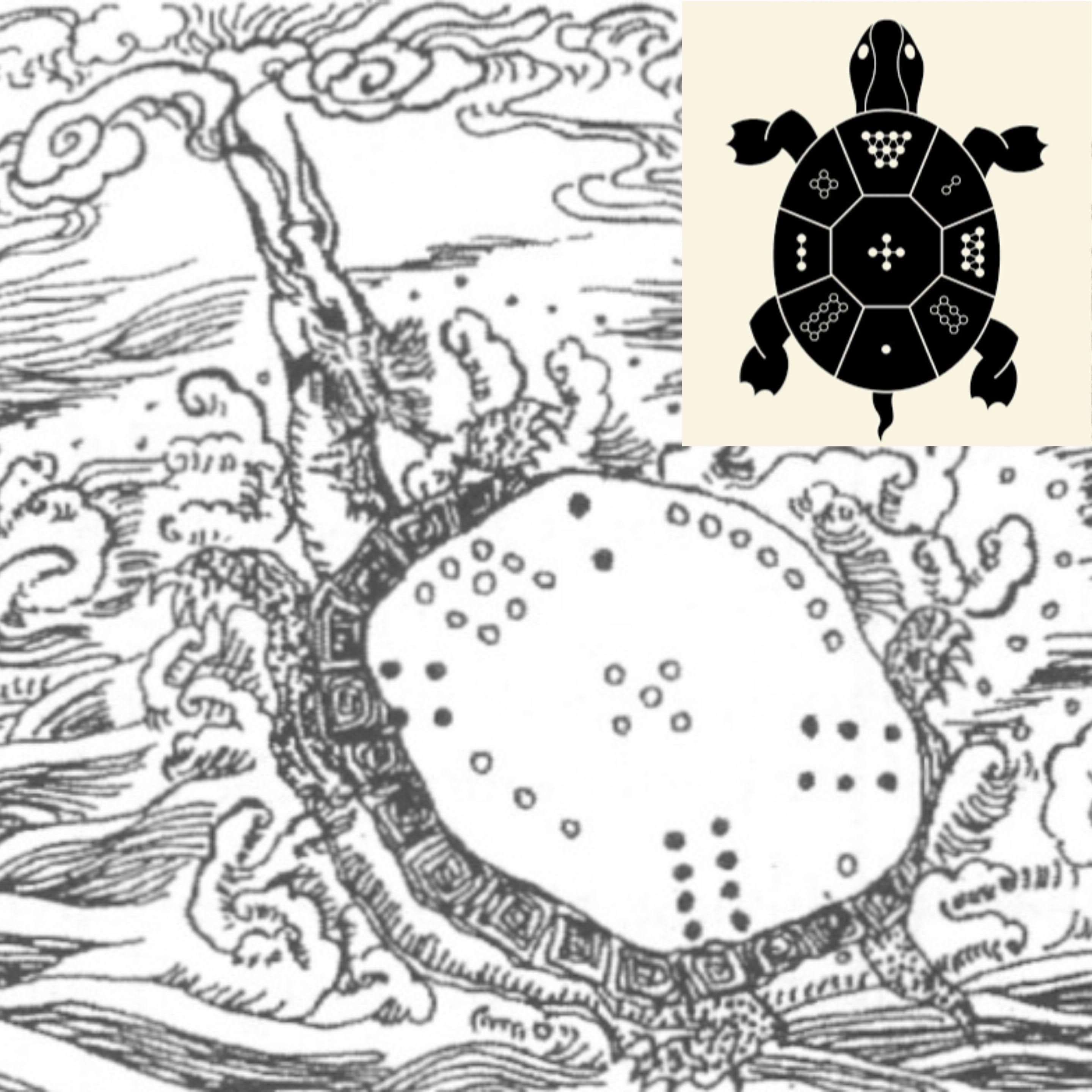
In Lo Shu Grid numerology,
Number 1: Career & Plans.
Number 2 : Marriage, Happiness, & Initiation.
Number 3 : Health & Education.
Number 4 : Wealth & Prosperity.
Number 5 : Strengths, Communication, & Stability.
Number 6 : Helping, Friends, Opportunities, & Luxury.
Number 7 : Mental, Creativity, & Child.
Number 8 : Knowledge, Memory, & Prosperity.
Number 9 : Name, Recognition, Energy, & Fame.
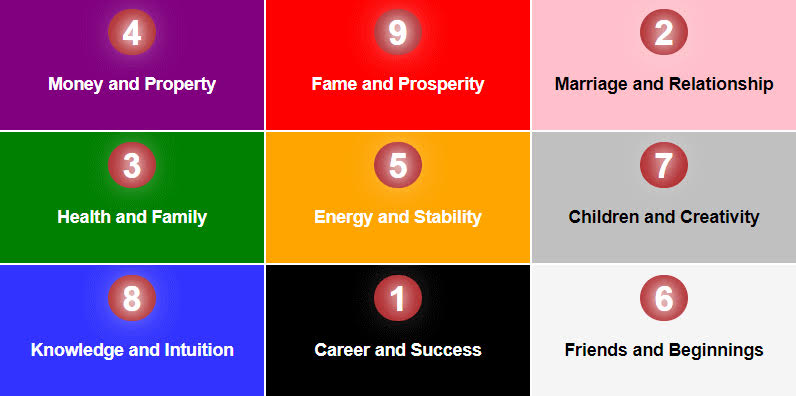
In order to find our Lo Shu Grid predictions, we create a grid box, and only fill out the numbers that we have in our birth date, Mulank (life path) and Bhagyank (destiny path). Mulank is the sum of the digits of the day (DD) in your Date of Birth (DOB). Bhagyank is the sum of all digits in your DOB (DD-MM-YYYY).
In our example we have DOB 20-03-2002, so Lo Shu Grid contains 2, 2, 2, 2, 3, 9. The grid looks like this:
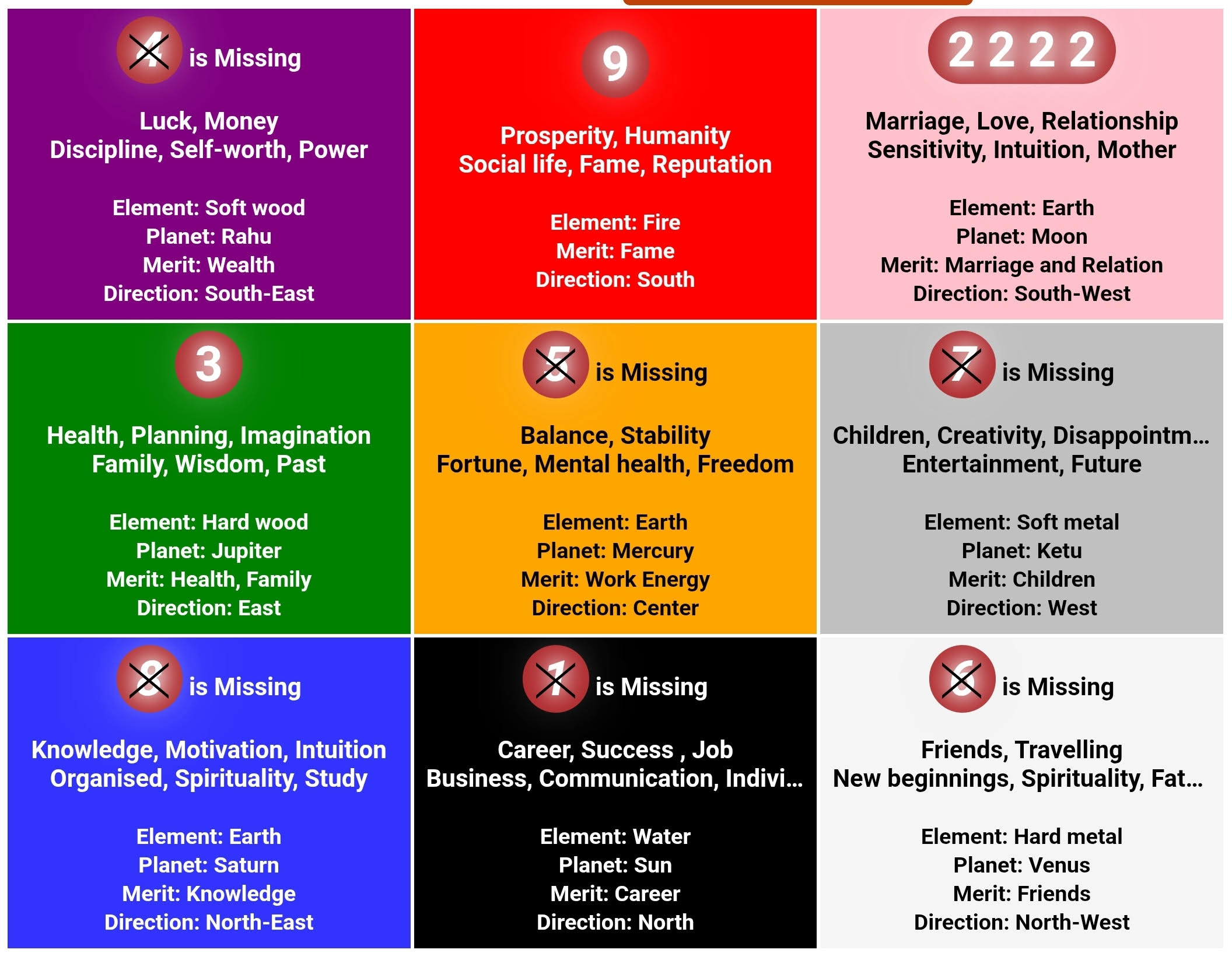
Numbers present:
2, 2, 2, 2 : The four 2s (2 in Mulank, and three 2s from DOB) makes the native so sensitive that they like to be a loner. They're impatient and overreact to circumstances. Their marriage or love life may face problems due to their reclusive, choosy, and difficult to handle behavior.
3 : The single 3 makes the native outstanding in memory, wisdom and creativity. They're down to earth, honest, and hopeful towards reaching their goals. They've a sound health during the life journey.
9 : The single 9 makes the native intelligent, ambitious and humanitarian. They like to be social and famous in society. They earn good reputation and prosperity. They've the intellectual ability to do the right things.
Numbers absent:
1 : Career loss, Lack of direction or purpose in life, Difficulty making decisions, Feeling lost or disconnected from one's own identity, Difficulty creating or maintaining relationships, Financial and career setbacks
4 : Deficiency in fortune and wealth, Financial difficulties, Illness or health issues, Career setbacks, Lack of money
5 : Lack of life energy, Lack of balance and stability, Problems with communication, Difficulties in decision-making, Lack of adaptability
6 : Lack of attachment with friends and relatives, Problems in relationships, Hardship or setbacks in achieving success, Imbalance in the flow of energy
7 : Children and optimism problems, Decreased luck and fortune, Negative energy and vibes, Difficulty attracting positive opportunities, Increased likelihood of negative events or setbacks
8 : Lack of knowledge, Negative effects on prosperity and financial success, Decreased luck and success, Lack of discipline and will power
These are just predictions, some of them might be relatable and some might not be true. After marriage the Lo Shu Grid changes as the spouse's energies and destiny gets interlinked to each other, hence counter balancing each other.
In Lo Shu Grid there are even more accurate predictions possible, like Raj Yoga, etc., using the eight types of planes or lines:
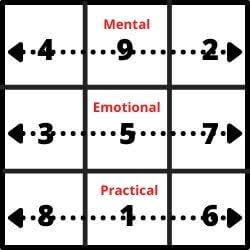
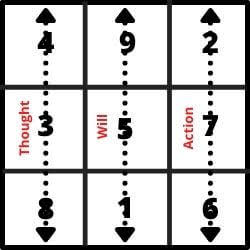
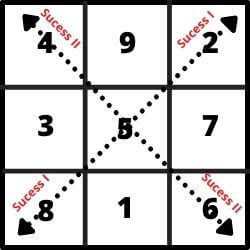
Similarly, we can find lots of insights into one's life using Lo Shu Grid numerology.
According to ancient Vedas and Kabbalah there is also a vibrational connection between numbers, planets, alphabets and sounds. Cymatics proves that vibrations create geometric patterns, hence sounds shape reality. And that is how and why Mantras work, like Om, etc. Babies are also given name based on their birth nakshatras to align with destiny. The following are some of the Sanskrit sounds representing the planets' energies:
1) Vowels, sounds of the Sun: a, ā, i, ī, u, ū, r, f, I, II, e, ai, o, au.
2) Ka-varga, sounds of Mars: K, Kh, G, Gh, ń.
3) Ca-varga, sounds of Venus: C, Ch, J, Jh, ñ.
4) Retroflexs, sounds of Mercury: t, th, d, dh, n.
5) Dentals, sounds of Jupiter: T, Th, D, Dh, N.
6) Labials, sounds of Saturn: P, Ph, B, Bh, M.
7) Semi-vowels, sounds of the Moon (+Ketu): Y, R, L, V.
8) Sibilants & H, sounds of the Moon (+ Rahu): Sh, Sh, S, H.
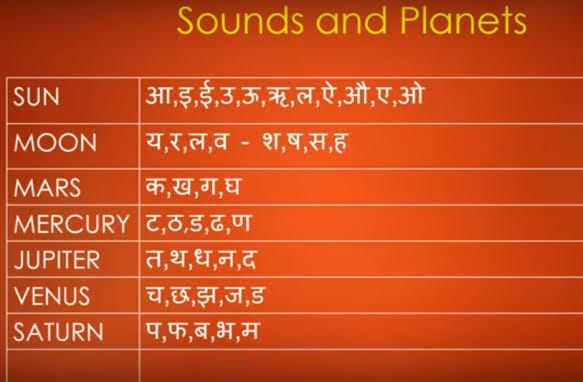
The Sanskrit letters - a, aa, e, ee, u, oo, ru, roo, ae, aai, o, ou - represent respectively the 12 signs from Aries. Similarly - ka, gna, cha, jna, ta, nna, tha, na, pa, ma, ya, and ra - signify the 12 signs of the zodiac. The remaining - la, va, lla, lla, ra, na - cannote the six signs from Aries.
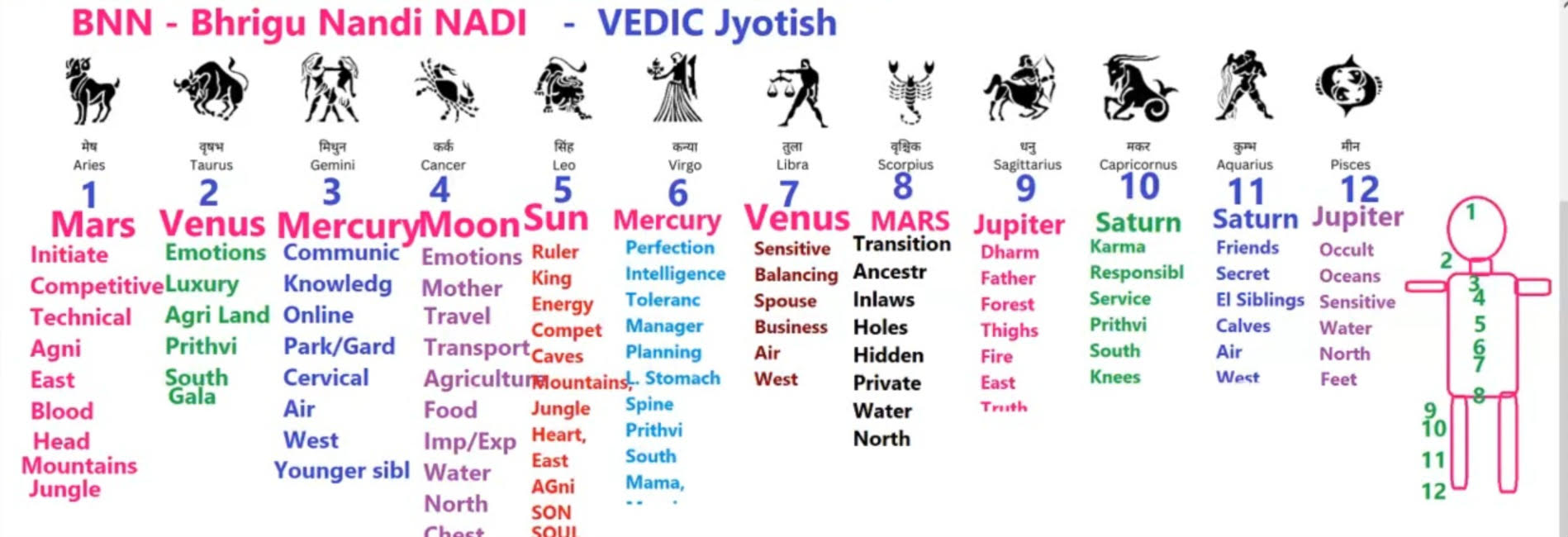
In western numerology, invented by the mathematician Pythagoras, we denote:
A, J, S = 1 (Sun)
B, K, T = 2 (Moon)
C, L, U = 3 (Jupiter)
D, M, V = 4 (Rahu)
E, N, W = 5 (Mercury)
F, O, X = 6 (Venus)
G, P, Y = 7 (Ketu)
H, Q, Z = 8 (Saturn)
I, R = 9 (Mars)

The name’s letters are converted to numbers, revealing:
Soul Urge (Vowels) -> Inner desires
Personality (Consonants) -> Outer expression
Destiny (Full Name) -> Life path
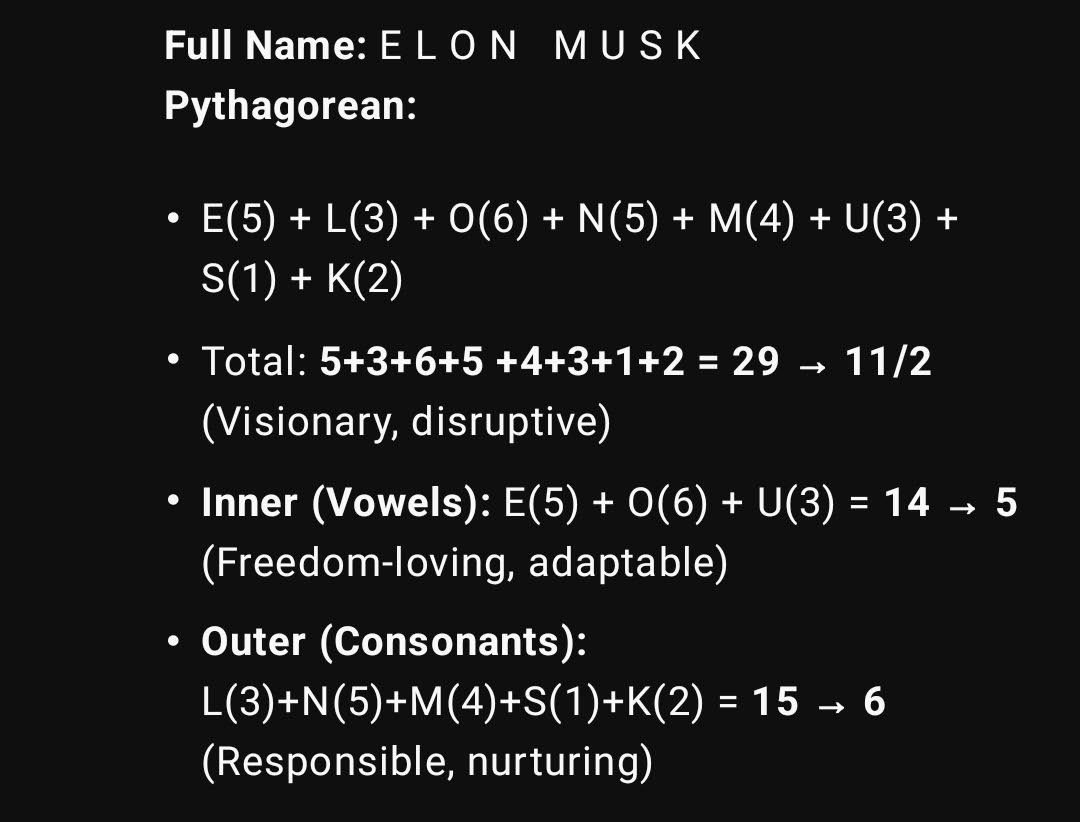
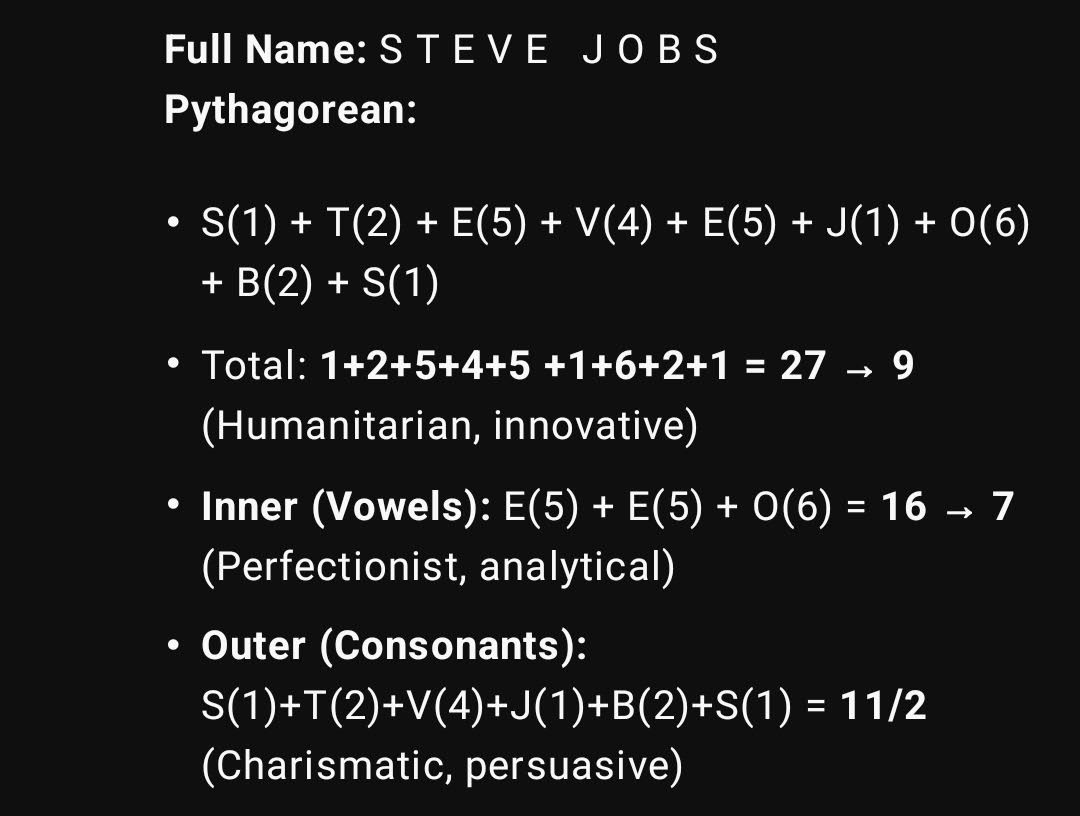
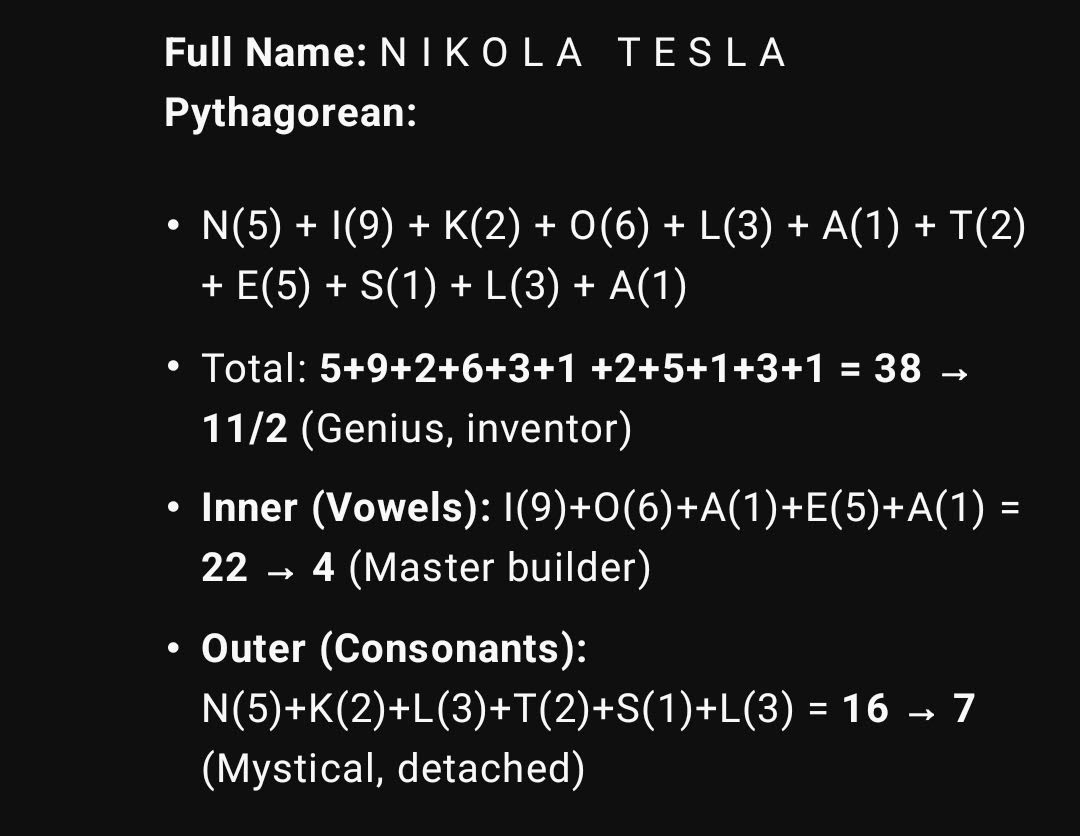
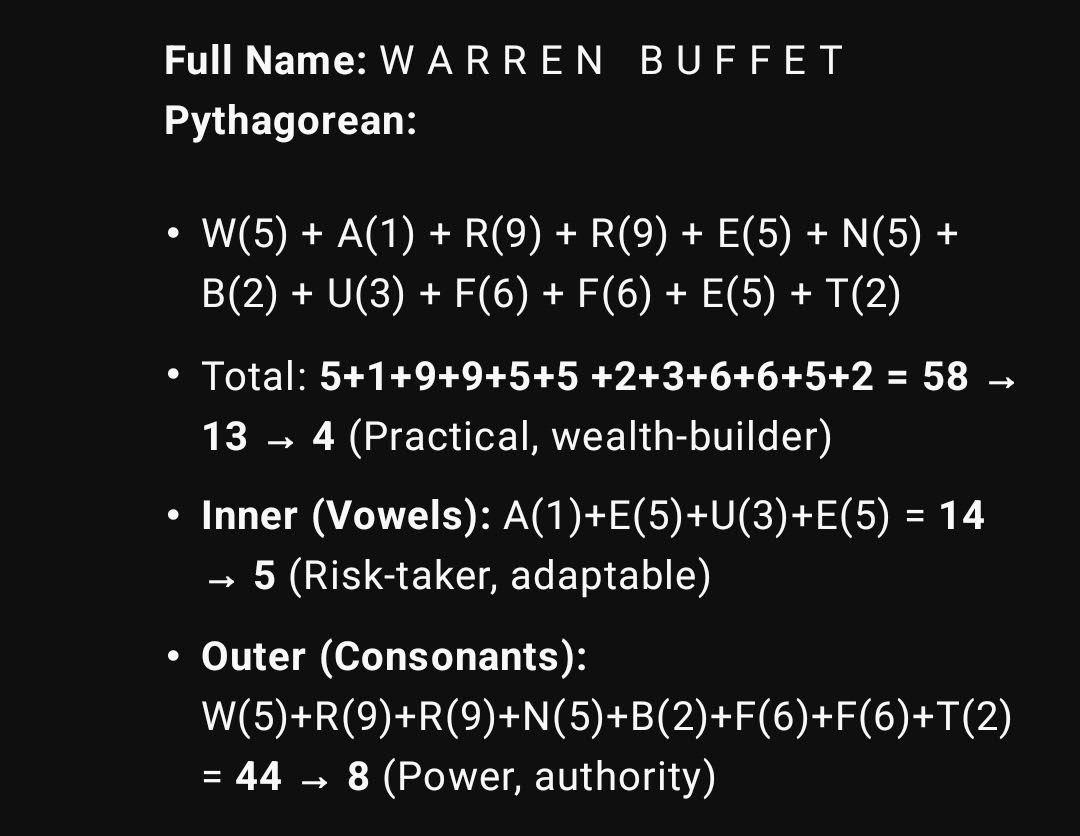
Similarly, you can calculate and verify for various names.
So far, you must have noticed that whatever we've mentioned seems to predefine our destiny, such as, planetary positions, date and time of birth, numbers (1-9), name, sounds, etc., everything has a set of constant energies. That means, somehow with this much information, we should be able to predict accurate life events individually and collectively. But obviously that doesn't happen (otherwise Astrologers and esoteric scientists would be the hackers of the universe, but in reality they're only the educators of the universe.)
We know that the absolute truth of the universe is the cosmic time, which is cyclic. But this is true until 2 or 3 dimensions. But at n dimensions, we don't know how the topology of the cylinder will look like in imaginations - it can be elliptical, hollow or a wormhole like toroid - atleast I don't know yet. Although we can predict what type (qualitative) of future we'll have, we can't predict what will be (quantitative) the future, yet.
Therefore, it brings the concept of free will, uncertainty and potential (angel number 0) into our destiny.
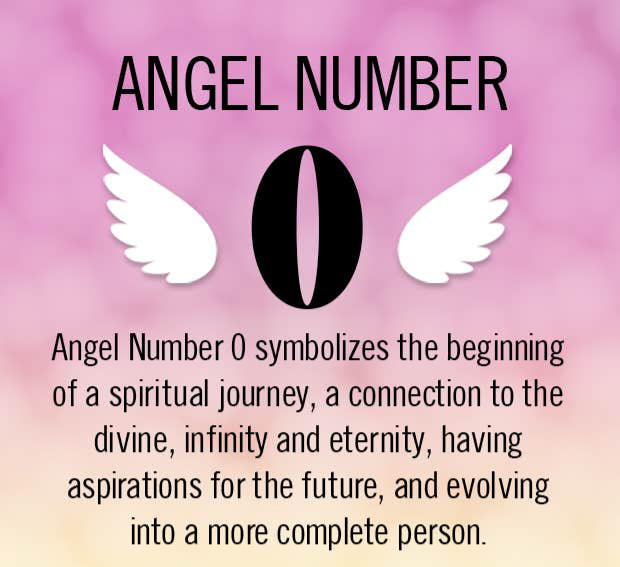
In numerology as well, 0 holds immense power. It is the source of all creations (beginning of a cycle, preceeding the number 1), foundation of infinite possibilities (any number divided by 0 is undefined), and the bridge between physical and metaphysical/spiritual world. The only difference between a million and a billion on paper is a set of zeros, but it varies greatly in terms of values.
Let's dive into a practical application of numerology for Business naming based on the type of success required.
Numerology is based on the concept that numbers and sounds in names carry energies that affect our destiny. So, numerology is not only applied for naming humans. It's also used to name businesses. Whether consciously or unconsciously, many successful companies use esoteric principles, like numerology, vastu, founding dates and timings, etc.
Example:
1. SAMSUNG (22)
Core Numerology:
Name Sum: 22 (Master Number) - The Master Builder, representing large-scale impact, engineering prowess, and global infrastructure.
Reduced: 22->2+2=4 (Stability, structure, discipline).
Destiny Number (Full Name Sum):
SAMSUNG ELECTRONICS (if considering
the full legal name): S(1)+A(1)+M(4)+S(1)+U(3)+N(5)+ G(7)+E(5)+L(3)+E(5)+C(3)+(2)+ R(9)+0(6)+N(5)+1(9) C(3) S(1)=73=10->1 (Leadership, innovation, dominance in tech).
Stock Ticker: "005930" (Korea Exchange), Sum: 0+0+5+9+3+0=17=8 (Power, wealth, corporate control)
Founding Date: March 1, 1938 -> 3+1+1+9+3+8=25=7 (Mystery, research, intellectual property).
Key Insight: Samsung operates on 22 energy (global mastery) but reduces to 4 (discipline) and 1 (leadership) in its full name. The stock ticker 8 signifies financial power, while the founding 7 aligns with its deep R&D focus.
2. TESLA (3)
Core Numerology:
Name Sum: 3 (Creativity, innovation, expression). Tesla's namesake (Nikola Tesla): N(5)+1(9)K(2)0(6)+L(3)+A(1)+ T(2)+E(5)+S(1) L(3)+A(1)=38->11 (Master Number of inspiration).
Destiny Number (Full Name): TESLA INC. 3+9+5 =17=8 (Power, transformation).
Stock Ticker: "TSLA"
T(2)+S(1)+L(3)+A(1)=7 (Mystery, technology, speculation).
Founding Date: July 1, 2003 -> 7+1+2+0+0+3=13=4 (Structure, but also karmic debt)
Key Insight: Tesla vibrates to 3 (creativity) and 11 (visionary genius), but its stock ticker 7 suggests volatility and high-tech mystique. The founding 13 or 4 hints at struggles (Musk's "production hell") before achieving structure.
3. BERKSHIRE HATHAWAY (11)
Core Numerology:
Name Sum: 11 (Master Number of intuition, investing genius).
Reduced: 11=2 (Partnerships, duality- Buffett & Munger).
Destiny Number (Full Name):
BERKSHIRE HATHAWAY INC. -> 5 (Berkshire) + 6 (Hathaway) + 9 (Inc.) = 20=2 (Diplomacy, long-term growth).
Stock Ticker: "BRK.A" / "BRK.B", B(2)+R(9)+K(2)=13=4(Stability, value investing).
Founding Date: 1839 (as a textile company),
Acquired 1965, 1965: 1+9+6+5=21=3 (Expansion, diversification).
Key Insight:
Berkshire's 11 energy reflects Buffett's legendary intuition, while the ticker 13 or 4 aligns with value investing. The 3 founding energy (1965) matches its growth into a conglomerate.
4. ΟΡΕΝΑΙ (6)
Core Numerology:
Name Sum: 6 (Responsibility, harmony, Al ethics)
Destiny Number (Full Name): OPENAI LP-6+3+7=16=7 (Wisdom, secrecy, research).
Stock Ticker: Private (No IPO yet). If using "OPENAI" as a ticker: 6 (Same as name).
Founding Date: December 11, 2015 ->
12+11+2+0+1+5=31=4 (Structure, but also restriction-see board conflicts in 2023).
Key Insight:
OpenAl's 6 reflects its ethical Al mission, but 16 or 7 in its full name suggests hidden knowledge (like GPT's secret training). The founding 31 or 4 hints at structural challenges (e.g., leadership drama).
5. GOOGLE (7)
Core Numerology:
Name Sum: 7 (Knowledge, search algorithms, mystery).
Destiny Number (Full Name): GOOGLE LLC-7+3+3=13=4 (Data centers, infrastructure).
Stock Ticker: "GOOGL",
G(7)+0(6)+0(6)+G(7)+ L(3) = 29 = 11 (Master Number of innovation).
Founding Date: September 4, 1998 -> 9+4+1+9+9+8=40=4 (Stability, scaling).
Key Insight:
Google's 7 aligns with its search dominance, while GOOGL as 11 reveals its innovative core. The 4 founding energy matches its infrastructure focus.
6. MICROSOFT (1)
Core Numerology:
Name Sum: 1 (Leadership, dominance)
Destiny Number (Full Name): MICROSOFT CORPORATION = 1+3 = 4 (Corporate stability).
Stock Ticker: "MSFT",
M(4)+S(1)+F(6)+T(2)=13=4
(Structure, enterprise software). Founding Date: April 4, 1975, 4+4+1+9+7+5=30=3 (Expansion, PC revolution)
Key Insight:
Microsoft's 1 energy reflects Gates' ambition, while MSFT as 13 or 4 aligns with its OS monopoly. The 3 founding energy matches its role in the PC boom.
7. AMAZON (7)
Core Numerology: Name Sum: 7 (Data, analytics, mystery).
Destiny Number (Full Name):
AMAZON.COM INC. = 7+3+9=19=10=1 (Dominance, disruption).
Stock Ticker: "AMZN",
A(1) M(4) Z(8) + N(5) =18 =9 (Global reach, e-commerce).
Founding Date: July 5, 1994 - 7+5+1+9+9+4=35=8 (Wealth, power).
Key Insight: Amazon's 7 reflects its algorithmic nature, while AMZN as 9 signifies global expansion. The 8 founding energy aligns with its financial dominance
Therefore, we can observe that:
Master Numbers (11, 22, 33): Samsung (22), Berkshire Hathaway (11), and Google's ticker (11) indicate high-impact companies.
Tech Companies (Google, Microsoft, Amazon, OpenAI): All have 7 or 1 energy, reflecting intellect and leadership.
Founding Dates: Many reduce to 4 (structure) or 3 (expansion), showing how these companies scaled.
Based on everything we've learnt so far, we can see that esoteric science helps us to understand our karmic patterns, habits, strengths and weaknesses. We've also learnt how life, planets, numbers, sounds, alphabets, etc., are interconnected through cosmic energy flowing through the cosmic time - the absolute truth. But so far we've only seen the effects on individual lives. (There’s also study of medical astrology and financial astrology, we'll look into these shortly after this.)

In the real world, we as individuals coexist with different human beings, in different environments. Therefore, planetary effects and destiny of others also affect our lives. (Proving the famous quotes: Your life is determined by the closest 5 friends you have. Whenever you wish for something wholeheartedly, even the whole world will help you get that, etc.)
This leads us to Astrocartography or astrology of locations. When we're born, each planet is in a specific sign and degree. We can plot a world map where each planet was angular (rising, culminating, setting or anti-culminating) using our birth time. Lines are shown as vertical curves on a map. Places near those lines intensify the corresponding planet's influence.
ASC Line – Planet is rising in the East (1st House) → Strong personal identity, ego, physical vitality
MC Line – Planet is at the Midheaven (10th House) → Public status, career, fame, life goals
DSC Line – Planet is setting in the West (7th House) → Relationships, partnerships, how others treat us
IC Line – Planet is at the Nadir (4th House) → Home, ancestry, private life, emotional foundations
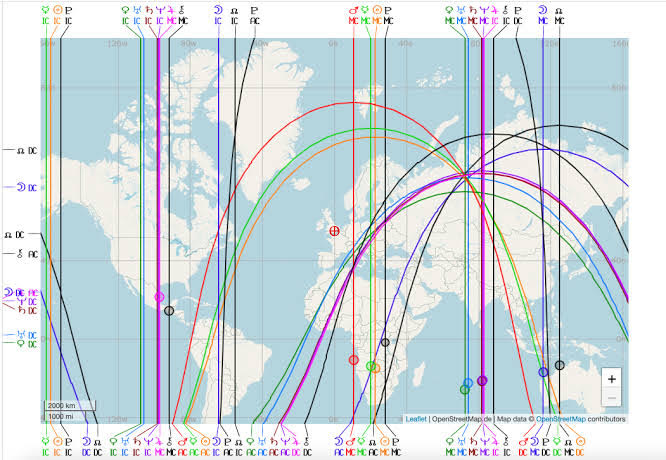
Planet - When near ASC/MC/etc. - Pros - Cons:
☉ Sun - MC / ASC - Recognition, confidence, vitality, leadership Ego - inflation, burnout, dominance struggles.
🌙 Moon - IC / DSC - Nurturing, emotional connection, creativity, healing - Oversensitivity, mood swings, dependence.
☿ Mercury - ASC / MC - Networking, writing, studying, business, quick wit - Anxiety, overstimulation, lack of emotional depth.
♀ Venus - DSC / MC - Love, beauty, pleasure, social success, artistic growth - Laziness, people-pleasing, distractions.
♂ Mars - ASC / MC - Drive, competition, energy, strength, sex - Aggression, conflict, accidents.
♃ Jupiter - ASC / MC / IC - Abundance, growth, travel, prosperity, education - Overindulgence, arrogance, excessive risk.
♄ Saturn - MC / ASC / IC - Discipline, structure, long-term success - Loneliness, delays, stress.
♅ Uranus - MC / ASC / DSC - Innovation, freedom, sudden change - Chaos, instability, rebellion.
♆ Neptune - IC / ASC / DSC - Spirituality, dreams, illusion, creativity - Confusion, deceit, escapism.
♇ Pluto - ASC / IC / MC - Transformation, power, inner alchemy - Intensity, control issues, crises.
☊ Rahu / ☋ Ketu - ASC / MC / DSC - Karmic acceleration, spiritual destiny or detachment - Addiction (Rahu), loss or withdrawal (Ketu).
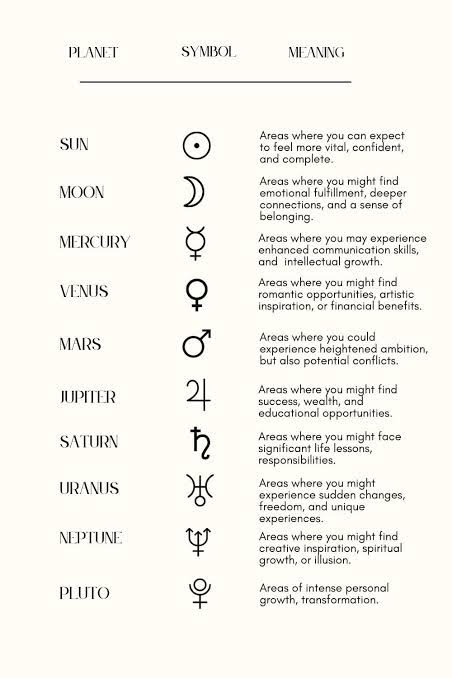
The Earth’s rotation shifts the angular house positions, creating different local times. Because angular houses are the most powerful (1st, 4th, 7th, 10th), when a planet becomes angular at a location, its influence becomes visible and impactful. This amplifies the subjective field: your identity, relationships, career, or home life.
Relocation - Best places to move for:
Career - Look at Sun MC, Jupiter MC, Saturn MC.
Love/Marriage - Look at Venus DSC, Moon DSC.
Healing or solitude - Moon IC, Neptune IC, Ketu Lines.
Wealth creation - Jupiter ASC/MC, Mars MC.
Spiritual progress - Neptune ASC/MC, Ketu IC, Saturn IC.
Combining Astrocartography with planetary dashas and transits in our birth charts, we get even more precise predictions about the effect of locations in our lives.
There’s also a study of directions and soace in vedas, called Vastu Shastra. It's similar to Chinese Feng Shui, Egyptian Sacred Geometry, Islamic Ilm-e-Hind, and Greek Harmonics.
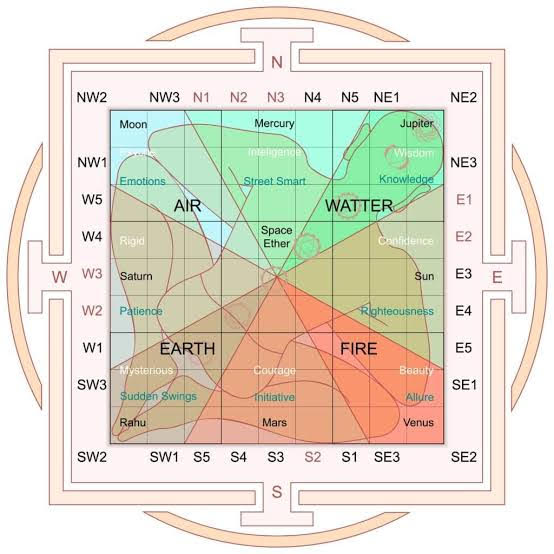
Element - Direction - Associated Planet - Qualities - Ideal Use in Space:
1. Fire (Agni) - Southeast (Agneya) - Venus - Energy, power, metabolism - Kitchen, fireplace, boiler
2. Water (Jala) - Northeast (Ishanya) - Jupiter - Purity, clarity, knowledge, healing - Meditation room, puja, water source, entrance
3. Earth (Prithvi) - Southwest (Nairitya) - Rahu - Stability, grounding, karmic anchoring - Master bedroom, heavy storage
4. Air (Vayu) - Northwest (Vayavya) - Moon Movement, networking, relationships Guest room, dining, windows
5. Space (Akasha) - Center (Brahmasthan) - Mercury - Ether, consciousness, expansion - Keep open, uncluttered; skylight, atrium, sacred space
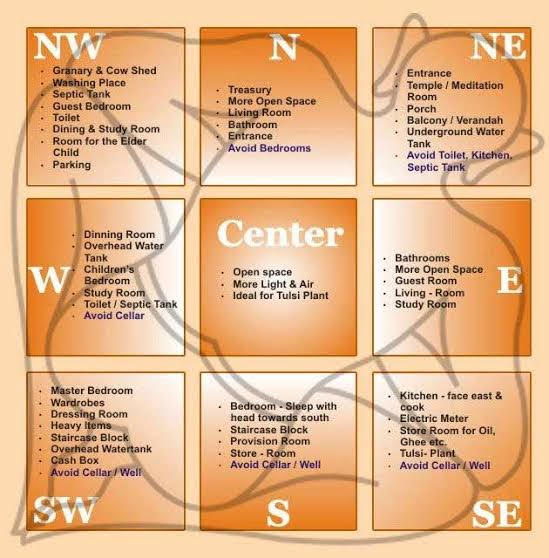
Somehow, through calculations or beliefs, the western and eastern sides ended up with two different systems for astrology (western and vedic astrology) as well as numerology (Pythagoras and Chaldean/based on Sanskrit sounds). Let's understand briefly the philosophical and mathematical differences between western and eastern systems.
Jyotish originated from ancient India, whereas Western astrology originated from ancient Greece. The western astrology uses Tropical Zodiacs based on the Earth’s seasons and the elliptical plane (Sun's apparent path). Whereas vedic astrology is based on sidereal zodiacs and fixed stars, and it uses lunar mansions or Nakshatras. Philosophically, western focuses on human psychology and solar cycles, while eastern focuses on karma and fixed star influences. But we're in the dark ages (Kali Yuga), so most of the real knowledge about zodiacs is lost. I think, sidereal zodiacs is based on cosmic time (hence karmic inprint and spiritual based, more objective experiences), whereas tropical zodiacs are based on the local influences (seasons) on the planet due to the Sun (hence psychological and real world based, more subjective experiences).
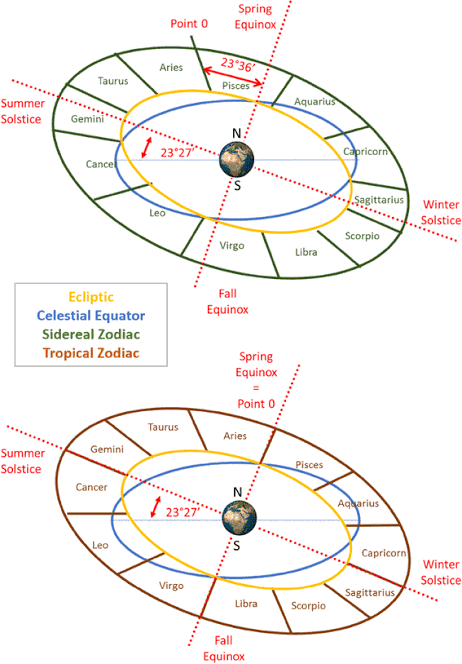
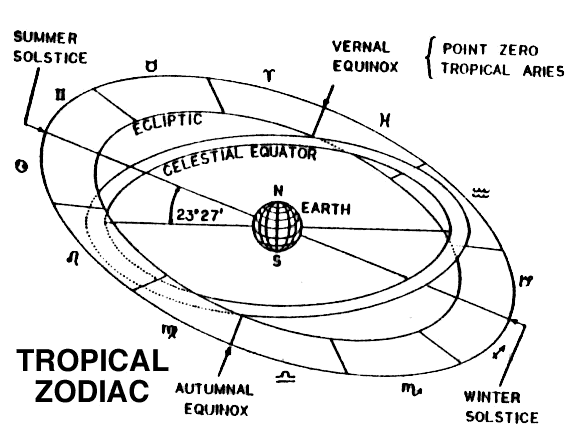
Pythagorean Numerology originated from the Latin/Greek ages, in which numbers 1-9 are assigned to letters. Whereas, Chaldean Numerology is originated from Babylonian and it's also same as Vedic Numerology, in which numbers are assigned based on vibrational phonetics, and it doesn't use the number 9.
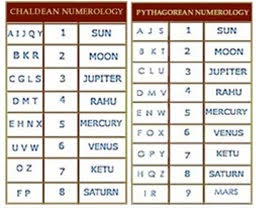
Therefore, philosophically, western systems favor human centric abstraction, whereas eastern/Chaldean systems favor cosmic symbolism. And the actual real knowledge is lost/hidden. So, in a way, vedic astrology tells us about the internal effects, spiritual aspects or "why" something happens or seems like in our lives. Whereas, western astrology tells us about the external effects, real world aspects or "how" something happens or seems like in our lives. Personally, I'm skeptical about both the "systems" because fundamentally they're both trying to fix energies into n categories, whether its 2 - yin yan, or 4 - seasons, or 8/9 - planets, or 12 - animals and zodiacs. But in reality, the cosmic energies spread across the universe through a spectrum of circle, so we can only approximately calculate in which position we shift from energy A to energy B, while in reality the energy shift is continuous not discrete. Similar to how we say that we perceive 7 colors in a rainbow but actually white light from sunlight is refracted by rain drops as a continuous spectrum of all colors of different wavelengths.
So, predictive astrology can be qualitatively true but not quantitatively. That means, we can only predict what kind of life event we'll face at what time period (I'll gain wealth through speculation at the age of 24), but not the exact event or time or it's consequences (I'll earn 23 millions by trading Bitcoin in January, 2025). So, we can't properly use qualitative astrology for practical usecases like predicting markets and diseases. But we can try to decode accurate predictions by looking at astrological combinations from different perspectives and reaching the same conclusion at all times (if we look at the same spot in a rainbow and it still looks red from different positions in space, we can confirm that it is really red and not an illusion or perspective).
Astrology can only predict what, when, why and how, but only you can decide who you are.
There are different systems in this world that try decode the universe: Vedic astrology, KP astrology, BNN astrology, Western astrology, Chinese astrology, Jaimini Astrology, Zi Wei Dou Shu, Bazi, Face reading, Palmistry, Numerology, Tarot, I Ching, Reiki, Ayurveda, Shamanism, Hermeticism, Kabbalah, etc. and if you consider more scientific - Causality, Relativity, Fractal cycles, Chaos theory, Entropy, Information theory, Game theory, Quantum mechanics, Financial models (Black Scholes, etc.), Macroeconomic cycles (Kondratiev, etc.), Enneagram, MBTI, Human design, Simulation theory, etc.
For every system the calculations and methods are based on the perceptions of the founders, through meditations, realizations, siddhis, experiences, observations or calculations. But ultimately they all (must) lead to the same predictions. It's similar to how we can use different trigonometric formulas to get same results. Reality is like a maze hiding the truth, as well as leading us towards it, across the cycle of cosmic time.
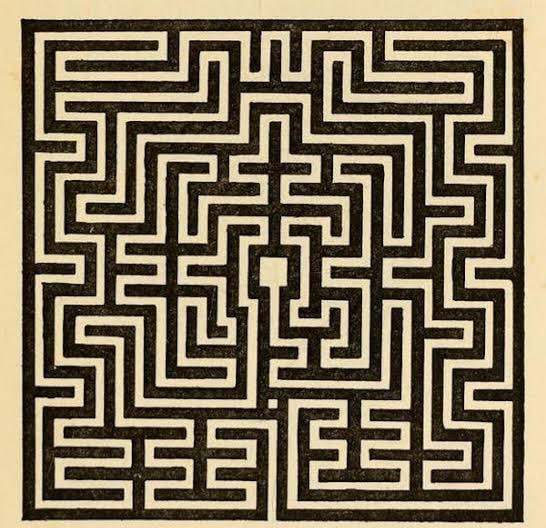
There are some Priests, Shamans, and Spiritual people who can do prophecies, and accurately predict the problems of their followers just by their presence. There are some special people in the government who can do mind reading. There are some Astrologers who can predict the question that the person comes with to ask them. There are also some esoteric techniques, such as, Tarot Cards and pendulum/spiritual guides in the west, and iChing in the east. All these require strong intuitive and spiritual power to perceive the unique information from the cosmic energies at that particular cosmic time. We can understand these better using KP horary and KP astrology concepts.
KP astrology is a more modern and hybrid (vedic and western mixed) form of astrology developed by Krishnamurti Paddhati in mid-20th century. It uses the concept of Horary, which means hour. Horary astrology is based on generating a chart based on the current time rather than the birth chart, and make predictions using it. KP horary uses the concept of cusps, nakshatra lords and sub lords to make even more precise predictions based on the cosmic energies in the present time. Hence, a lot of Astrologers (and spiritual people) use KP astrology or the concept behind it, to predict questions or problems of the native without even asking them, or making predictions without knowing anything about them. So, the basis of such predictions is that, at that particular moment and place, that particular event or information was fixed, irrespective of the mediums (Astrologer and native during astrology consulting, doctor and patient during medical consulting or surgery, etc.)
KP astrology introduces some new concepts for predictions, beyond what we discussed in Vedic astrology - Placidus syetem, Cusps, Nakshatra, Sub lords. There are different ways to calculate positions of houses (which is good, because houses represent the spectrum of some cosmic energies). Placidus house system uses time based houses rather than space based houses like in Vedic astrology. It is used in KP astrology and most western astrology. As it's time specific, the range of houses can vary, instead of being fixed as 30° (360°/12 signs). A house cusp is the beginning degree of a house. In KP astrology, 12 cusps are calculated using the Placidus house system. The 1st cusp is the Ascendant (rising sign and degree at birth). Each house cusp governs a specific life area (e.g., 7th = marriage, 10th = career). KP checks the sublord of a cusp to see if an event will happen. There are 27 nakshatras (lunar mansions or prominent stars), each 13°20', which are like precise sub category of 12 zodiacs.
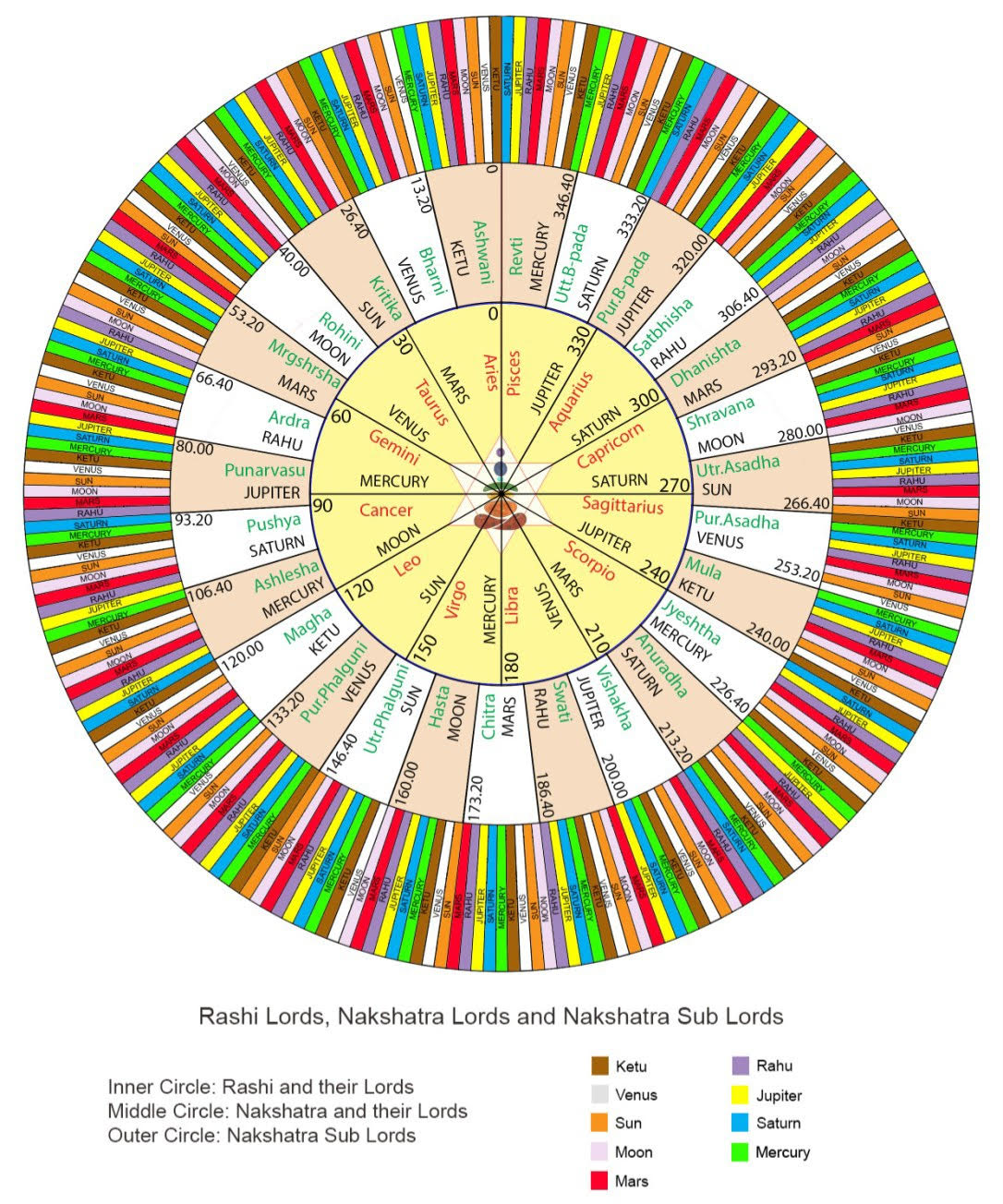
Let's try to look at the same chart in KP system that we used in Vedic system:
This is the original birth chart using Vedic astrology, where each house positions are fixed to 30° and planets (who's positions are fixed during birth) are placed in the respective houses accordingly.
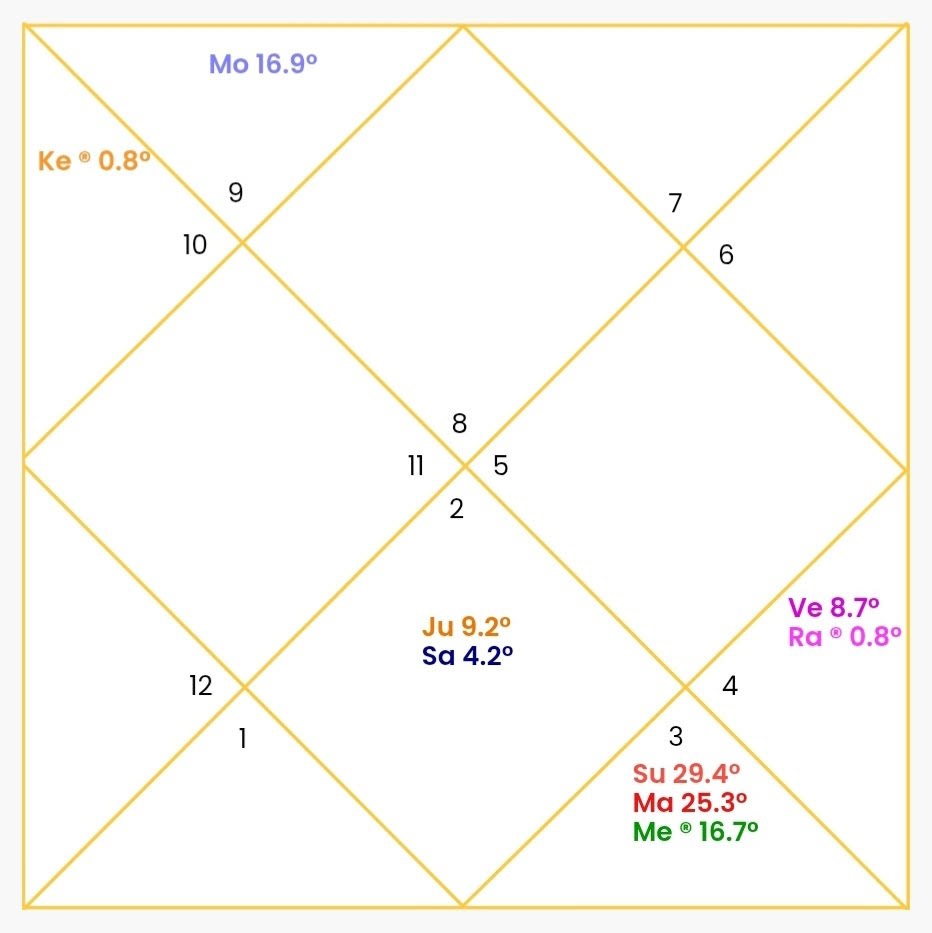
And this is the same chart using KP system. We can see how placements of some planets (who's degrees are fixed) have moved across the houses and some rashis are missing, because the house cusp positions have changed from equal 30° segments.
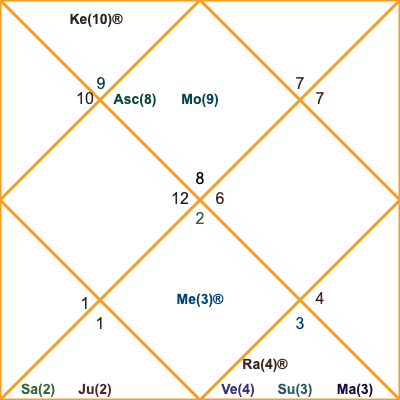
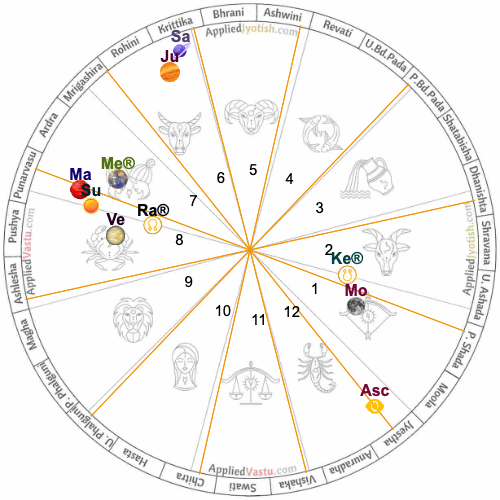
Based on these, we can do KP astrology predictions using the following rules:
1. A planet gives the result of: Itself -> Its Star Lord -> Its Sub-Lord. The Sub-Lord is the deciding authority. It overrides planetary dignity (Exalted, deliberated, combust, retrograde, enemy, friend, etc.) or house ownership.
2. Sub-Lord of a cusp decides the possibility of the event related to that cusp.
3. Event is promised only if Sub-Lord of event-related cusp must be significator of the required houses.
4. Priority of Importance: Sub-Lord > Star-Lord > Planet
5. To predict timing of an event, the Dasha, Bhukti, and Antara (DBA) lords must signify the house(s) that allow the event.
6. Once the event is promised by cusp + sub-lord, and the Dasha matches, the Transit of planet over star-lord or sub-lord of the house cusp triggers the event.
7. KP horary (prasna/question) rule: Select a number from 1 to 249. Chart is cast for that moment of query, with that degree number on the Ascendant. Check sub-lord of the relevant cusp and apply the above logic.
It is said that a good KP astrology prediction can give even 90-95% accuracy. And it's pretty algorithmic and straightforward to use, unlike Vedic or Parashara astrology, which has divisional charts (d1, d9, d10,..d60, etc.), and lots of intuitive calculations involved. Due to methodical, fast and accurate calculations of KP astrology, most Astrologers use this technique for predictions. (Similarly, there's another hybrid technique called Lal Kitab, which discusses remedies based on astrological predictions.)
Therefore, as KP horary is time-specific (time of prediction), this kind of astrology can also be used for financial and medical astrology, to predict accurate times for trading and diseases.
KP horary, I-Ching, and Tarot reading, all three have finite symbolic sets representing infinite reality. They reduce the infinite spectrum of possibilities into finite, interpretable archetypes.
Now we'll look into Bhav Chalit chart to get more accurate time predictions of events. Bhav means houses and chalit means movement. So, in this system we don't assume houses positions as fixed with each rashi and then fix planets in houses based on rashis, rather we arrange houses based on actual degrees and then a few other rules that we'll discuss. This will have huge impact in predictions in case the planets in natal chart are in Gandanta degrees or edges of houses, as they might shift houses and hace mixed effects in different houses.
In Vedic or Parashari astrology we generally distribute each house as 30°, fix ascendant in first house, hence each rashi is fixed in each house due to equal distribution and based on that we put planets into each rashi and determine the houses. But we've also seen that in KP system each house may not occupy one rashi entirely, and hence positions of houses are not fixed with each rashi as assumed till now.
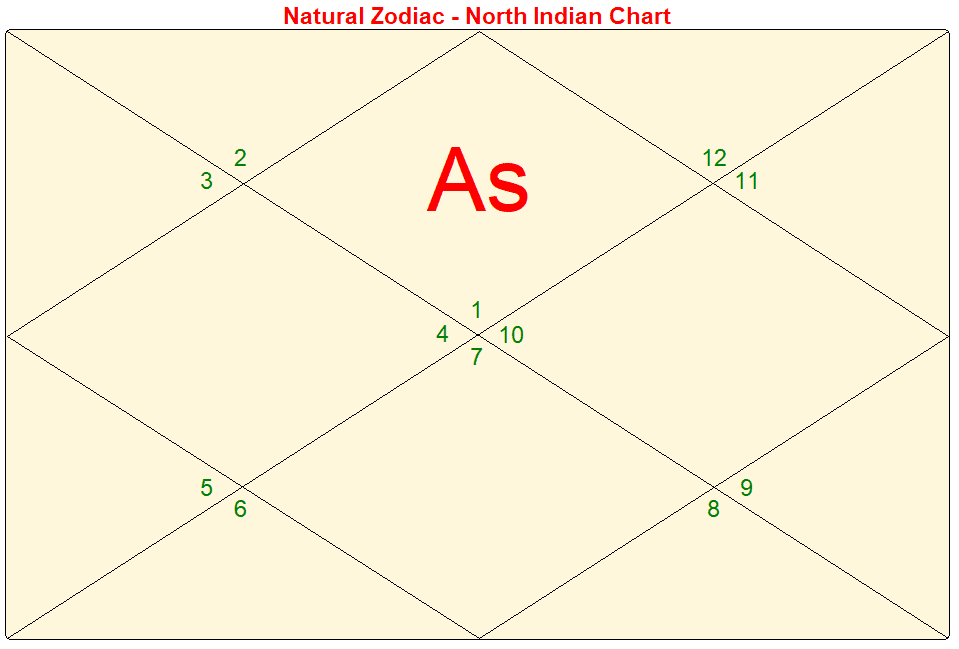
In western system we can see how rashis or zodiacs are distributed within 360° starting from Aries 0°-30° and so on, and houses will be decided based on degree of the ascendant, whose position will be set as first house.
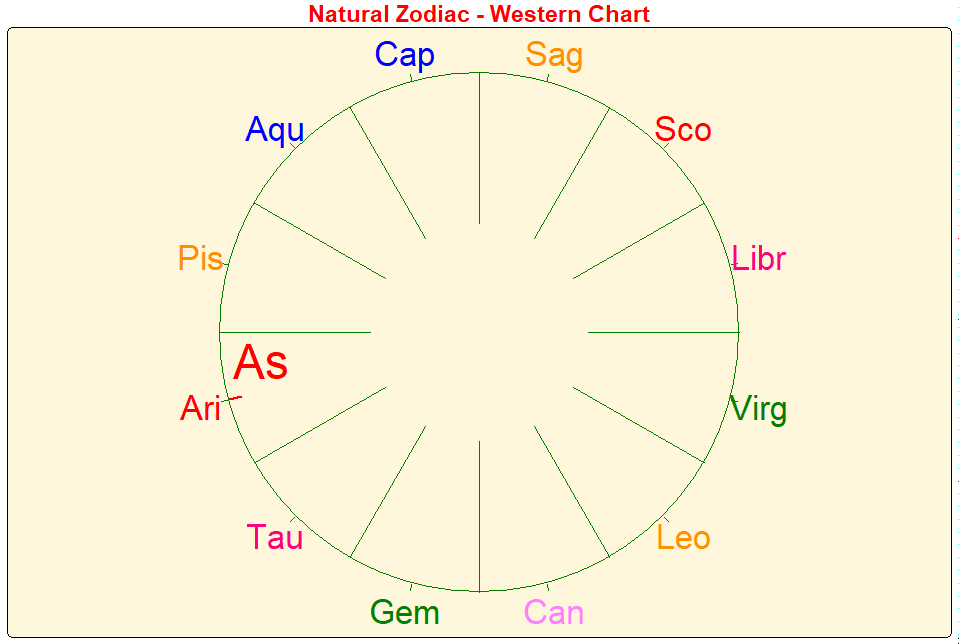
Let's use our native chart. First we'll write down the constants i.e., the degrees of each planets during the time of birth:
Ascendant - Scorpio 23°31′56″ = 233.53°
Sun - Gemini 29°56′22″ = 89.94°
Moon - Sagittarius 16°57′28″ = 256.96°
Mars - Gemini 25°01′13″ = 85.02°
Mercury - Gemini 16°27′45″ = 76.46°
Jupiter - Taurus 10°52′40″ = 40.88°
Saturn - Taurus 04°13′54″ = 34.23°
Venus - Cancer 08°16′23″ = 98.27°
Rahu - Cancer 00°49′12″ = 90.82°
Ketu - Capricorn 00°49′12″ = 270.82°
Uranus - Capricorn 26°10′ = 296.17°
Neptune - Capricorn 11°39′ = 281.65°
Pluto - Scorpio 16°38′ = 226.63°
Now, we have different options to start drawing our chart. First starting where should the Ascendant be placed, at beginning of the 1st House or in the middle of the 1st house? In Vedic Jyotish, Ascendant = beginning (cusp) of first house. We can fix Ascendant at middle position for experimental research and edge case scenarios to understand psychological influences, etc., but the standard followed is to fix Ascendant as Cusp of 1st house.
Now let's look at different systems.
In Jyotish Parashari, each rashi = 1 house, and each zodiac sign is 30°. Ascendant is placed in the cusp. It follows no actual sky angular divisons.
In Vedic Horary, each house = 30°, and base starting with 30° from Ascendant.
In Nakshatra Padas system, equal houses distribution is done based on Nakshatra Padas. 27 Nakshatras × 4 Padas / 12 Rashis = 9 Nakshatra Padas in each Rashi.
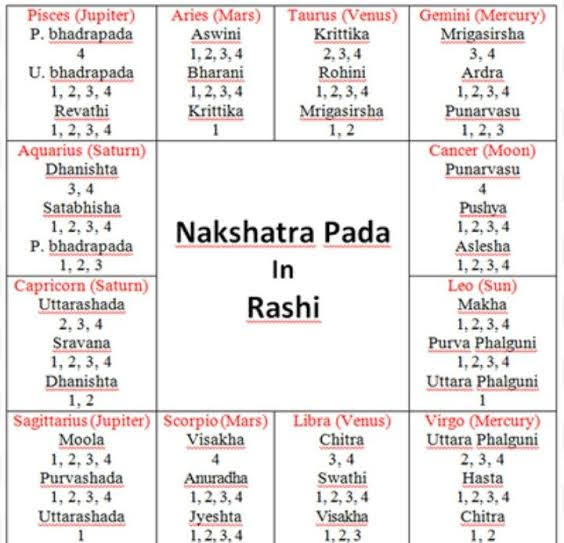
In Porphyry or Sripati system (Bhav Chalit), we take Ascendant degree as the cusp or starting of first house. This is also used in Western Jyotish. But it doesn't reflect curvature well near the poles.
In KP or Placidus syetem, we use time based quadrant divisons. It's more modern, accurate and complex mathematically, hence used for accurate time based predictions.
Apart from these, there are also few more systems, such as, Koch, Regiomontanus, Campanus, Axial Rotation, Polich/Page/Topocentric, Alcabitus, etc.
We'll start from basics:
If we consider each house = 30° and Ascendant rashi as first house rashi (how we usually do in basic Jyotish), then:
1H = Scorpio (Asc, Pluto)
2H = Sagittarius (Moon)
3H = Capricorn (Ketu, Uranus, Neptune)
4H = Aquarius
5H = Pisces
6H = Aries
7H = Taurus (Jupiter, Saturn)
8H = Gemini (Sun, Mars, Mercury)
9H = Cancer (Venus, Rahu)
10H = Leo
11H = Virgo
12H = Libra
If we consider each house = 30° and starting with Ascendant as first house cusp, then:
1H = 233.53° - 263.53° (Asc < Moon)
2H = 263.53° - 293.53° (Ketu < Neptune)
3H = 293.53° - 323.53° (Uranus)
4H = 323.53° - 353.53°
5H = 353.53° - 23.53°
6H = 23.53° - 53.53° (Saturn < Jupiter)
7H = 53.53° - 83.53° (Mercury)
8H = 83.53° - 113.53° (Mars < Sun < Rahu < Venus)
9H = 113.53° - 143.53°
10H = 143.53° - 173.53°
11H = 173.53° - 203.53°
12H = 203.53° - 233.53° (Pluto)
Coming to Bhav Chalit chart, we need to understand new terms and methods used for actual calculations based on sky positions.
First, we already know that there are two types of zodiacs systems: Tropical Zodiacs (used in Western Astrology) and Sidereal Zodiacs systems.
Troical Zodiac system starts at 0° Aries = Spring Equinox (March 21 every year). It is seasonally fixed, it never shifts. It does not account for axial precession (Earth’s axial tilt). Over centuries, stars drift away from signs due to precession. It is used in Western, modern, and psychological astrology.
Sidereal Zodiac system defines 0° Aries as aligned with actual fixed stars. It includes Ayanamsa correction to account for precession. Ayanamsa = Tropical Longitude – Sidereal Longitude. Earth’s axis wobbles over ~26,000 years (precession). As a result, the stars appear to shift slowly westward. Ayanamsa corrects this drift.
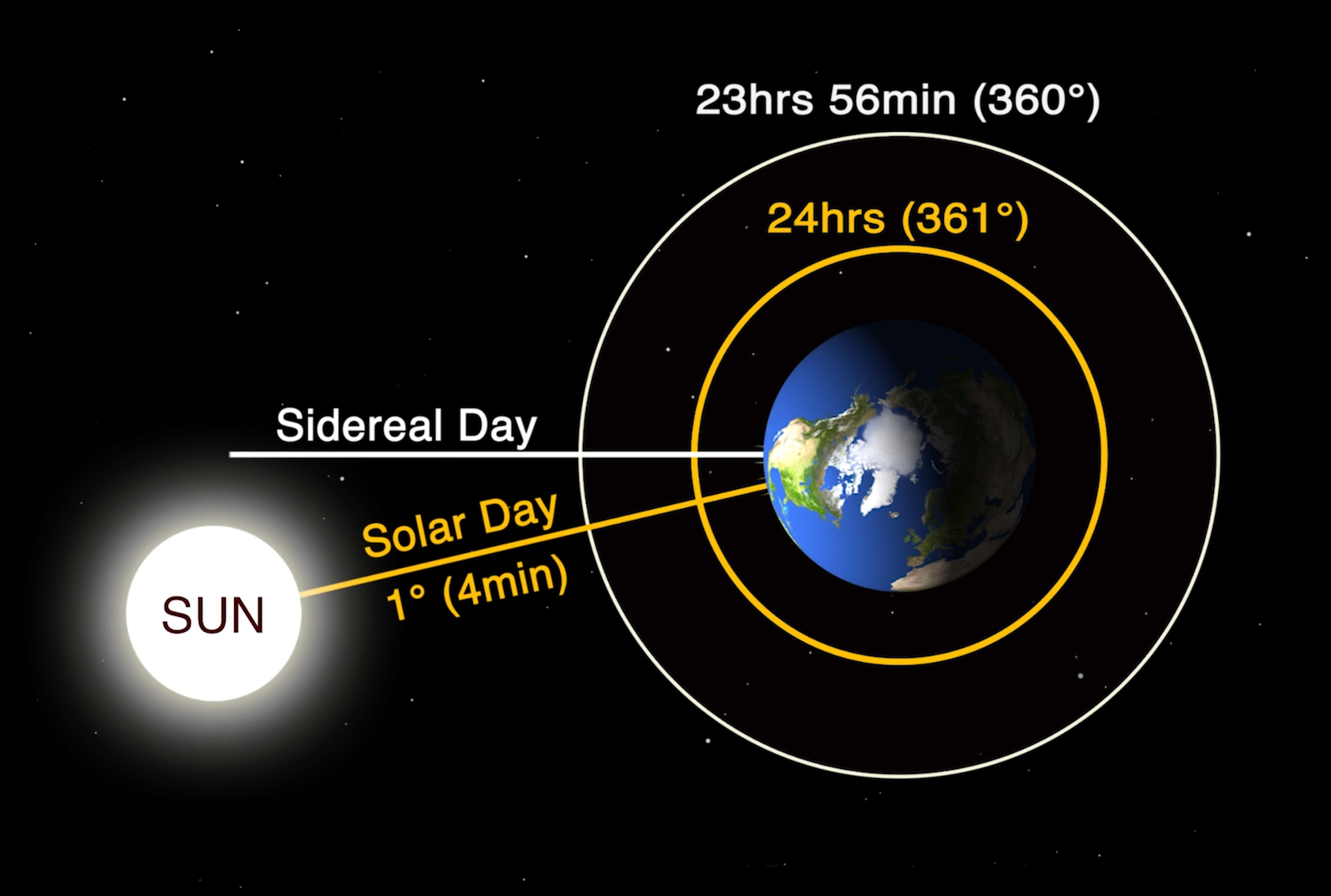
Ayanamsa Offset (2025), Used in
Lahiri (Chitrapaksha) ~23°53′, Mainstream Jyotish
Raman ~22°44′, Some schools
Fagan/Bradley ~24°06′, Western sidereal
Krishnamurti (KP) ~23°57′, KP system
We'll consider Lahiri Ayanamsa in Sidereal Zodiac system.
Now we introduce Ascendant (ASC) as 1H cusp, Midheaven or Medium Coeli (MC) as 10H cusp, Imum Coeli (IC) as 4H cusp and Descendant (DC) as 7H cusp.
MC, IC, and DSC are considered the cusps of the 10th, 4th, and 7th houses, respectively, because they represent real, observable points in the sky that divide the celestial sphere based on Earth’s rotation, horizon, and meridian. These points are not arbitrary, they are grounded in astronomy and define the skeleton of the house system in any quadrant-based astrology.
Quadrant House Systems are Based on Earth's Rotation.
The ecliptic (Sun’s apparent path) moves through the sky as the Earth rotates, giving us:
ASC (1st house cusp): Ecliptic point rising in the east at moment of birth.
Already known in our case:
ASC = 23°31′56″ Scorpio = 233.53°
MC (10th house cusp): Point directly overhead on the ecliptic (local meridian). In Sidereal Zodiacs Lahiri Ayanamsa, the MC is in Virgo 1° 09' 33" = 151°, where as, in Tropical Zodiacs, the MC is in Virgo 25° 01' = 175° (calculated using online software). Here, we'll use Sidereal system.
IC (4th house cusp): Point directly beneath you (nadir). IC = (MC + 180°) mod 360° = 331° = 1° Pisces.
DSC (7th house cusp): Point setting in the west. DSC = (ASC + 180°) mod 360° = 53.53° = 23° 31' Taurus.
These 4 angles divide the 360° sky into 4 quadrants, each 90°, forming the base for:
1H–3H (from IC to ASC)
4H–6H (ASC to MC)
7H–9H (MC to DSC)
10H–12H (DSC to IC)
Each quadrant is then subdivided into 3 houses, so 3×4 = 12 houses.
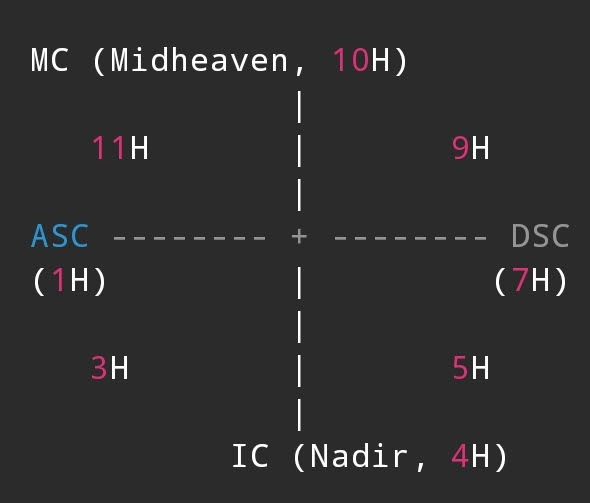
So, our Point Value Zodiacs are
ASC = 233.53° = 23°31′ Scorpio = 1H
DSC = 53.53° = 23°31′ Taurus = 7H
MC = 151.00° = 1° Virgo = 10H
IC = 331.00° = 1° Pisces = 4H
Now, let's calculate arc of each quadrant, and then houses in each arc:
First Arc : ASC - IC = (233.53 + (360 - 331)) = 262.53° / 3 = 87.51° / 3 = 29.17° per house (1H cusp = 233.53°, 2H cusp = 262.7°, 3H cusp = 291.87°)
Second Arc : IC - DSC = (331.00 - 53.53) = 277.47° / 3 = 92.49° / 3 = 30.83° per house (4H cusp = 331°, 5H cusp = 1.83°, 6H cusp = 32.66°)
Third Arc : DSC - MC = (360 - 151) + 53.53 = 262.53°/ 3 = 87.51° / 3 = 29.17° per house (7H cusp = 53.53°, 8H cusp = 82.7°, 9H cusp = 111.87°)
Fourth Arc : MC - ASC = (360 - 233.53) + 151 = 277.47° / 3 = 92.49° / 3 = 30.83° per house (10H cusp = 151°, 11H cusp = 181.83°, 12H cusp = 212.66°)
Therefore, the houses in bhav chalit chart are:
1H = 233.53° - 262.7° (Asc < Moon)
2H = 262.7° - 291.87° (Ketu < Neptune)
3H = 291.87° - 331° (Uranus)
4H = 331° - 1.83°
5H = 1.83° - 32.66°
6H = 32.66° - 53.53° (Saturn < Jupiter)
7H = 53.53° - 82.7° (Mercury)
8H = 82.7° - 111.87° (Mars < Sun < Rahu < Venus)
9H = 111.87° - 151°
10H = 151° - 181.83°
11H = 181.83° - 212.66°
12H = 212.66° - 233.53° (Pluto)
P.S. 1: each house can now have more than one rashi/zodiac sign based on degrees. Hence, this tells us that the actual life experiences effect of the planets in which houses may vary from it's karmic effects in different houses. Eg: Mercury has shifted from 8H to 7H means that even if Mercury's karmic effect will be felt in 8H, it's actual results activation will be seen in 7H.
P.S. 2: here we have used Sidereal Zodiacs system, hence MC position and subsequently all houses positions will change if we consider Tropical Zodiacs system. But, this is just to give an idea about how the predictions can be brought from qualitative to quantitative, although there can be different variations in charts based on how we want to calculate the houses.
So, Astrological predictions are built on four primary pillars: planets, nakshatras, dashas, and transits. Together, these form a karmic blueprint for the native, as encoded in the birth chart. The Birth Chart (Janma Kundali) is a snapshot of the sky at the exact moment of birth. It captures the karmic imprint your soul carries into this life.
There are:
12 fixed houses (Bhavas), representing life domains.
9 moving planets (Grahas), placed in those houses at the time of birth.
27 nakshatras (lunar constellations), which remain fixed in the sky, each with deep symbolic meaning.
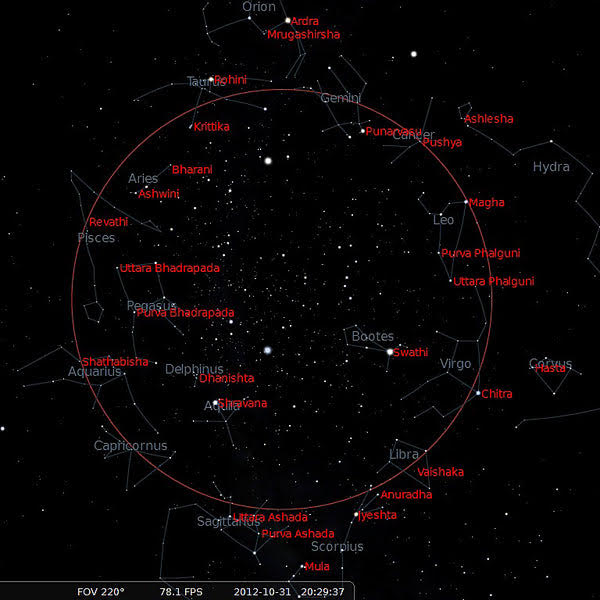
For a birth-chart:
Planets - Represent the events, themes, and forces promised in life.
Nakshatras - Explain the underlying karmic intent and psychological flavor behind those events.
Dashas - Indicate when specific karmic promises will unfold through time-bound planetary rulerships.
Transits - Show how and under what conditions these promises get activated dynamically in real-time.
Lagna - Defines who you are — your core identity, the lens through which your entire chart operates.
Vastu - Guides the geographical or spatial manifestation of karmic energies — your home, land, environment.
Basically, planets answer "what", nakshatras answer "why", dashas answer "when", transits answer "how", Vastu answers "where", and lagna answers "who" you are.
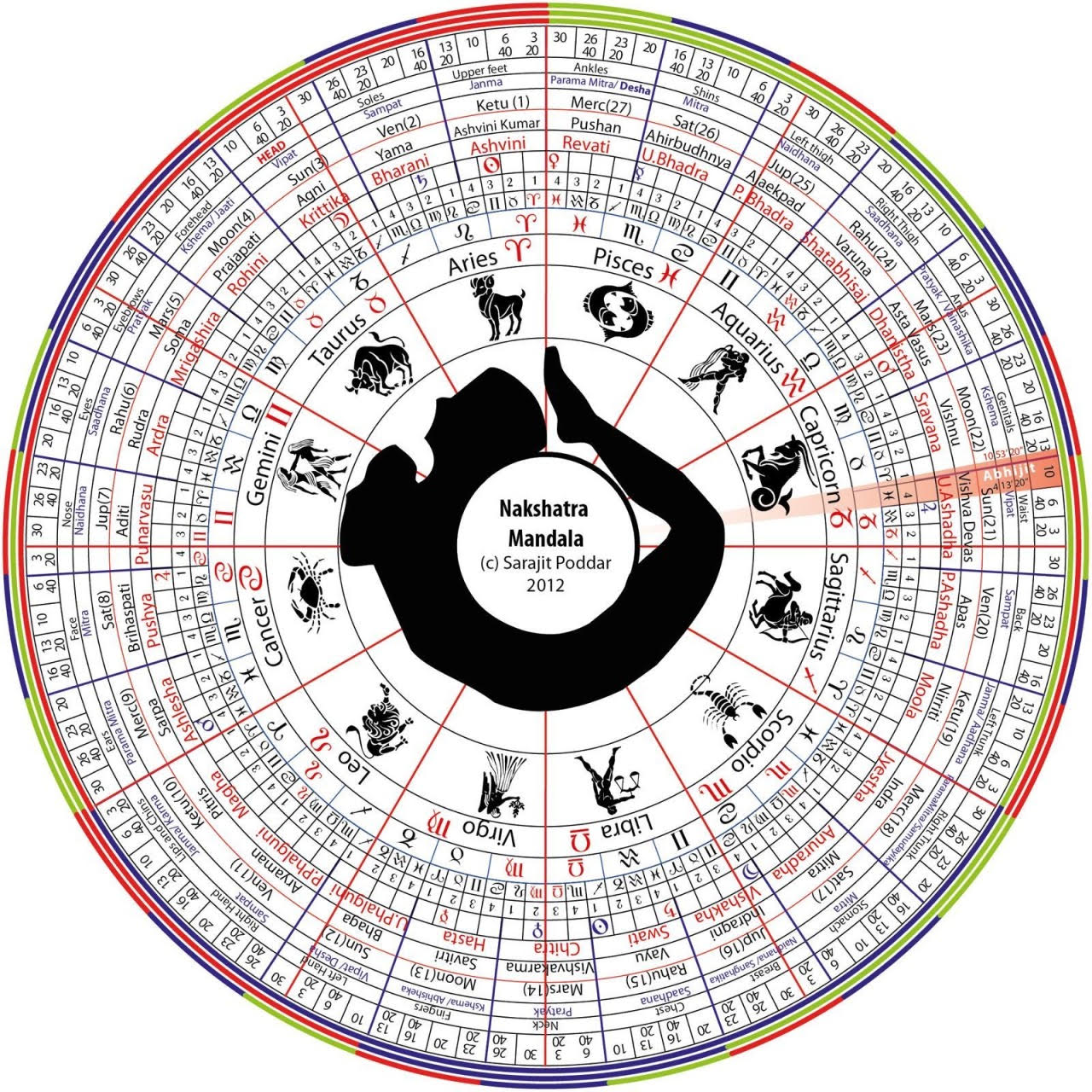
Based on astrology, at the time of birth, the soul incarnates based on the karmic energies accumulated from previous lifetimes. This entry point locks the chart, recording the house placements of the 9 planets, their positions within the nakshatras, and the starting point of the planetary dasha sequence. Though the chart is static, planets are always in motion post-birth. This is called transit (Gochar) and it determines how and when natal promises are activated or tested based on planetary positions in the sky.
Therefore, the birth chart reveals potential (the “promise”) via the placement of planets in nakshatras and houses. The dashas reveal when these promises unfold, by giving rulership to different planets over different periods of your life. The transits determine how those latent promises get triggered or manifest through external circumstances. The Lagna sets the perspective- the "who" that experiences these karmas. Vastu offers insight into where karmic flows will materialize most or least harmoniously.
In order to predict events using dashas and transits (which are based on planetary movements- so immutable), we need to know on which chart should we apply these to. We have seen that there are some variations in planetary positions in houses based on different systems (vedic, kp, western), but they're not purely random, they're very close to each other, due to different coordinate systems preferences. So lets try to compare all planetary positions, their aspects, and on which house positions they affect, in terms of energy. After we understand the energy spectrum of a natal chart, we can go into tme predictions calculations.
In Western system (tropical, unequal houses, unequal signs), our natal chart has -
Ascendant (1H) in Sagittarius (9)
Moon in 1H in Capricorn (10)
Sun in 8H in Cancer (4)
Venus in 8H in Leo (5)
Mars in 8H in Cancer (4)
Merc in 7H in Cancer (4)
Jupiter in 6H in Gemini (3)
Saturn in 6H in Taurus (2)
Uranus in 2H in Aquarius (11)
Neptune in 2H in Aquarius (11)
Pluto in 12H in Sagittarius (9)
North Node (Rahu) in 8H in Cancer (4)
South Node (Ketu) in 2H in Capricorn (10)
Lilith in 1H in Capricorn (10)
Chiron in 12H in Sagittarius (9)
(You may notice that in western system different houses can have different signs, specifically adjacent)
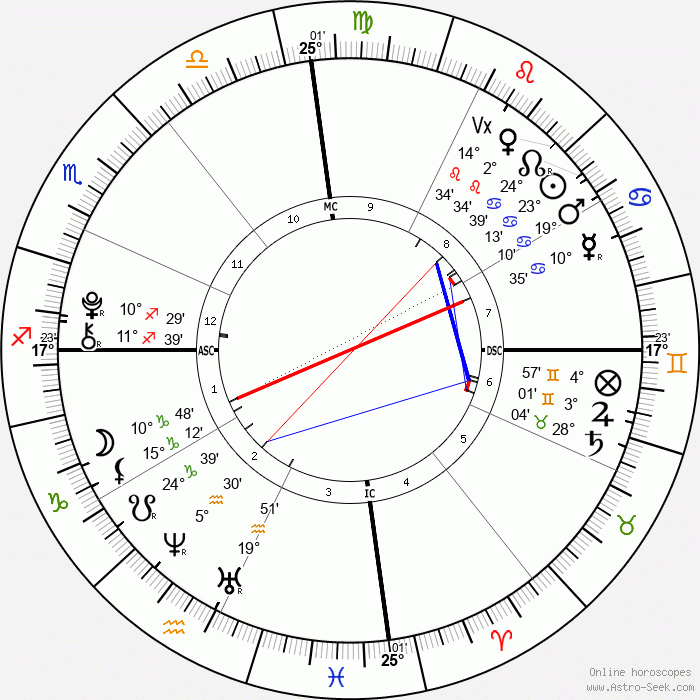
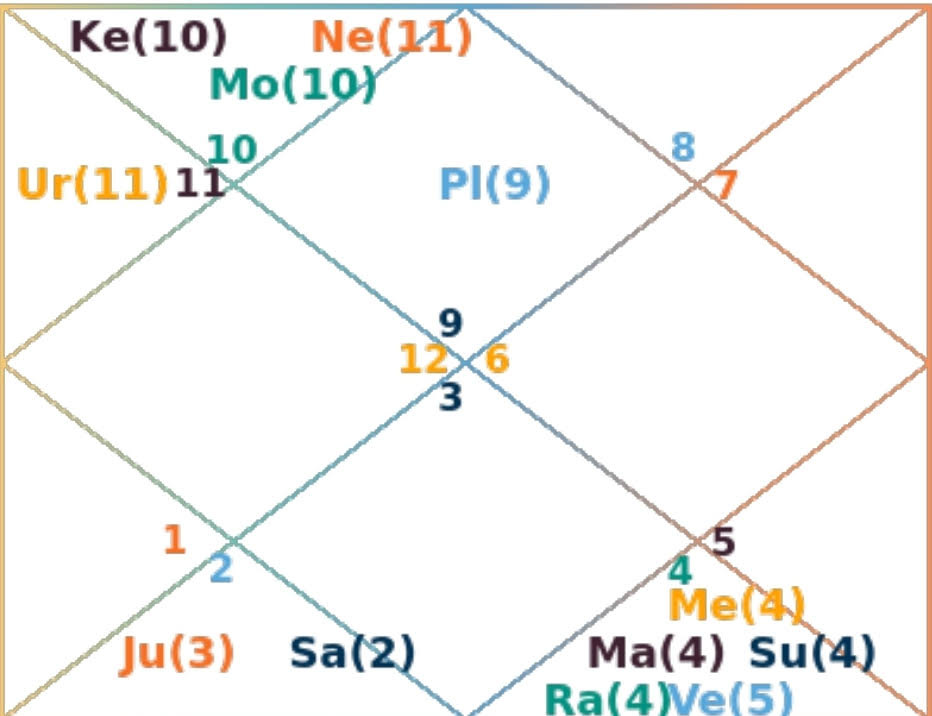
In KP system (sidereal, unequal houses, unequal signs), our natal chart has -
Moon in Ascendant (1H) in Scorpio (8)
Ketu in 2H in Sagittarius (9)
Uranus in 2H in Sagittarius (9)
Neptune in 2H in Sagittarius (9)
Saturn in 6H in Aries (1)
Jupiter in 6H in Aries (1)
Mercury in 7H in Taurus (2)
Sun in 8H in Gemini (3)
Mars in 8H in Gemini (3)
Venus in 8H in Gemini (3)
Rahu in 8H in Gemini (3)
Pluto in 12H in Libra (7)

In Bhav Chalit system (sidereal, equal houses, unequal signs), our natal chart has -
Ascendant (1H) in Scorpio (8)
Moon in 2H in Sagittarius (9)
Ketu in 2H in Capricorn (10)
Jupiter in 6H in Taurus (2)
Saturn in 6H in Taurus (2)
Sun in 8H in Gemini (3)
Mars in 8H in Gemini (3)
Mercury in 8H in Gemini (3)
Venus in 8H in Cancer (4)
Rahu in 8H in Cancer (4)
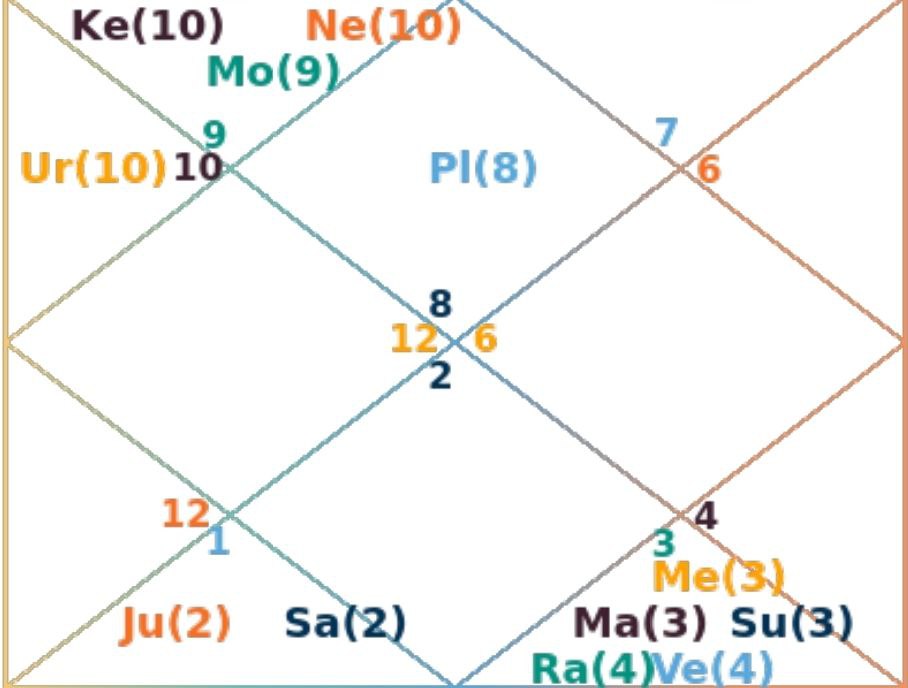
In Vedic system (sidereal, equal houses, whole signs), our natal chart has -
Ascendant (1H) in Scorpio (8)
Moon in 2H in Sagittarius (9)
Ketu in 3H in Capricorn (10)
Jupiter in 7H in Taurus (2)
Saturn in 7H in Taurus (2)
Sun in 8H in Gemini (3)
Mars in 8H in Gemini (3)
Mercury in 8H in Gemini (3)
Venus in 9H in Cancer (4)
Rahu in 9H in Cancer (4)

If we distribute the houses, planets and rashis as energies, then we can make general observations based on all systems:
The Moon (emotions) have relationship with personality or life in general (1H) and it is linked to Sagittarius (purpose/philosophy), Scorpio (intense/transformation) and Capricorn (structure). So personality is stoic and cool from outside but emotionally intense and turbulent from inside.
The Jupiter (expansion/luck) and Saturn (service/discipline) are linked to Taurus (family/money), Gemini (tech/communication) and Aries (bold/independent), and related to service (6H) and partnerships or marriage (7H). So career and fortune is related to service, long term stability, independent work, tech and partnership.
Sun (soul/ego), Mars (energy), Mercury (intellect), Venus (pleasure), Rahu (obsession) is related to 8H themes (transformation/mysteries/karmic/hidden/intense) and 7H (Partnerships or Marriage, especially Mercury) and 9H (Purpose or Destiny, especially Venus), and has qualities of Gemini (intelligent/mental energy/dual sign) and Cancer (deeply emotional). So the major themes in life will be around power and love (deep), and unexpected events in marriage, career and partnerships, that completely transforms psychologically, physically and personality wise, again and again throughout the life.
The 8th house (8H) theme is heavy in all 3 natal charts (Western, KP, Vedic), and 8H is house of mysteries, deep research, sudden events, hidden finance (crypto, stock market, volatile wealth), shared resources (inheritance, insurance), death (literal or psychological), mystics (spirituality, occult), intensity, sex, etc., so it's hard to predict about the native's life events because anything can happen in 8H, but we can confirm that 8H themes will heavily affect the native's life. So, the "What" question remains unclear, let's just confirm it as "8H heavy", but we can certainly look into "When" anything might happen and how it will affect the native's life based on which Planetary house positions and Transits in which Rashis or Nakshatras, and in which Dashas.
Here’s what each of the 12 houses represents in Western system (similar to vedic and KP systems):
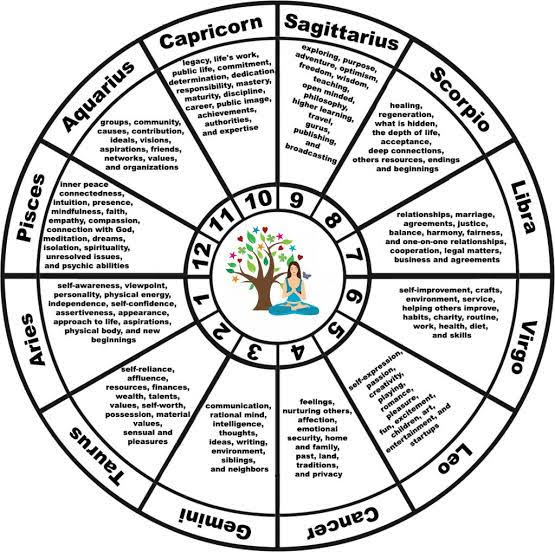
1. House of self
The first house is often called the house of self. It is ruled by Aries and the planet Mars, and the placements in this house can give you a window into understanding more about your outward appearance, traits, characteristics, outlook, and sense of expression. In other words, this house tells you a lot about your personality—not only the “visible aspects of your character” that make you who you are right now, but also clues to the ways your personality may evolve in the future.
2. House of value and possessions
The second house, ruled by Taurus and the planet Venus, relates to your possessions, but it’s not only focused on tangible things. Placements in this house can help you gain insight into all that belongs to you, be it your money, investments, and material environment or your inner self, needs, wants, and abilities. Value in the name of this house refers to both your finances and your internal values.
3. House of communication
The third house is called the House of Communication. Some astrologers may also refer to it as the House of Sharing. Ruled by Gemini and the planet Mercury, this house governs how you communicate and connect with others. Communication isn’t just talking or texting. It means “something imparted, interchanged, or transmitted.” For that reason, astrologers look to this house for more on someone’s written and verbal communication styles and how they might interact with themselves, their environment, and those they know well.
4. House of family and home
Ruled by Cancer and the Moon, the fourth house focuses on family, history, traditions, and ancestry. In other words, it tells us about home, or “the place in which one’s domestic affairs are centered.” This house sits at the “bottom” of the astrological wheel and is thought of by many astrologers as being foundational to a person’s self, life, and beliefs. You might look to this house for insight on how you relate to your parents or your own children and how you nurture yourself and others.
5. House of pleasure
Leos are known for being charismatic, outgoing, and dynamic, so it makes sense that the fifth house, ruled by the Sun and Leo, governs all things related to expression and creativity. Pleasure in this house’s name refers to “enjoyment or satisfaction derived from what is to one’s liking.” The fifth house tells you about things that create joy and fulfillment in your life, like art and culture, romance, games and hobbies, and even your family and children.
6. House of health
Pragmatic Virgo joins Mercury in ruling the sixth house. This house deals with health, or “the general condition of the body and mind,” on all levels. That means it can give you insight into not just your physical health and relationship with your body, but also your mental and emotional self, such as how you react to adversity and areas where you may experience personal growth. You may also look to this house to learn about your ideal career and ways to be of service to others.
7. House of partnerships
In the seventh through 12th houses, your birth chart shifts away from personal insights and begins to focus on the interpersonal, or how you interact with others. For that reason, the seventh house, ruled by Venus and Libra, is all about partnership. This doesn’t only mean romantic partnership. The astrological placements in this house are believed to govern your interactions in business relationships, contracts, and negotiations as well. Other names for this house are the House of Relationships and the House of Balance.
8. House of transformation
Passionate and mysterious Scorpio leads the eighth house with Mars and Pluto. This house also focuses on relationships, but it’s less on how people behave in relationships and more about how those relationships transform them. This includes insight into one’s birth, death, sexuality, and karma. This house also governs joint property that has transformational abilities, like inheritances, debt and even joint finances.
9. House of purpose
Ruled by Jupiter and Sagittarius, the House of Purpose is also sometimes called the House of Philosophy. That’s because it centers on the higher mind and philosophy, or “the rational investigation of the truths and principles of being, knowledge, or conducts.” This house focuses on our religion, morals, ethics, and dreams. Insights gained by studying the placements in this house may also relate to travel, culture, and even our ancestors, as these are all things with potential to contribute to our personal growth and search for meaning.
10. House of social status
Capricorn is among the hardest working signs in the zodiac, and that’s why the 10th house, ruled by Saturn and Capricorn, is where you look to learn more about your career, achievements, and your social status, or how you “relate to, [are] devoted to, or characterized by friendly companionship or relations.” The cusp, or border, of the 10th house is known as the midheaven, and it can tell astrologers more about your career path. Placements in this house can also help you determine professional goals and ambitions, as well as how successful you may be. Some astrologers think of this as the “fame” house, as celebrities often have several placements in this house.
11. House of friendships
The 11th house, ruled by Saturn, Uranus, and Aquarius, deals with the ways in which our friendships and how we find harmony with others. Astrological placements in this house can tell you more about the clubs, social groups, and organizations to which you are drawn. This house is all about collective beliefs and actions, and how those contribute to self-actualization, or “the achievement of one’s full potential through creativity, independence, spontaneity, and a grasp of the real world.”
12. House of subconscious
The 12th house, also sometimes called the House of Unconscious, is ruled by Pisces and the planets Jupiter and Neptune. Pisces is associated with emotions and creativity; therefore, you can look to this house to learn more about your imagination, feelings, and subconscious mind, which “exists or operates beneath or beyond consciousness.” Placements in the 12th house indicate private strengths and weaknesses and how people confront and learn from their past actions. Some astrologers also believe you can look here to find clues about old age and the afterlife.
For our natal chart we already know the positions and conjunctions of planets in different houses, in Vedic, KP and Western system. Now let's look at the planets' aspects into different houses, and find deeper insights about the promises in the native's life. We already know that the native has strong 8H effects in life. But in 8th House also it can mean Spirituality/Occult, Shared resources/Investments/Wealth, Hidden Power/Leadership, or Deep Tech/Research. So which one is promised for the native?
We can also look at the Aspects of the planets in different houses and rashis/signs, to get more insights into the "What".
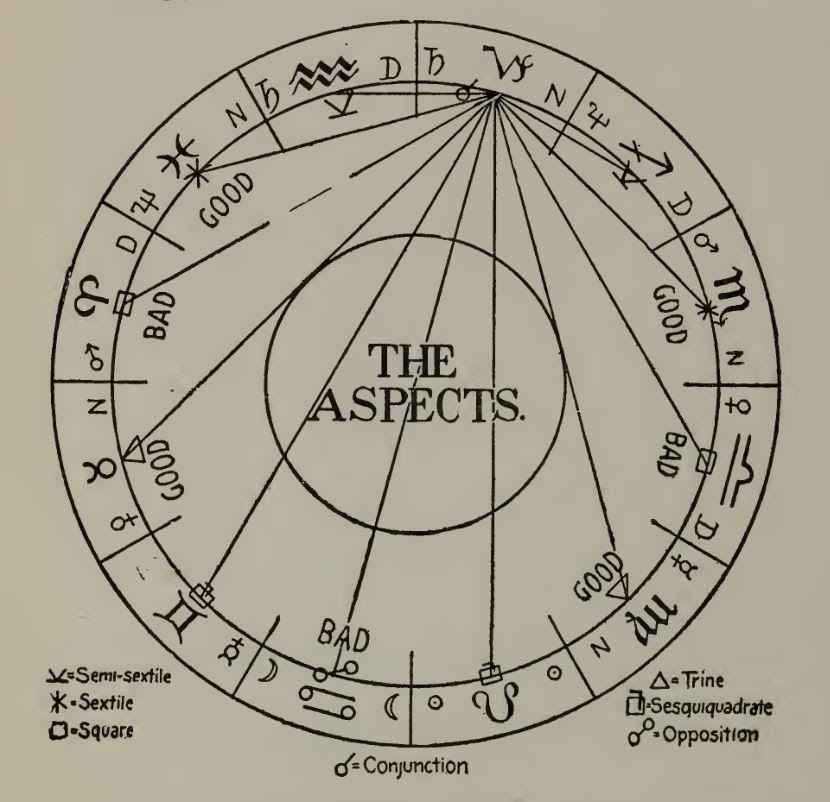
Let's look at the Western Chart first:
Planets describe a certain process of what is happening - eg. Mars fights, Saturn limits, Jupiter expands, etc.
Sign in which the planet is located determines how the planet is manifesting itself, for example Mars may manifest itself in a way Aries would behave (vigorously and irritably) or in the manner of Taurus (more slowly, gradually and consistently).
Houses show special areas of everyday life, in which all this takes place. Location in a house shows whether, for example Mars manifests in relationships (7th house), employment (6th house), family (4th house) or elsewhere.
Hint:
Planets show us what is happening;
Signs show us how it is happening;
Houses show us where it is happening.
Ascendant (1H) - Physical Personality.
10H or Midheaven or Medium Coeli (MC) - Career, Prestige, and Reputation.
Sun - Self, Individuality, Personality
Moon - Emotions, Instincts, Roots, Mother
Mercury - Thinking, Communication, Intellect, Learning
Venus - Sensuality, Love, Harmony, Pleasure
Mars - Activity, Energy, Courage, Assertiveness
Jupiter - Happiness, Optimism, Expansion
Saturn - Restriction, Order, Maturity, Time
Uranus - Originality, Freedom, Revolution
Neptune - Fantasy, Illusion, Spirituality, Imagination
Pluto - Transformation, Regeneration, Power
Lunar Nodes - North Node (Rahu) and South Node (Ketu) - Soul's Journey of Growth and Integration
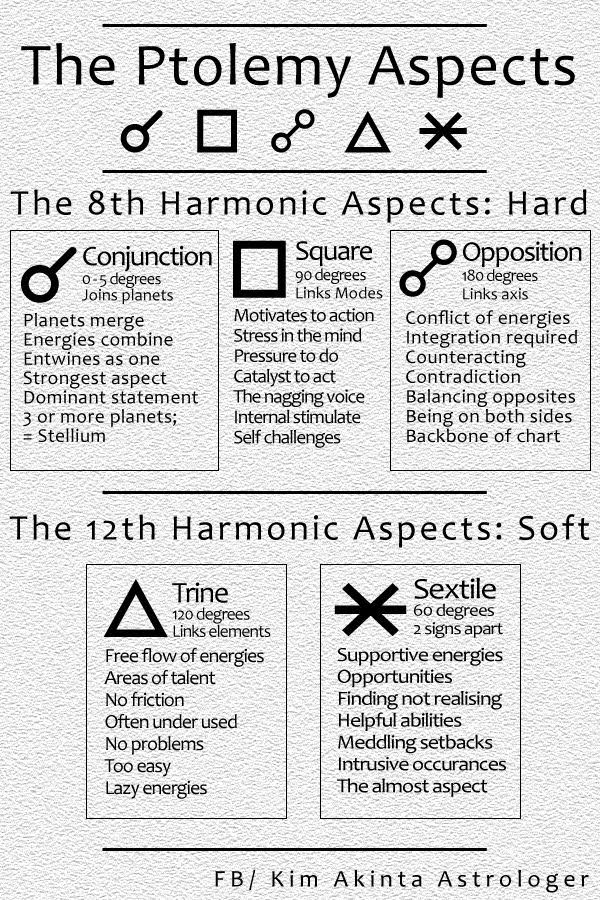
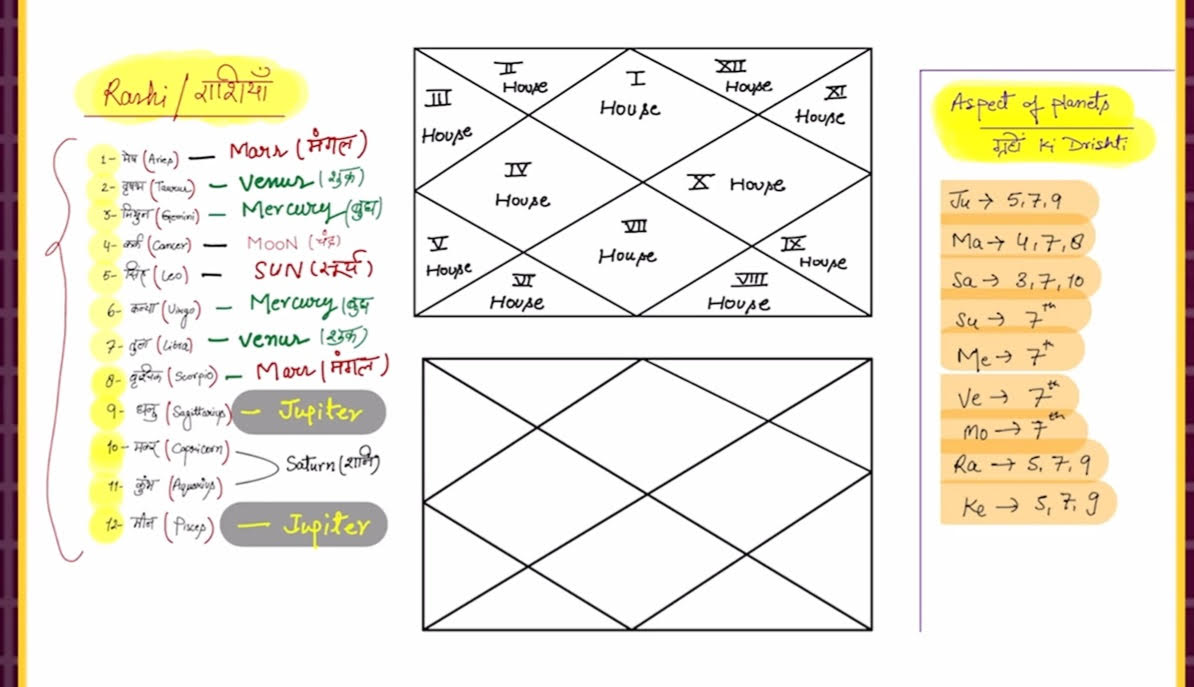
For natal Vedic chart:
Sun is lord of 10th house and situated in 8th house. Sun aspects 2nd house and aspected by Moon.
Moon is lord of 9th house and situated in
2nd house. Moon aspects 8th house and aspected by Sun, Mars, Mercury.
Mars is lord of 6th, 1st house and situated in 8th house. Mars aspects 11th, 2nd, 3rd house and aspected by Moon.
Mercury is lord of 8th, 11th house and
situated in 8th house. Mercury aspects 2nd house and aspected by Moon.
Jupiter is lord of 2nd, 5th house and situated
in 7th house. Jupiter aspects 11th, 1st, 3rd house and aspected by Ketu.
Venus is lord of 7th, 12th house and situated
in 9th house. Venus aspects 3rd house and aspected by Saturn, Ketu.
Saturn is lord of 3rd, 4th house and situated
in 7th house. Saturn aspects 9th, 1st, 4th house and aspected by Ketu.
Rahu is lord of house and situated in 9th house. Rahu aspects 1st, 3rd, 5th house and aspected by Saturn, Ketu.
Ketu is lord of house and situated in 3rd house. Ketu aspects 7th, 9th, 11th house and aspected by Mars, Jupiter, Venus, Rahu.
Millennials were so focused on systems building as a collective after major crisis like wars etc, that they never looked beyond the constructed systems of the world. But gen-z being born into a world fully saturated, they're forced to get out of the systems loop and look inside themselves. Hence, they're a lot into astrology.
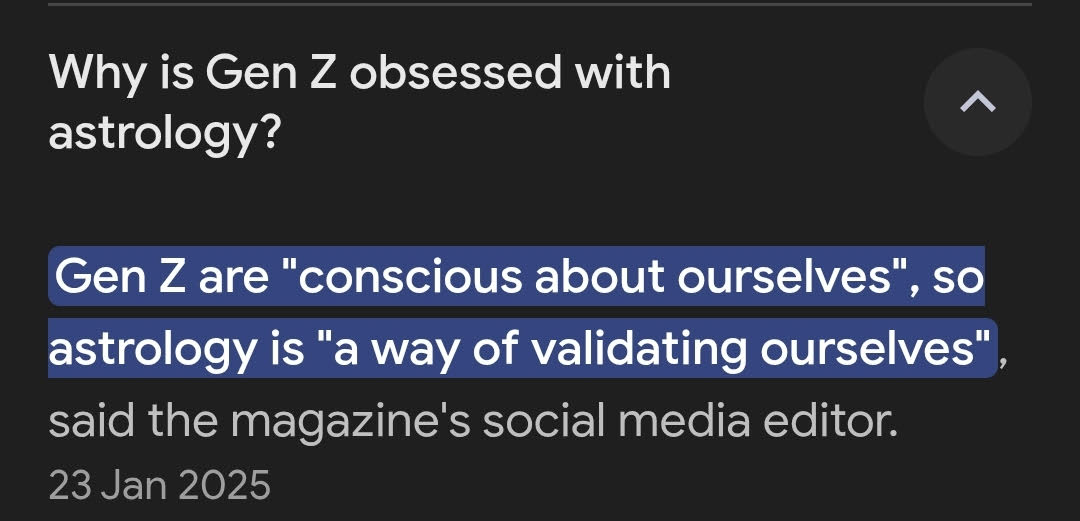
The ancient sages or rishis realised the inception of the universe due to 3 reasons - time, space and causality, simultaneously. So far in astrology (pseudoscientific study of the universe) we've explored space (houses) and causality (planets and nakshatras). Now let's dive into time (dashas and transits).
Dashas mean periods (major periods - Mahadasha, sub periods - Antardashas, sub-sub periods - Pratyantardasgas, etc.) of planets that influence different aspects of a person's life. Dashas divide a person's lifespan into periods ruled by different planets. Each planet is believed to have a specific duration, and during that planet's dasha, its influence is more prominent in a person's life. These periods can affect various areas, such as, career, health, relationships, finances, etc.
There are different kinds of Dashas - Vimsottari, Astottari, Shodsottari, Dwadasottari, Panchottari, Satabdika, Chaturshitisama, Dwisaptatisama, Shastihayani, Shatvimsasama, Kalachakra, Chara, Sthira, Kendra, Karaka, Brahmagraha, Mandook, Yogardha, Trikona, Shoola, Drig, Rasi, Panchswara, Yogini, Naisargik, Pinda, Ashtavarga, Sandhya, Panchaka, Tara, etc. In kaliyuga, the natural lifespan of human being is generally taken as 120 years. Therefore, Vimshottari Dasha is considered to be most appropriate and the best of all Dashas.
In Vimshottari dasha system,
There are 9 planetary dashas, in a sequence - Ketu → Venus → Sun → Moon → Mars → Rahu → Jupiter → Saturn → Mercury.
The starting Mahadasha is based on the Nakshatra the Moon occupies at birth.
For each Mahadasha (main period) there is→ Antardasha (sub-period) → Pratyantardasha (sub-sub) → up to 5 levels.
Events in life unfold based on the interplay of the Mahadasha–Antardasha lords.
The effect of each period is judged by house ownership, placement, aspects, nakshatra, and dignity in the chart.
It can be calculated using any astrology software (installed or online).
So, dashas are fixed and unique to a person, but the planets are continuously moving in the sky. So the transits of the planets are also important to predict timing of events.
Sarvatobhadra Chakra is a diagram or chart used to analyze the effects of planetary transits on different aspects of life.
It incorporates elements like the 28 nakshatras (27 lunar mansions + Abhijit nakshatra), Sanskrit vowels and consonants, 12 zodiac signs, tithis (lunar days), and 7 weekdays.
How it's used:
1. Finding auspicious timings:
The SBC is used to identify favorable periods for starting new ventures, making important decisions, or conducting ceremonies.
2. Analyzing planetary influences:
It helps in understanding how transiting planets affect specific points in a birth chart or event chart.
3. Predicting events:
SBC can be used to analyze potential outcomes of various situations, including national events, market trends, and individual experiences.
4. Identifying sensitive points:
It helps in pinpointing critical points in a chart, such as the birth nakshatra, and assessing how transits impact them.
5. Vedha analysis:
SBC incorporates the concept of Vedha, which refers to the aspects (influence) of planets on other elements within the chart, helping to refine predictions.
Key features:
1. Ancient method:
The SBC is considered one of the oldest methods of astrological prediction, with its origins tracing back to ancient Vedic texts.
2. Versatility:
It can be applied to various areas of life, including personal charts, national astrology, and even financial markets.
3. Microscopic study:
The SBC allows for a detailed analysis of the native's chart, considering minute details and their impact.
4. Focus on Nakshatras:
Nakshatras are central to the SBC's predictive power, and it uses them to draw detailed predictions.
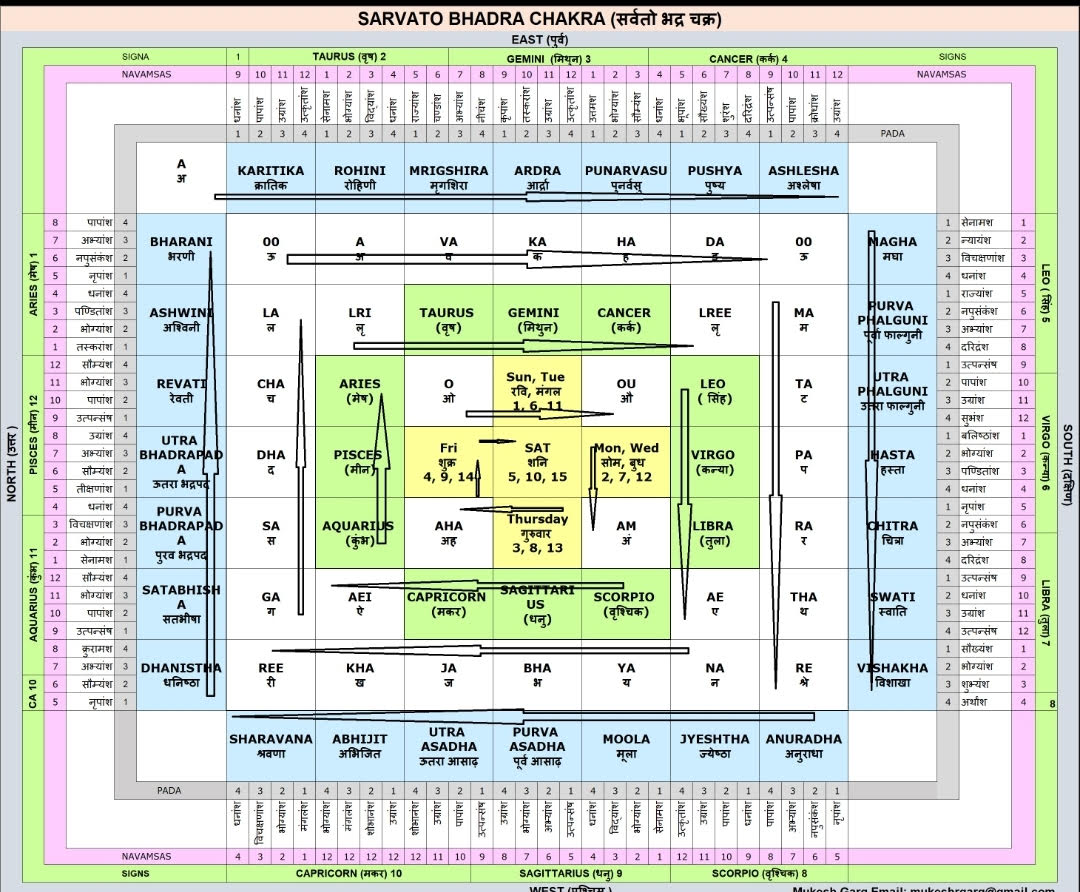
We basically create a grid of 9×9, then fill the corner to corner grids with vowels, then fill the rest of the outer 7+7+7+7 boxes in blue with 28 nakshatras starting with Kritika in the east as it's lord is Sun, then fill the next outer boxes with consonants, then fill the next 3+3+3+3 outer boxes in green with 12 rashis starting with Taurus as it has Kritika nakshatra, then fill the inner most cross grid in yellow with tithis and weekdays. This much is fixed for SBC. After this we position the planets based on their transits positions in nakshatras, and we observe their Vedha (similar to aspect, but on the elements of this chart) to make predictions based on it. There are different rules and considerations within that.
SBC is based on current planetary motions or transits of the planets so it can be used for horary (KP/vedic) or prasna (question) astrology or astrology predictions without birth chart only using the popular name of the native (as this kind of astrology uses the relationship of nakshatras with sounds). It also considers retrograde motions of planets (other planets are revolving around the Sun too, so from Earth’s point of view, when a planet is farther from the Sun, it's motion looks opposite relative to Earth's motion around the Sun. Hence, the planet is in Retrograde). SBC is a vast topic of research within astrology itself. Also, SBC can be used for stock market trading, politics, wars, etc., for timing events. Hence it is very popular for practical usecases.
One small example. If we want to look at price value of gold based on planetary effects, then we use the sounds "Ga" + "O" and relate it with the respective nakshatras of those sounds. And then check whether the current planetary transits have any Vedhas or effects on those nakshatras during that time, etc., kind analysis to predict bearish or bullish trends.
Ashtakavarga is used to determine the quantitative measure of planetary strength and house potential. It is used for transit analysis, dasha evaluation, predictive strength of houses/planets. Scoring Range lies between 0–8 per planet per house in Bhinn Ashtakavarga (BAV), and 0–56 per house in Samudaya Ashtakavarga (SAV). It uses Rashi Chart or D1 chart (whole sign system).
Each planet except Rahu and Ketu contributes points (bindus) to other 12 houses (signs) from its position, based on certain rules.
There are 8 contributors ("Ashta" = Eight):
1. Sun,
2. Moon,
3. Mars,
4. Mercury,
5. Jupiter,
6. Venus,
7. Saturn,
8. Ascendant (Lagna)
We must know each planet's zodiac sign.
Each planet has a unique set of rules about how it gives bindus (points) to other signs from its position.
1. Sun - 1st, 2nd, 4th, 7th, 8th, 9th, 10th, 11th = 1 each
2. Moon - 3rd, 6th, 10th, 11th = 1 each
3. Mars - 3rd, 6th, 10th, 11th = 1 each
4. Mercury - 2nd, 4th, 6th, 8th, 10th, 11th = 1 each
5. Jupiter - 5th, 6th, 9th, 10th, 11th, 12th = 1 each
6. Venus - 1st, 2nd, 3rd, 4th, 5th, 8th, 9th, 11th = 1 each
7. Saturn - 3rd, 6th, 10th, 11th = 1 each
8. Ascendant - 1st, 2nd, 3rd, 4th, 5th, 6th, 7th = 1 each
Then we create BAV table for each planets how much points they contribute to each rashis. These signify which planets are benefics for which rashis.
BAV Planet Strength:
0–2: Very weak
3–4: Average
5–6: Good
7–8: Excellent
Then we calculate the SAV table showing the total points for each rashi, signifying strength for each house they occupy in the rashi chart.
SAV House Strength:
35–56: Very strong (great for transit/dasha)
30–34: Strong
25–29: Resilience
20–24: Weak
<20: Trouble zone
Highest points signs are focus areas in life.
Now I'll share an interesting technique that's almost too esoteric to know how it works. It's almost like, the longer you gaze into an abyss, the abyss also gazes into you.
This astrology was invented by Sage Bhrigu in ~3000BCE, the same rishi who made Bhrigu Nandi Nadi (BNN) astrology. Here we use the rashi chart (D1).
Basically, it tells us that 12 houses represent a 12-year cycle:
1st House - age 1, 13, 25, 37, 49, 61, 73, 85, 97, 109
2nd House - age 2, 14, 26, 38, 50, 62, 74, 86, 98, 110
3rd House - age 3, 15, 27, 39, 51, 63, 75, 87, 99, 111
4th House - age 4, 16, 28, 40, 52, 64, 76, 88, 100, 112
5th House - age 5, 17, 29, 41, 53, 65, 77, 89, 101, 113
6th House - age 6, 18, 30, 42, 54, 66, 78, 90, 102, 114
7th House - age 7, 19, 31, 43, 55, 67, 79, 91, 103, 115
8th House - age 8, 20, 32, 44, 56, 68, 80, 92, 104, 116
9th House - age 9, 21, 33, 45, 57, 69, 81, 93, 105, 117
10th House - age 10, 22, 34, 46, 58, 70, 82, 94, 106, 118
11th House - age 11, 23, 35, 47, 59, 71, 83, 95, 107, 119
12th House - age 12, 24, 36, 48, 60, 72, 84, 96, 108, 120
And each 12-year cycle has a Karaka Planet or significator, in the order:
1- Moon: birth to age 12
From natal Moon: 1H (age 1), 2H (age 2), 3H (age 3), 4H (age 4), 5H (age 5), 6H (age 6), 7H (age 7), 8H (age 8), 9H (age 9), 10H (age 10), 11H (age 11) and 12H (age 12)
2- Mercury: age 13 to 24
From natal Mercury: 1H (age 13), 2H (age 14), 3H (age 15), 4H (age 16), 5H (age 17), 6H (age 18), 7H (age 19), 8H (age 20), 9H (age 21), 10H (age 22), 11H (age 23) and 12H (age 24)
3- Venus: age 25 to 36
From natal Venus: 1H (age 25), 2H (age 26), 3H (age 27), 4H (age 28), 5H (age 29), 6H (age 30), 7H (age 31), 8H (age 32), 9H (age 33), 10H (age 34), 11H (age 35) and 12H (age 36)
4- Sun: age 37 to 48
From natal Sun: 1H (age 37), 2H (age 38), 3H (age 39), 4H (age 40), 5H (age 41), 6H (age 42), 7H (age 43), 8H (age 44), 9H (age 45), 10H (age 46), 11H (age 47) and 12H (age 48)
5- Mars: age 49 to 60
From natal Mars: 1H (age 49), 2H (age 50), 3H (age 51), 4H (age 52), 5H (age 53), 6H (age 54), 7H (age 55), 8H (age 56), 9H (age 57), 10H (age 58), 11H (age 59) and 12H (age 60)
6- Jupiter: age 61 to 72
From natal Jupiter: 1H (age 61), 2H (age 62), 3H (age 63), 4H (age 64), 5H (age 65), 6H (age 66), 7H (age 67), 8H (age 68), 9H (age 69), 10H (age 70), 11H (age 71) and 12H (age 72)
7- Saturn: age 73 to 84
From natal Saturn: 1H (age 73), 2H (age 74), 3H (age 75), 4H (age 76), 5H (age 77), 6H (age 78), 7H (age 79), 8H (age 80), 9H (age 81), 10H (age 82), 11H (age 83) and 12H (age 84)
8- Rahu: age 85 to 96
From natal Rahu: 1H (age 85), 2H (age 86), 3H (age 87), 4H (age 88), 5H (age 89), 6H (age 90), 7H (age 91), 8H (age 92), 9H (age 93), 10H (age 94), 11H (age 95) and 12H (age 96)
9- Ketu: age 97 to 108
From natal Ketu: 1H (age 97), 2H (age 98), 3H (age 99), 4H (age 100), 5H (age 101), 6H (age 102), 7H (age 103), 8H (age 104), 9H (age 105), 10H (age 106), 11H (age 107) and 12H (age 108)
Normal rules in Vedic astrology are applied to it for life event predictions. This technique is very deterministic and symbolic.
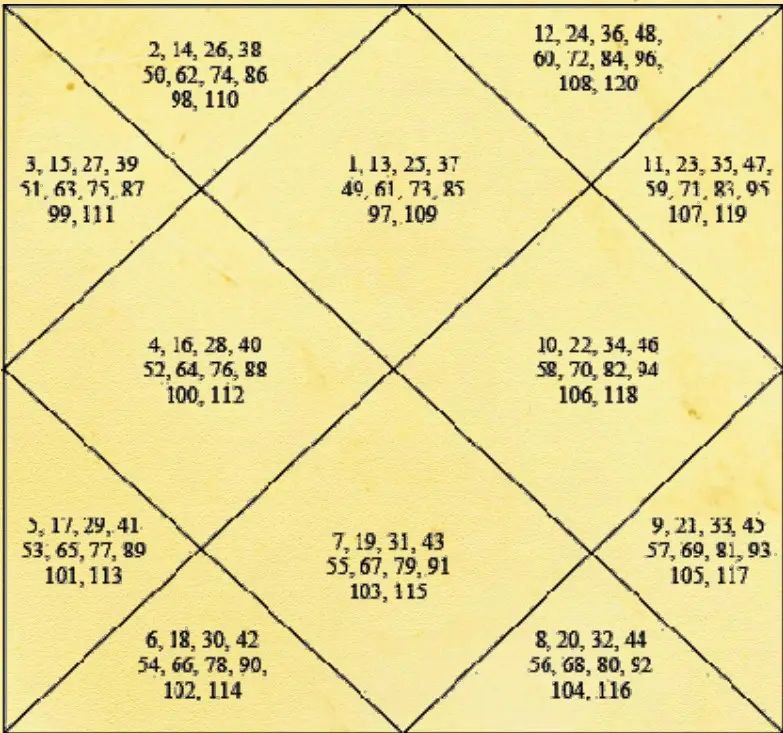
It is said that a reincarnated soul evolves one house forward, and each sign processes the trauma of the sign before it.
Each house in this life was the previous house in your last life (e.g., 1st house now = 2nd house then)
Each sign now carries the grief/emotional imprint of the sign before it (e.g., Taurus grieves Aries)
So, for example, in our native's case, the ascendant is in Scorpio, so in previous life their ascendant was in Libra, and so on:
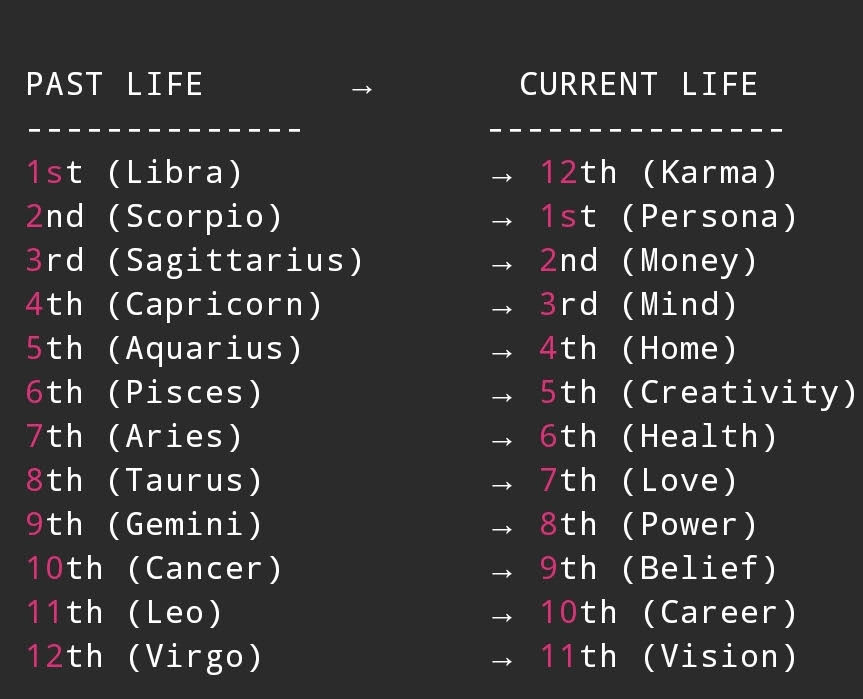
Here's the evolution of native's soul from the previous life:
1. 1st House (Self Identity) – Scorpio
Came from: 2nd House (Taurus themes: money, voice, self-worth)
Grieves: Libra (too accommodating, lost personal voice)
Soul Flow: Libra (I was others-focused) ->
Scorpio (I must reclaim my power), i.e., identity has shifted from harmony to shadow-integration.
2. 2nd House (Resources, Speech) – Sagittarius
Came from: 3rd House (Gemini themes: communication, mental patterns)
Grieves: Scorpio (loss, trauma, betrayal)
Soul Flow:
Scorpio (my values were survival, control) -> Sagittarius (can I trust life and open up?)
3. 3rd House (Mind, Siblings) – Capricorn
Came from: 4th House (Cancer themes: family, roots)
Grieves: Sagittarius (exile, lack of belonging)
Soul Flow:
Sagittarius (knowledge without grounding) -> Capricorn (can I stabilize thoughts and become precise?)
4. 4th House (Home, Foundation) – Aquarius
Came from: 5th House (Leo themes: joy, love, children)
Grieves: Capricorn (burden, coldness)
Soul Flow:
Capricorn (I came from emotional scarcity) -> Aquarius (can I detach and create new emotional blueprints?)
5. 5th House (Creativity, Love) – Pisces
Came from: 6th House (Virgo themes: duty, work, servitude)
Grieves: Aquarius (loneliness, alienation)
Soul Flow:
Aquarius (detached love, outsider lineage) -> Pisces (can I feel love again without losing myself?)
6. 6th House (Work, Health) – Aries
Came from: 7th House (Libra themes: marriage, compromise)
Grieves: Pisces (loss of self in merging)
Soul Flow:
Pisces (I merged, lost self in duty) -> Aries (can I assert myself without guilt?)
7. 7th House (Partnerships) – Taurus
Came from: 8th House (Scorpio themes: power, trauma, control)
Grieves: Aries (raw conflict, volatility)
Soul Flow:
Aries (I fought in relationships) -> Taurus (can I find peace in intimacy?)
8. 8th House (Sex, Death, Shared Resources) – Gemini
Came from: 9th House (Sagittarius themes: belief, truth, freedom)
Grieves: Taurus (lack of safety, silence)
Soul Flow:
Taurus (safety was lost in shared spaces) -> Gemini (can I talk through trauma, not shut down?)
9. 9th House (Beliefs, Higher Mind) – Cancer
Came from: 10th House (Capricorn themes: career, duty, public role)
Grieves: Gemini (fragmented thoughts, missing voice)
Soul Flow:
Gemini (scattered belief systems) -> Cancer (can I feel safe in the vastness of truth?)
10. 10th House (Career, Purpose) – Leo
Came from: 11th House (Aquarius themes: collective, systems)
Grieves: Cancer (emotional abandonment, being unseen)
Soul Flow:
Cancer (emotional entanglement in public role) -> Leo (can I shine with full heart without guilt?)
11. 11th House (Community, Future) – Virgo
Came from: 12th House (Pisces themes: isolation, spirit)
Grieves: Leo (burnout, over-spotlight)
Soul Flow:
Leo (ego tied to tribe or spotlight) -> Virgo (can I serve without superiority?)
12. 12th House (Karma, Spirit, Subconscious) – Libra
Came from: 1st House (Aries themes: pure selfhood, courageous)
Grieves: Virgo (perfectionism, failure to serve fully)
Soul Flow:
Virgo (lost in perfection) -> Libra (can I find peace and beauty without fixing everyone?)
To summarize, the native's soul is healing a past life of imbalance (Libra) and superficial peace, and reclaiming power (Scorpio) and purpose (Leo–Virgo–Capricorn).
This interpretation can be used to understand one's own soul evolution and how to proceed in life smoothly.
Astrology is not about causal forces, but about symbolic resonance between the cosmos and life.
Time has quality, not just quantity. Each moment has a "flavor" it carries, and astrology is the language to read it.
The astrology chart determines the archetypal role that destiny has written for that moment.
The actor who plays it can vary, but the role itself is fixed.
It's like a play, where the script is determined, but different actors can fill the part depending on free will and circumstances.
There are some advanced esoteric techniques, like Nadi leaves, Akashic records, remote viewing, etc., that claim to see reality beyond normal perception with even more accuracy.
In Bhagavad Gita, Krishna tells Arjuna that the warriors of Kurukshetra are destined to die regardless of Arjuna's actions, but as a Kshatriya's (warrior) true nature, Arjuna should fulfill his dharma (duty) and fight for righteousness.
